
Yachts for Sale
Selling a Yacht
Tenders & Toys
Recent Sales
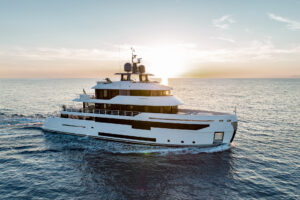
NEVER SAY NEVER AGAIN

Yachts for Charter
Destinations
Experiences
Charter Management
Charter Deals
Yacht Marketing
How to Charter
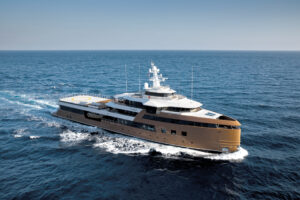
Superyacht Management
Crew Structure
Crew Management
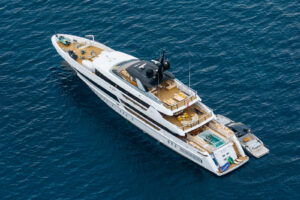
THE WELLESLEY
Superyacht Construction
New Yachts for Sale
Yacht Design
Yacht Shipyards
Custom Construction
Built on Trust
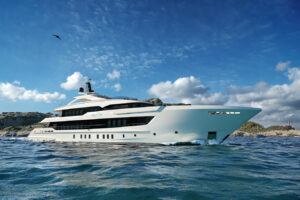
Heesen 55m Steel

Benetti Oasis
Yacht Shows
News & Blog


Grande 35 Metri Yachts for Sale
<< Back to Azimut
Grande 35 Metri for Sale
Grande 35 metri price, about the grande 35 metri, used grande 35 metri yachts for sale.
35m | Azimut yachts | 2022
35m | Azimut yachts | 2019
35m | Azimut yachts | 2021
If there are no brokerage yachts available on the market, you can get in touch with our brokers to find an off market one or build a new one.
related Models

Magellano 76
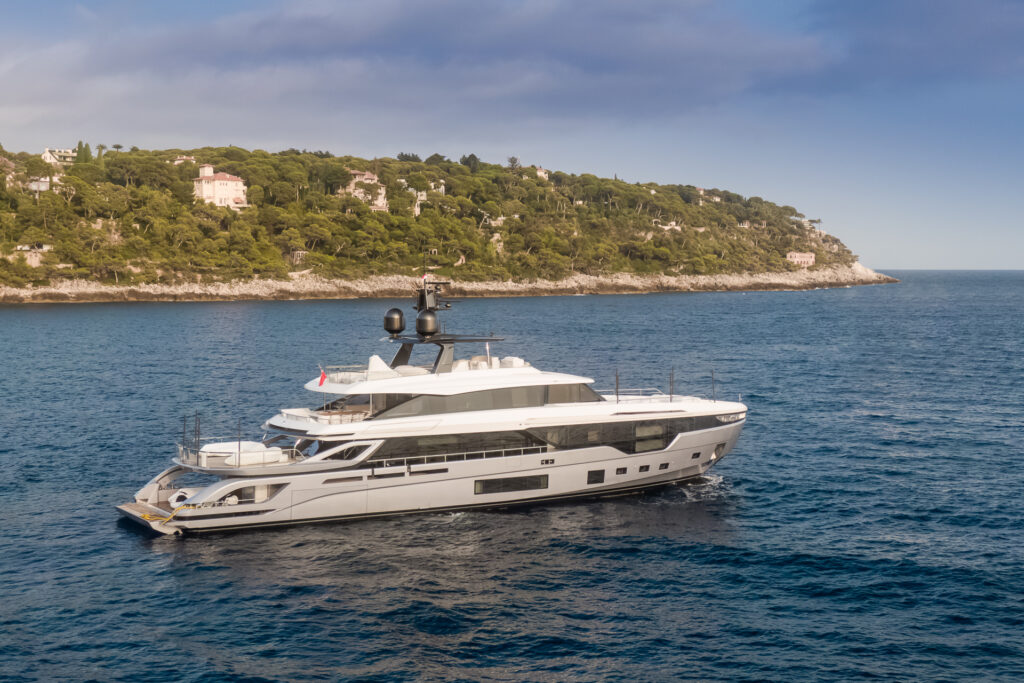
Grande 38 Metri Tri-deck

Magellano 60

Magellano 66
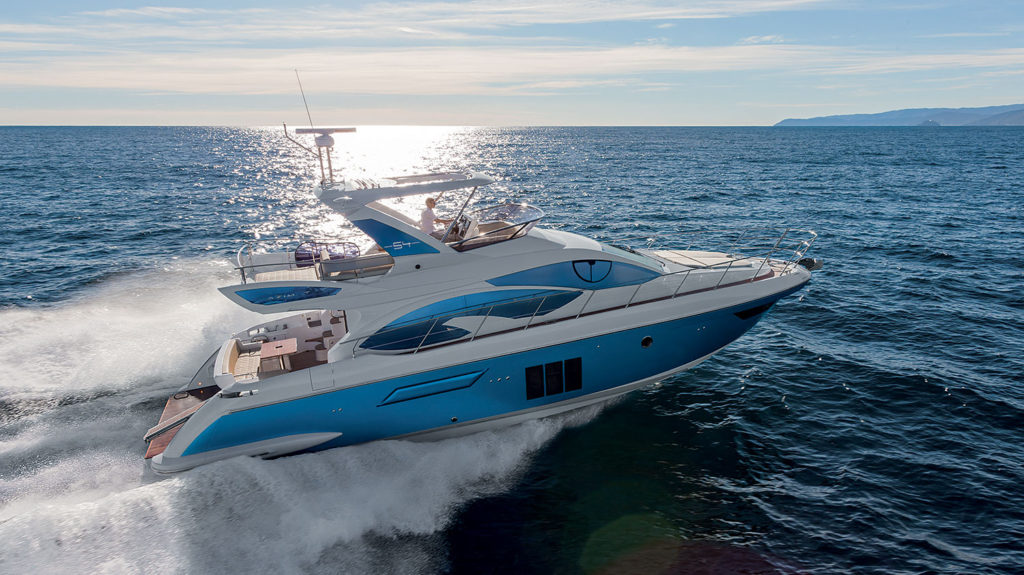
Grande 26 Metri

Grande 35 Metri
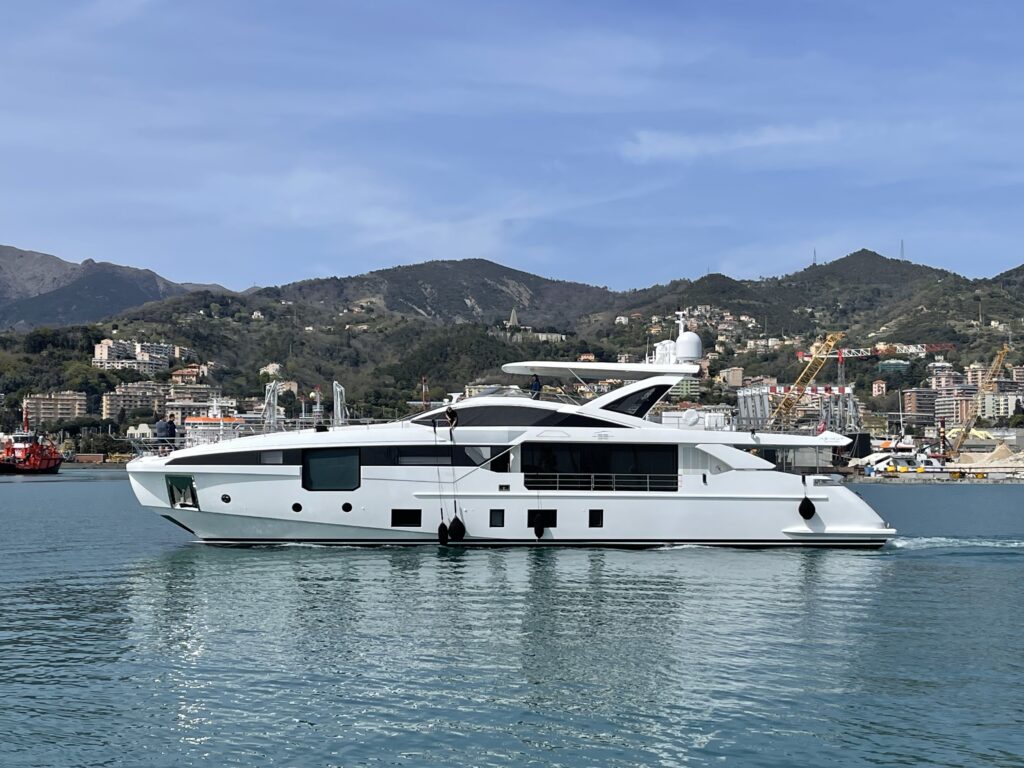
Grande 32 Metri
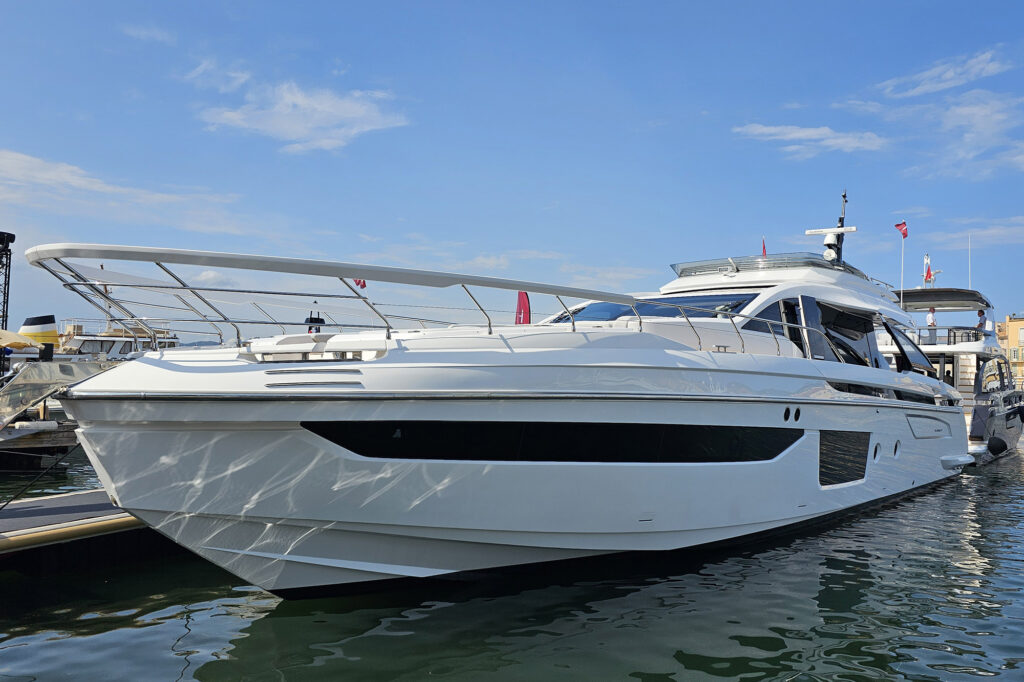
98 Leonardo
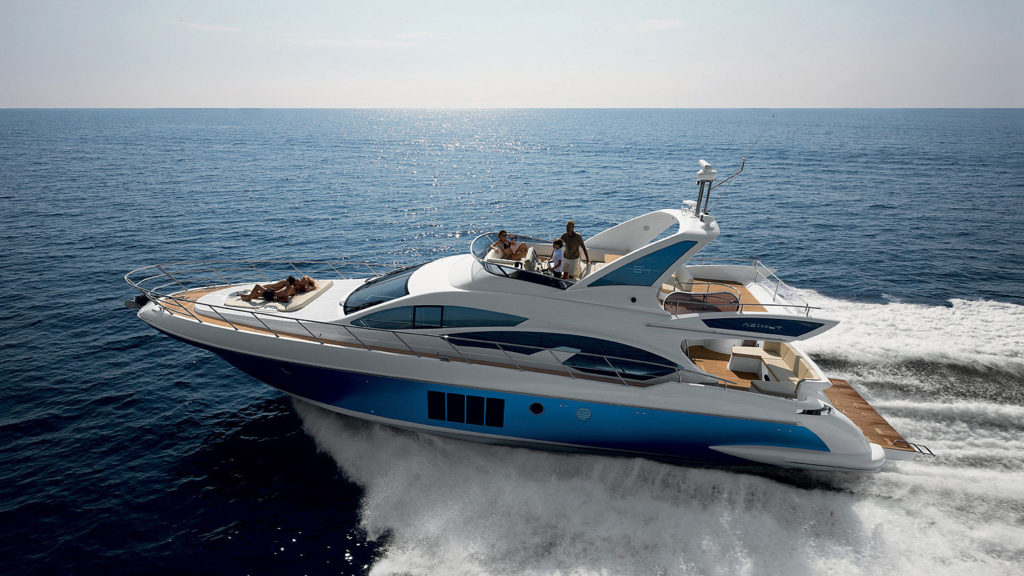
Magellano 30 Metri
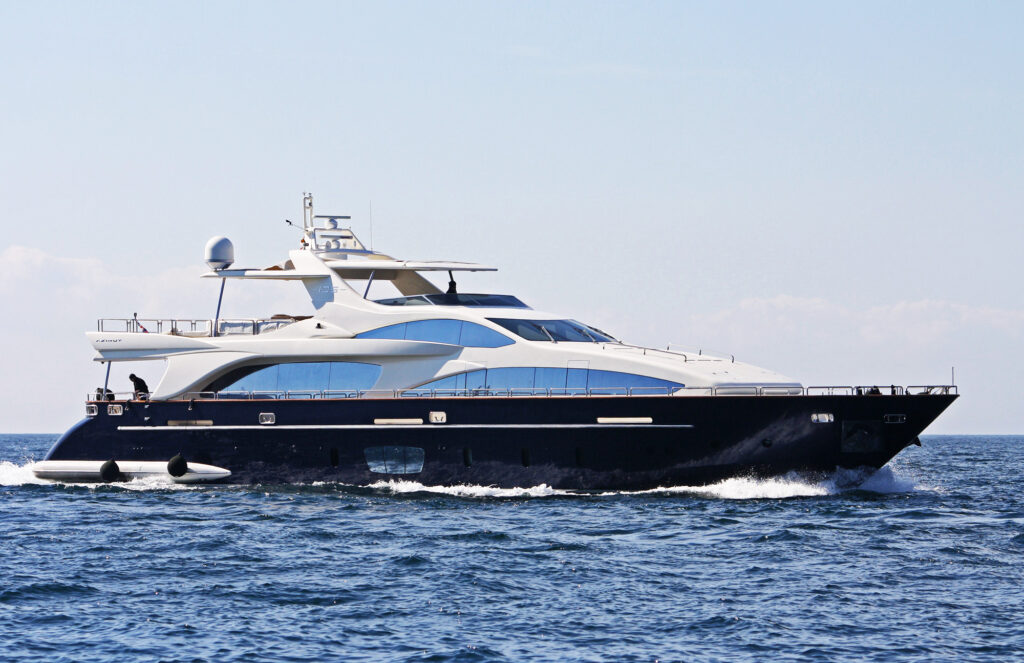
Grande 27 Metri
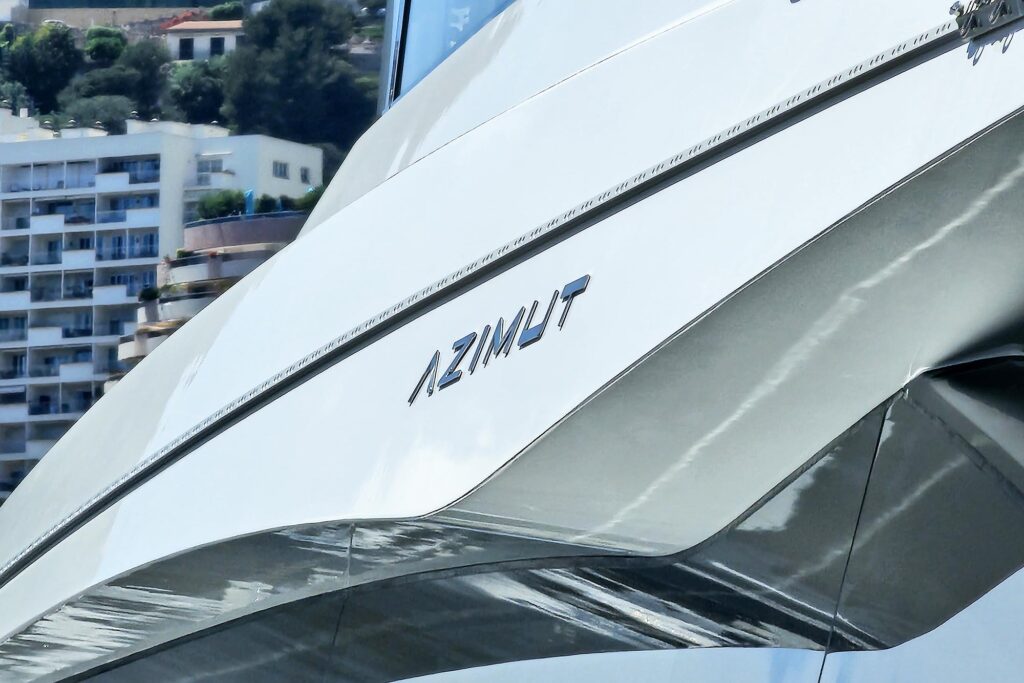
Grande 36 Metri

Grande 25 Metri
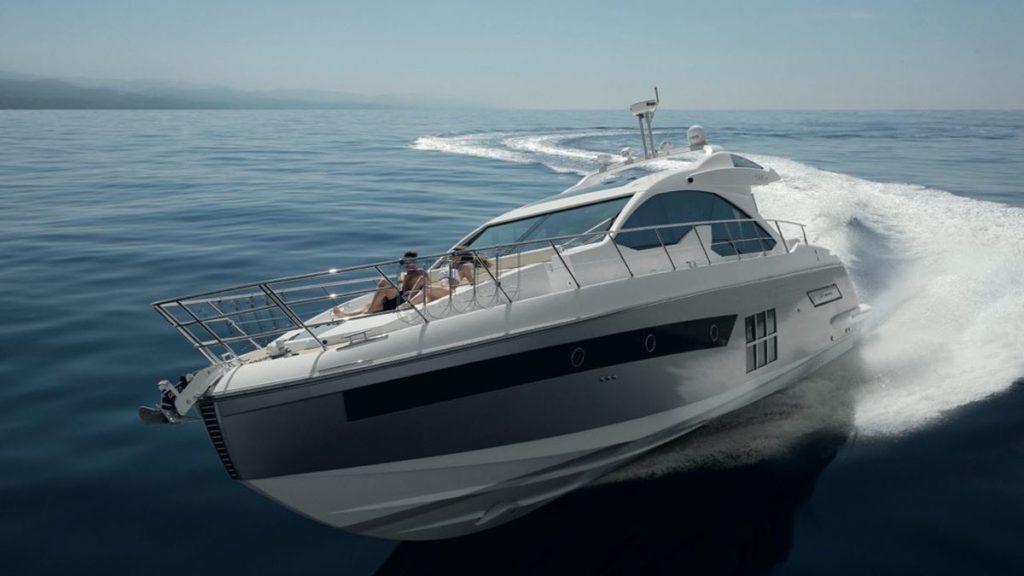
Magellano 25 Metri

YACHTS FOR SALE
YACHTS FOR CHARTER
CHARTER MANAGEMENT
+377 97 77 67 57
SEO by The Agency
REQUEST BROCHURE
Leave us your contact details and our team will be in touch shortly to provide you with your quick request
REQUEST OFF MARKET YACHTS
Leave us your contact detail and our team will be in touch shortly to provide you with your quick request.
REQUEST LAYOUT
Leave us your contact details and our team will be in touch shortly to provide you with your quick request.
REQUEST FULL SPECS

Yachts for sale
Selling a yacht
Recent Sale
Charter Guide
BROKERAGE INSIGHT
Luxury italian yachts.
Register your interest in purchasing a luxury Italian yacht and get our latest insights on the most exclusive yachts for sale, price reductions and special conditions on yacht sales.
THANKS FOR YOUR ENQUIRY
TELL US MORE ABOUT YOUR YACHT SEARCH AND OUR TEAM WILL PROVIDE YOU WITH A RELEVANT YACHT SELECTION.
- Compare Yacht
- Azimut World
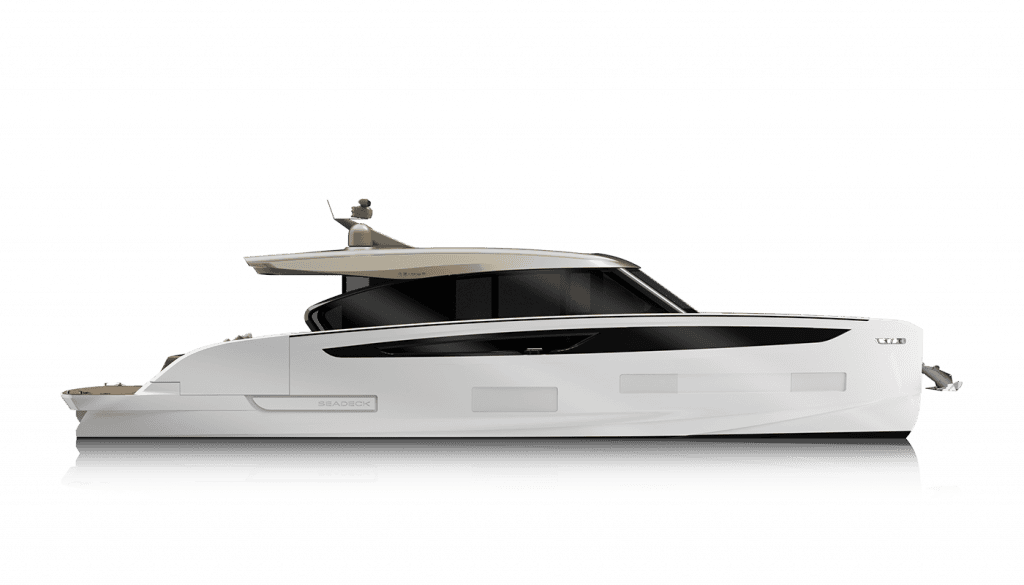
Find a dealer
Charter club, news & events.

M/Y Golden Life
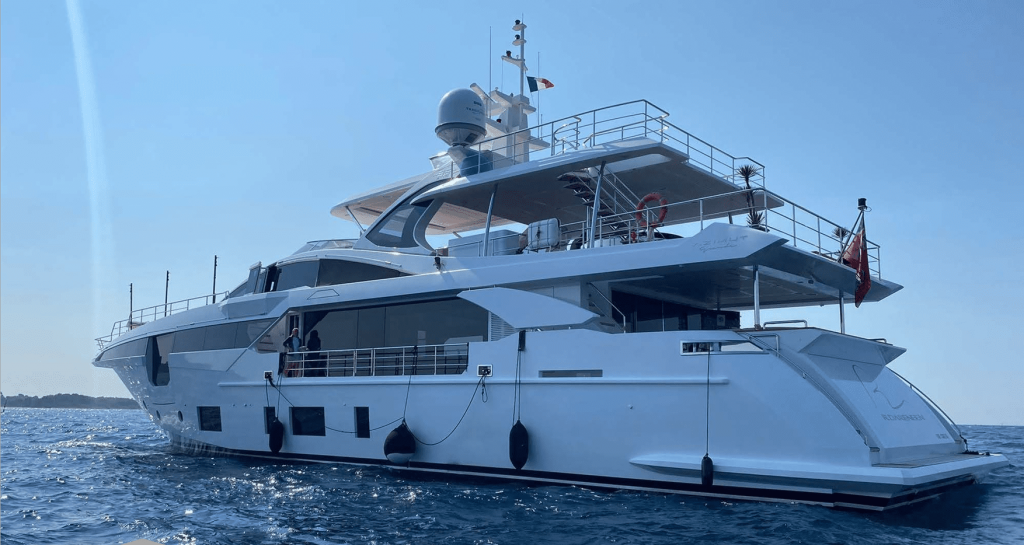
Drawing on Azimut carbon fiber technology and the expertise of Stefano Righini, who defined the concept and designed the exteriors, Grande 35 Metri offers unprecedented solutions for a boat this size, representing a masterpiece of style and space. A wide-body megayacht with the possibility of adding a third level for an additional sundeck, side garage for tender and jet ski and an owner’s suite on the maindeck with a spectacular fold out terrace.

Data summary
- Length overall (incl. pulpit) 35
- Beam max 7,50
- Draft (incl. props at full load) 1,91
- Displacement (at full load) 154 t
- Building material GRP and Carbon Fiber
- Exterior designer Stefano Righini
- Interior designer Achille Salvagni Architetti
- Hull designer Pierluigi Ausonio Naval Architecture & Azimut Yachts
- Builder Azimut Yachts
- Certifications _
- Head compartments 6
- Engines 2 x 2.400 mHP MTU
- Maximum speed (test load) up to 26 knots
- Cruising speed (performance test mass) 21 knots
- Fuel capacity 18.000 l
- Water capacity 3.000 l
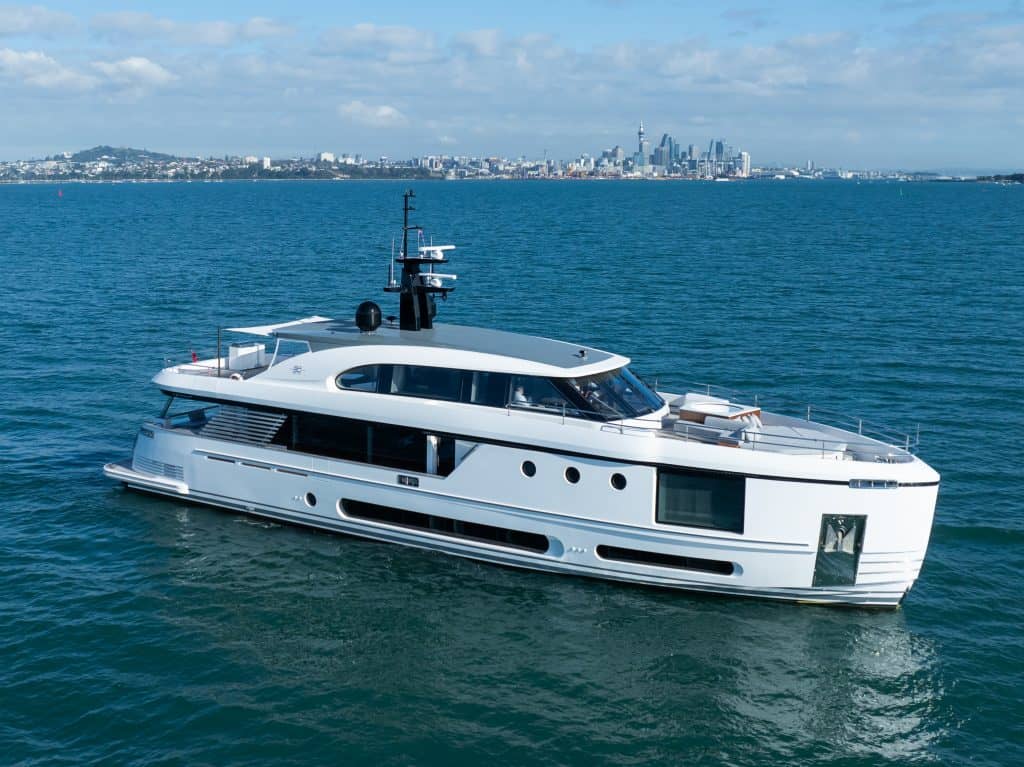
Follow us on WECHAT

Please keep me updated on everything about this yacht.
Non venderemo mai i tuoi dati, manterremo i tuoi dati al sicuro e non condivideremo mai i tuoi dati con terze parti per scopi di marketing. You can update your contact details at any time by emailing [email protected] or change your mind by clicking “unsubscribe” in any email you receive from us.
I have read Azimut Benetti s.p.a. privacy notice and:
I agree to receive the newsletter about Azimut’s world from Azimut Benetti s.p.a.
I agree to receive, via email, informational material regarding Azimut products from Azimut Benetti s.p.a..
We have successfully received your request and will contact you shortly.
Our newsletter will provide you with the latest news, on boat launches, previews and shows.
You will soon receive your first newsletter with the latest Azimut news.
Complete the form below to be contacted by a dedicated dealer who will gladly respond to your questions and requirements.
I agree with the disclosure of my personal data to other companies belonging to Azimut Benetti s.p.a. group and /or to third-party companies affiliated with Azimut Benetti s.p.a. for the sale of its products.
We have successfully received your request. One of our select dealers will contact you shortly.
Specify your request
Fill in the required fields and submit the form.
I have read Azimut Benetti s.p.a. privacy notice.
Thank you for your interest
All you need to know about This yacht.
We will gladly respond to your questions and requirements. Please complete the form below to be contacted.

Azimut 35 METRI Yachts for sale
Azimut 35 metri price and sales info, azimut 35 metri overview, azimut 35 metri specifications.
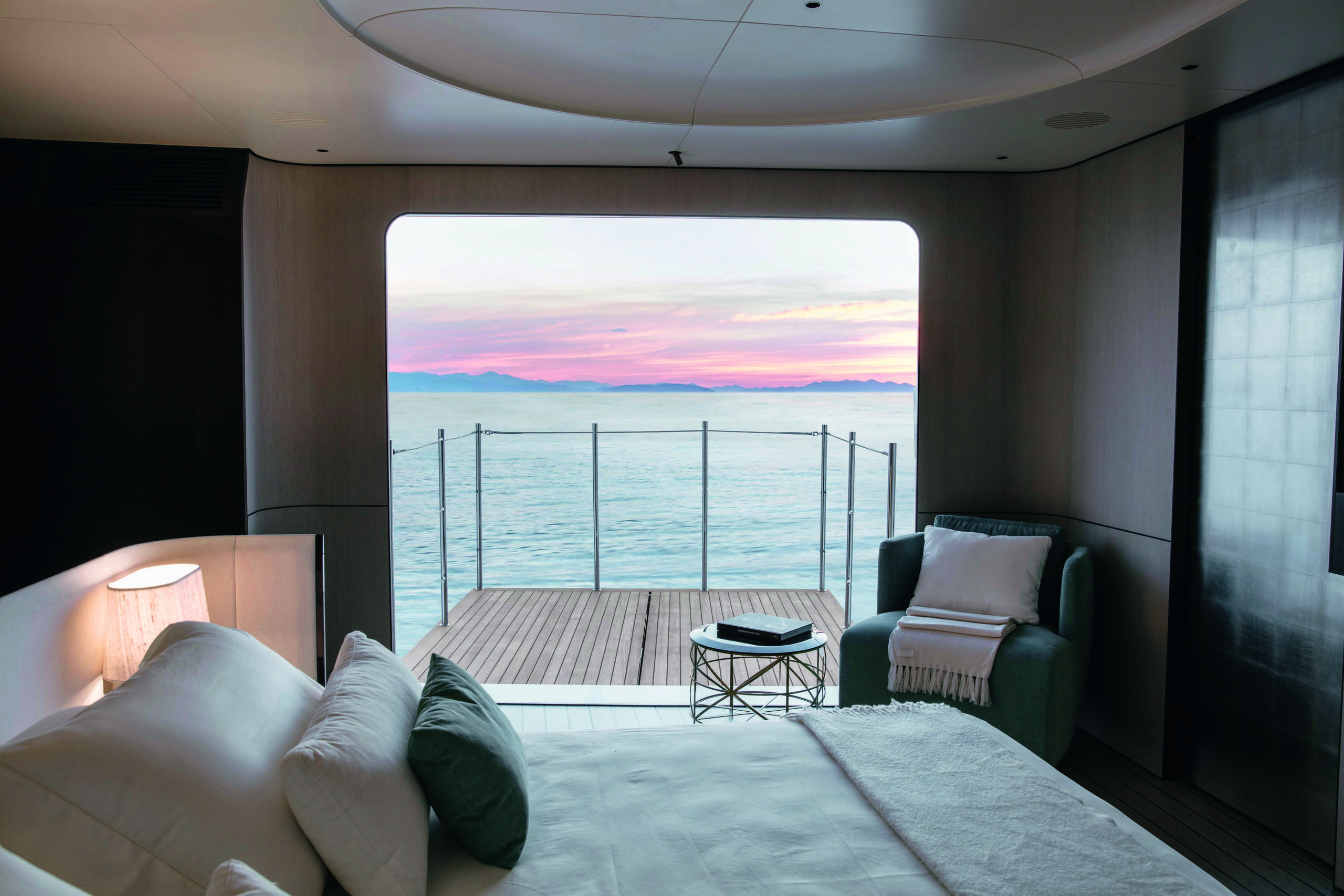
Azimut 35 METRI Description
About azimut 35 metri yacht model:.
Azimut 35 METRI is a series of Motor 115ft/35m superyachts built in in by Azimut. 20 Azimut 35 METRI yachts were delivered so far, with the first of these series, motor yacht MY in 2019 , followed by 2022 Love T , 2021 Long Live , 2021 H of London , 2021 Mikoh , 2017 Sama , 2020 Dagusha V , 2020 Golden life , 2020 Tuma , 2020 Shabby of the Seas , 2020 Lady Lau , 2019 SOL , 2017 MR OH , 2019 VICIOUS RUMOUR II , 2019 IRYNA , 2019 Heed , 2017 Castores , 2018 Amico , 2018 Mijouca , 2018 Partner .
Created to a design of Stefano Righini, 35 METRI has a Planing GRP hull and Carbon Fiber superstructure driven by 2 x MTU 16V 2000 M93 engines to a maximum speed of 26 knots while comfortably cruising at 21 knots. The fuel tank has a capacity of 18000l/3957gal what allows a yacht to cover nautical miles without the need to refuel. Azimut 35 METRI has a beam of 7.5m/25ft. The gross tonnage of this Motor Azimut is gross tons. That shows exactly how much interior space this yacht has.
Azimut 35 METRI can accommodate up to 10 people in 5 elegant staterooms to be assisted by a total of 6 crew members with 4 cabins for crew members.
Accommodation
The Motor Azimut 35 METRI luxury interior sleeps up to 10 guests in 5 staterooms. She is also capable of carrying up to 6 crew onboard to ensure a relaxed luxury yacht experience. Timeless styling, beautiful furnishings and sumptuous seating feature throughout to create an elegant and comfortable atmosphere.
Azimut 35 METRI impressive leisure and entertainment facilities make her the ideal yacht for socialising and entertaining with family and friends.
Construction & dimensions
Azimut 35 METRI features a Planing GRP hull and Carbon Fiber superstructure. She was built to classification society rules.
Azimut 35 METRI is equipped with a Underway and at anchor stabilisation system which reduces roll motion effect and results in a smoother more enjoyable cruising experience underway.
Performance
Powered by 2 x MTU 16V 2000 M93 2 x 2400 HP engines and driven by Shaft drive Motor Azimut 35 METRI is capable of a top speed of 26 knots, and comfortably cruises at 21 knots. With her 18000 litres fuel tanks she has a maximum range of nautical miles economic cruising speed. Her water tanks carry 3000 litres of fresh water.
Purchase Azimut 35 METRI
Azimut 35 METRI is currently available for sale, to find out more about this superyacht please contact your personal Azimut yacht specialist.
Charter Azimut 35 METRI
Azimut 35 METRI is currently not available for charter, to find out more about this superyacht please contact your personal Azimut charter broker.
Azimut 35 METRI Exterior Gallery
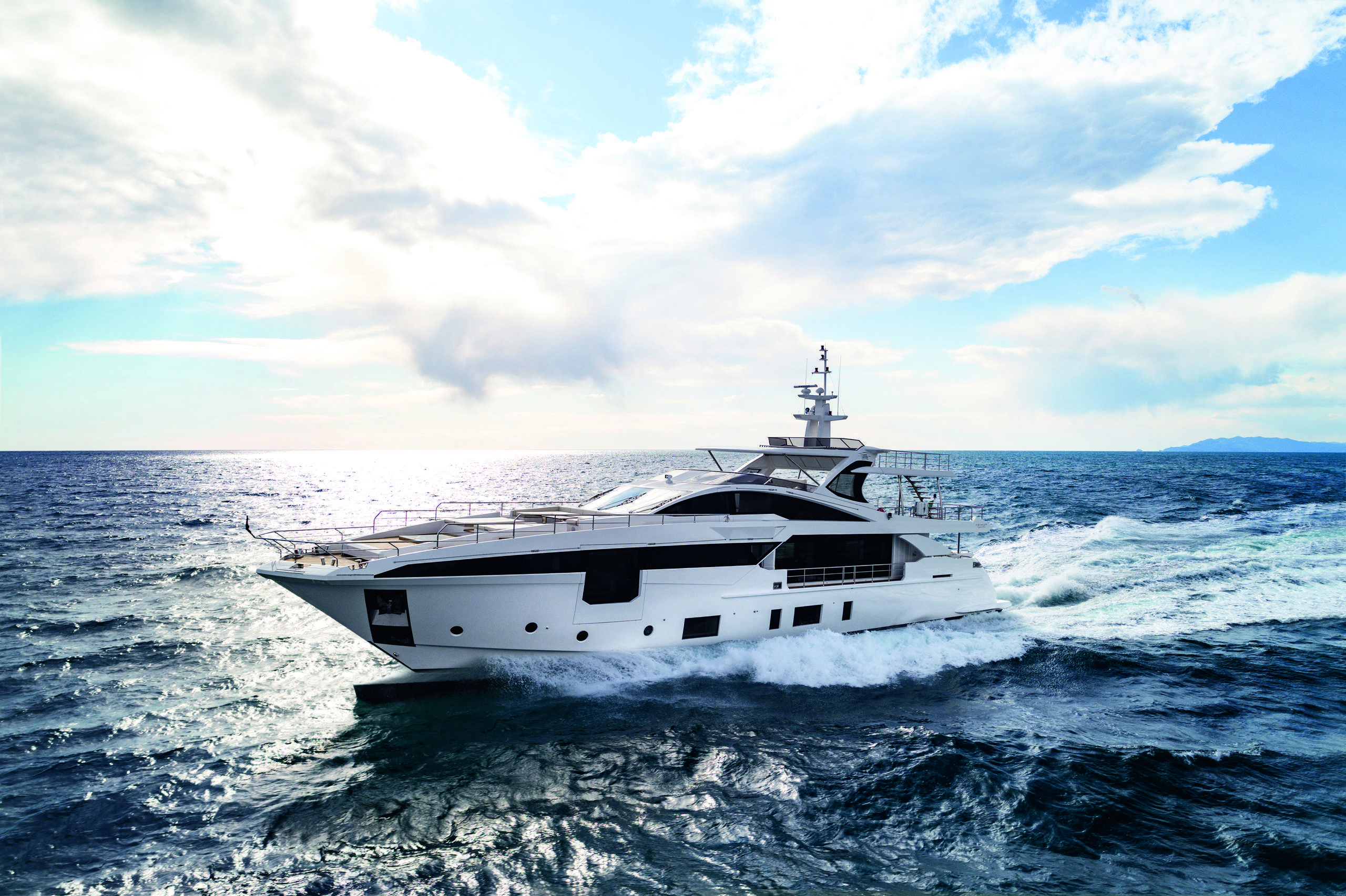
Azimut 35 METRI Interior Gallery

Azimut 35 METRI General arrangement

Virtual tour
Delivered yachts and yacht(s) under construction.
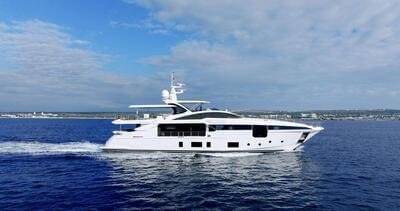
Enquire about Azimut 35 METRI yacht
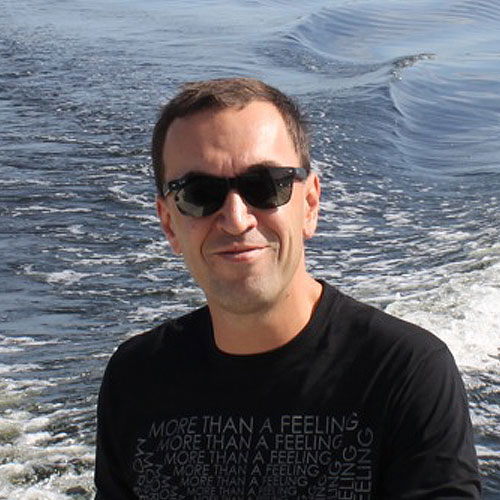
Fill out form and our team will contact you promptly
Explore our yacht selection by features, hull material, azimut grande model range.
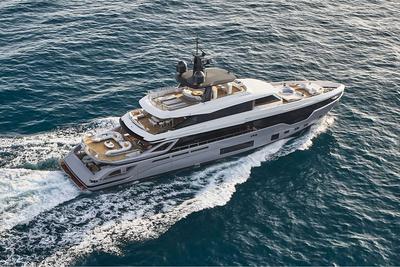
Yachting Events
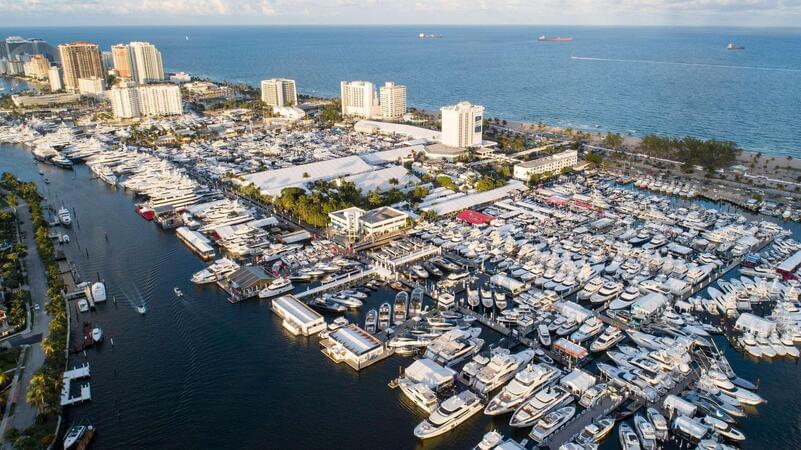
30 October-03 November 2024 Fort Lauderdale Boat Show 2024 Ft Lauderdale, USA
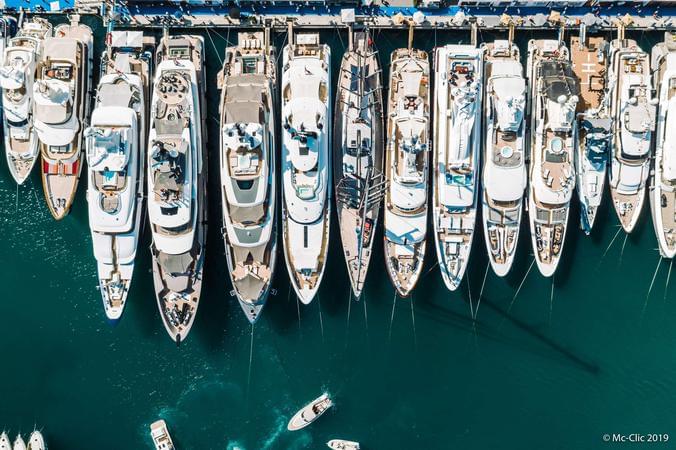
September 25-28 2024 Monaco Yacht Show 2024 Port Hercule, Monaco
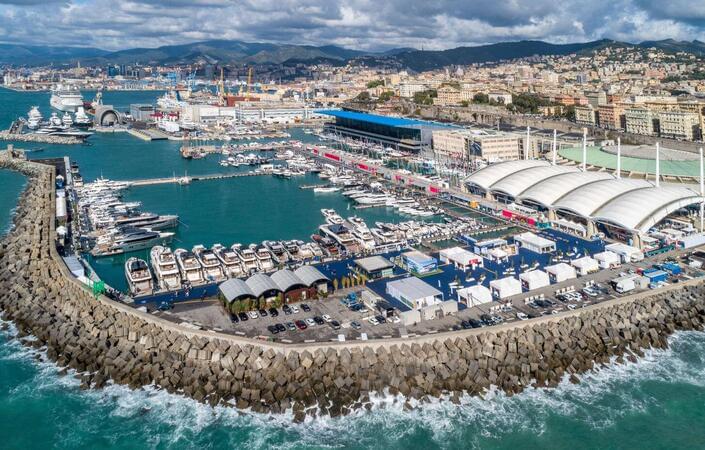
September 19-24 2024 Genoa Boat Show 2024 Piazzale Kennedy, Genoa, Italy
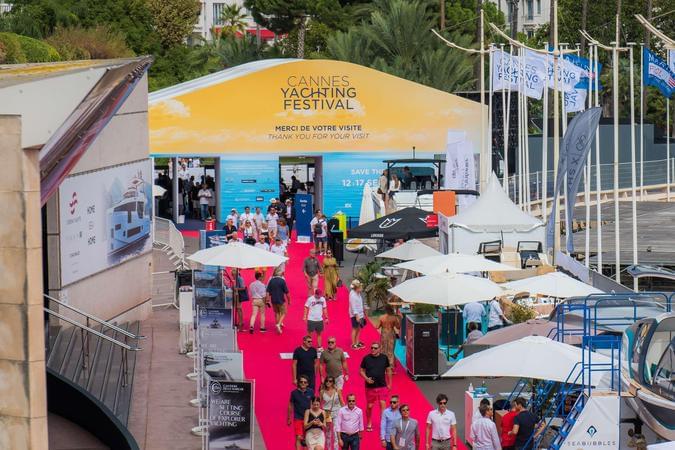
September 10-15, 2024 Cannes Yachting Festival 2024 Cannes, France
Related news and stories, latest news.
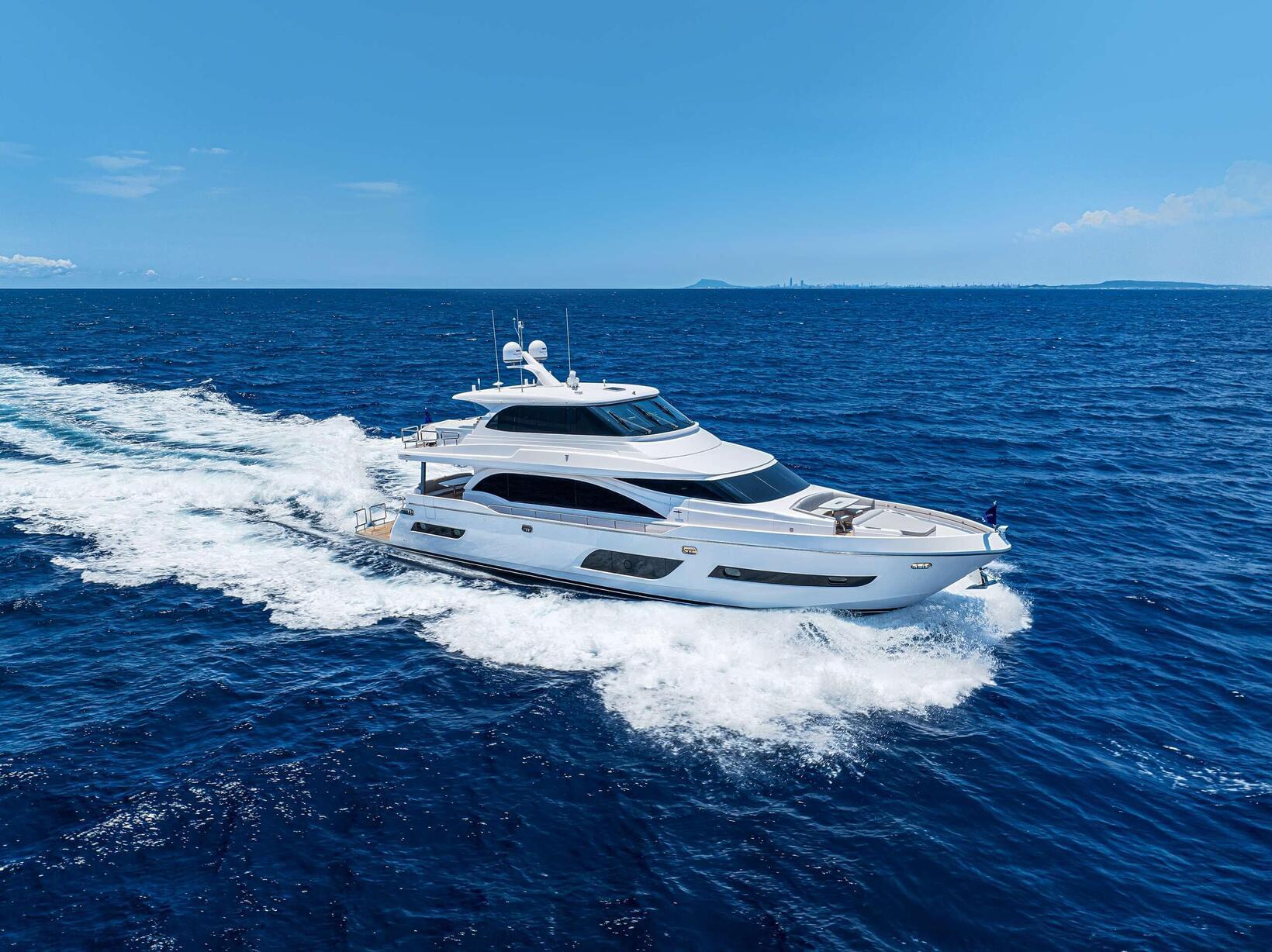
Enter your e-mail & we will send you brochure pdf for
Azimut 35 metri, i am interested in more information about azimut 35 metri, please, let us know your details and the preferred date and time., event: yacht : azimut 35 metri, i want to get an updated list of the boats in the.
- Yacht in pronta consegna
- Yacht nuovi
- Yacht usati
- Maxi Rib nuovi
- Maxi Rib in pronta consegna
- Jet Tender nuovi
- News ed Eventi
Pershing 64′
Anno: 2008 | Lunghezza totale: 20,04 m Prezzo: 1.150.000,00 EUR Iva assolta
Ferretti Yachts 720
Anno: 2022 | Lunghezza totale: 22,30 m Prezzo: 3.590.000,00 EUR Iva assolta
Pershing 5X
Anno: 2023 | Lunghezza totale: 16,51 m Prezzo: 1.350.000,00 EUR Iva non assolta
Anno: 2003 | Lunghezza totale: 17,48 m Prezzo: 400.000,00 EUR Iva assolta
Ferretti Yachts 500
Anno: 2022 | Lunghezza totale: 15,33 m Prezzo: 1.080.000,00 EUR Iva non assolta
Ferretti Yachts 700
Anno: 2017 | Lunghezza totale: 21,60 m Prezzo: 2.390.000,00 EUR Iva assolta
Azimut 80′
Anno: 2015 | Lunghezza totale: 25,24 m Prezzo: 2.800.000,00 EUR Iva assolta
Pershing 62′
Anno: 2020 | Lunghezza totale: 18,48 m Prezzo: 1.850.000,00 EUR Iva non assolta
TROVA LO YACHT CHE FA PER TE
19-24 Settembre

Azimut Grande 35 Metri (2019)
Asking price.
8,800,000 €
Tax Not Paid
Azimut Grande 35 Metri Superyacht for Sale – 2019 – Lying Tuscany, Italy – Stabilized – Full Options – 5-Cabin Layout, Master on Main Deck
| Year built: | 2019 |
|---|---|
| Length: | 35.17 m (115 ft) |
| Cabins: | 5: Master (Double) on Main Deck, 2 VIP (Doubles), 1 Double, 1 Twin |
| Guests: | 10 |
| Crew: | 6 |
| Located in: | Italy, Livorno |
| Broker Ref. No: | AZIMUT GRANDE 35 METRI – 2019 – For Sale |
Azimut Grande 35 Metri (2019) Description
eaturing an innovative hull design, built in fibreglass & carbon fibre, allowing navigation from displacement to planing modes, this fine example AZIMUT GRANDE 35 METRI motor yacht was built in 2019 to a very high specification by the Italian shipyard Azimut Yachts.
This 115’ 5” AZIMUT GRANDE 35 METRI Tri-deck yacht is for sale, and offers unprecedented solutions for a boat this size, representing a masterpiece of style and space. A wide-body Superyacht with a third level for an additional sundeck, side garage for tender and jet ski, a large beach club in the stern and a beam-wide Owner’s suite on the main deck with spectacular views to the sea.
This motor yacht’s interior has been designed by Achille Salvagni. She has a powerful classic beauty combined with elegant interior, tastefully decorated in a contemporary style, while her hull and naval architecture were penned by Pierluigi Ausonio and the Azimut Research and Development Department, and her exterior styling and design are the work of Stefano Righini. With a gross tonnage of 269 GT and a 7.5m beam, she offers splendid volumes inside and outside. She is one of 19 GRANDE 35M models built to 2021.
Boasting comfortable accommodation for up to 10 guests in 5 en-suite staterooms, she is a great example of quality and style, well equipped with comfortable zero-speed stabilizers, sate-of-the-art entertainment equipment, all the amenities and air conditioning throughout.
The yacht’s interior configuration comprises an on-deck and beam-wide master suite, 3 double cabins and 1 twin cabin. She is also capable of carrying up to 6 crew onboard in 4 cabins to ensure a relaxed luxury yachting experience.
Powered by twin 2400 Hp Diesel engines, this AZIMUT GRANDE 35 METRI motor yacht is capable of a top speed of 28 knots, and comfortably cruises at 22 knots, with a considerable range of 1500 nm at economical cruising speed up to 12 knots.
Early offers and viewings are highly recommended.
KEY FEATURES
- Competitively priced
- Immaculate condition
- 5-Cabin Layout for 10 Guests, Owner’s Suite on Main Deck offering formidable sea views
- Zero-speed stabilizers
- Azimut D2P® displacement to planing hull combining the comfort typical of a displacement hull with the performance of a planing hull and significantly improving fuel efficiency. This innovative feature is based on a double chine hull design with wave piercer which allow the yacht reaching high top speeds without needing particularly powerful engines or navigate in displacement mode with a remarkable range at a cost-effective speed. The hull has been optimised for the full range of most frequently used speeds of 10-12 knots and cruising speeds in semi-displacement mode
- Side garage for a 5-meter tender plus a 3.25-meter jet-ski, leaving the stern completely free for a magnificent 12 m2 beach area provided by the big pivoting swim platform
- Some Transferable Warranties possible
MAIN CHARACTERISTICS
- Builder: Azimut Yachts (Italy)
- Model Azimut Grande 35 Metri
- Exterior Styling & Concept: Stefano Righini
- Hull Designer: P.L. AUSONIO Naval Architecture & Azimut R&D Dept.
- Interior Designer: Achille Salvagni Architetti
- Type: Motor-Yacht / Superyacht / Tri-deck Yacht
- Hull Type: Semi Planing
- Keel: Planing with wave piercer
- Hull Material: Carbon Fiber + GRP
- Superstructure Material: Carbon Fiber + GRP
- Decks: Teak
- Year Built: 2019
- Length Overall (incl. pulpit): 35.17 m (115′ 5″)
- Length at Waterline: 28.52 m (93′ 7″)
- Beam Max: 7.50 m (24′ 7”)
- Draft (incl. props at full load): 1.91 m (6′ 3”)
- Displacement (at full load): 154,000 Kgs (339,512 Lb)
- Gross Tonnage: 269 GT
- Class: RINA Pleasure Yacht C ✠ HULL · MACH Y
- Flag of Registry: United Kingdom
- Lying: Livorno, Italy
- Type / Fuel: Twin Screw Diesel
- Main Engines: 2 x 2400 Hp (1790 kW) MTU 16V 2000 M96
- Engine Hours: 870 h (Nov. 2021)
- Maximum Speed: Up to 28 Knots
- Cruising Speed: Up to 22 Knots
- Economical Cruising Speed: Up to 12 Knots
- Range @ Economical Cruising Speed: 1500 nm
- Gear Boxes: 2 x ZF 3360, Ratio 3.519:1
- Shafts: AQUAMET 17
- Propellers: 2 x 5-blade NiBrAl
- Fuel Capacity: 18,000 l (4,755 US Gal)
- Fresh Water Capacity: 3,000 l (792 US Gal)
- Holding Tank Capacity: 1,250 l (330 US Gal)
- Grey Water Tank Capacity: 1,250 l (330 US Gal)
ACCOMMODATION
- 5 En-suite staterooms for 10 guests
- Master cabin on main deck with double island bed, study, opening balcony on portside with automatic handrails, walk-in wardrobe, his & hers en-suite bathroom
- 2 x VIP cabins belowdecks, each with double island beds, closets, en-suite bathrooms
- 1 x Twin cabin belowdecks, with single beds, closets and en-suite bathroom
- 1 x Double cabin belowdecks, with closets and en-suite bathroom
- Day-head on main deck with hand shower
- 4 Crew cabins for 6 crew, each with en-suite facilities
- Interior Woodwork: Oak light wood matt mostly, combined with Mahogany dark wood 100% gloss
- Electrical Systems: 400V AC / 50 Hz / 24V / 12V
- Generators: 2 x KOHLER 70 kW
- Generator Hours: Port 1960 h, Starboard 2070 h (Nov. 2021)
- Main Machinery: 400V AC / 50Hz / 3 phases
- Lighting and Household Appliances, Stereo, TV sets, and other Low Power Users: 230V AC / 24V AC, single phase
- Emergency Lighting System: 24V DC battery system
- Service Equipment: 24V DC battery system
- Radio Equipment: 24V DC battery system
- AC Power: Supplied by 2 x Diesel generators or by a shore power system
- Shore Power: 125 A shore power connector
- Transformer: 80 KVA 400 V AC (inlet) / 400 V AC (outlet) shore insulating transformer
- All batteries in GEL or AGM-type according to their application
- Radio Batteries: 1 x group of 24V DC batteries for radio equipment
- Service Batteries: 1 x group of 24V DC batteries for services
- Engines Start-up: 2 x groups of 24V DC batteries for main engines starting
- Generators Start-up: 2 x groups of 12V DC batteries for diesel generators starting
- Main Engines Electronics: 2 x groups of 24 V DC batteries for main engines electronics
- Motorpump Starter: 1 x group of batteries for motorpump starter
- Emergency Batteries: 1 x group of 24V DC batteries for emergency
- Battery Chargers: Alternator on each main engine and generator, in order to charge the related battery set
- Manual/automatic Battery Chargers: 1 x main engine starter battery set charger, with charging divider, 1 x diesel generator starter battery set charger, provided with charging divider, 1 x service battery set charger, 1 x emergency battery set charger, 1 x radio battery charger, 1 back-up battery set charger for emergency-service-R/T, 1 x MMEE electronic battery set charger, provided with charging divider, 1 x battery charger for motorpump’s starter
MAIN EQUIPMENT
- Stabilizers: 2 x CMC electrical zero-speed fin stabilizers (CMC Stabilis Electra SE80-7-4-160)
- Bow Thruster: Electrical bow thruster (CMC BTM60EA) with an electrical motor having 45 kW input nominal power supplied by generators, Voltage 400 Vac, 3 phases, 50Hz, duty cycle S6-40%, propeller thrust 720 kgf
- Bilge Pumps: 1 x electric self-priming pump in the engine room for main bilge system, connected with the motorpump. 1 x dedicated electric pump will be installed for the garage bilge system
- Motorpump: 1 x motorpump for bilge and fire systems
- Watermaker: 1 x reverse osmosis watermaker (IDROMAR MC3J) with capacity 180 l/h
- Water Heaters: 2 x electric hot water stainless-steel heaters with total capacity of 200 l (53 USG), resistance 3+3 kW for each heater
- Fresh Water Steriliser, Filters: Active carbon filter installed between freshwater pumps and the users
- Steering System: 1 x electrical actuator in the wheelhouse, 1 x electrical actuator in the external console, placed on flybridge, 1 x hydraulic power pack (fitted in the aft technical room on portside), with 2 x 400V electric pumps and one oil tank. Hydraulic actuator with steering wheel in the aft technical room, for emergency manoeuvring
- Summer Outside air 35 °C (95 °F) R.H. 80%, Inside air 22 °C (72 °F) R.H. 50%, Sea water temperature 32 °C (90 °F)
- Winter Outside air 0 °C (32 °F), Inside air 22 °C (72 °F), Sea water temperature 10 °C (50 °F)
- Fan coil units installed in interior living areas. Air handling units supplying fresh air to all living areas
ADDITIONAL OPTIONS
- RINA Pleasure classification
- Hard Top with sliding soft top on flybridge
- Upgrade of generators to KOHLER 70 kW-50Hz
- One GLENDINNING cablemaster (CM8, length of cable 20 m)
- Telephones in all areas (1 master ad 10 slaves)
- PANASONIC PABX central unit (model KX-TDA100DCE)
- LED lights on ceiling in all internal areas
- LED lights on ceiling in all external areas
- Dimmers for external lights (cockpit and flybridge)
- Remote controls for main engines and bow thruster (MTU) in cockpit and on flybridge
- EPIRB E5 Smartfind Solas (McMURDO model MM82-800-004A)
- 4 x Cameras HIK Vision (2 in flybridge and 2 in aft cockpit) + 1 HIK camera in the engine room
- Empty Dome HD 11
- SAT TV KVH HD11
- Electric stern thruster
- Spotlights on aft flybridge or aft radar arch (recessed in the fiberglass) – 6 x LED spotlights FLEXA model PW1922
- 7 x Underwater lights under swim platform
- Swivelling stools in stainless steel with cushion, backrest, and footrest
- Double RACOR filters for generators
- ALFA LAVAL fuel filtering system
- Double Bed in one of the guest cabins
- 1 x Safe (JUWEL 7826) in captain’s cabin
- Additional soundproof insulation between salon and engine room
- Additional soundproof insulation between master cabin and forward chain locker
- Electric awning in the aft flybridge
- Upgrade of the lighting plan (12 x additional sockets, 6 x USB plugs)
- 30M MONTECARLO pilot seat
- Automatic parallel between generators
- Complete painted hull and superstructure, including antennas (Awlgrip/Awlcraft) snow white
- UPS Unit for A/V System
- Wi-Fi COM package
- Full height cabinets
- Dedicated space to 2 fishing rods & 2 Seabobs
- 1 x Umbrella next to the BBQ
- Bar cabinet in the aft cockpit with sink and icemaker
- Aft capstans with 2 ways
- 2 x Additional aft cleats on the stern
- Anchor chains 150m (diam. 12mm)
- Predisposition of MARQUIPT ladder
- No Jacuzzi on bow. Teak floor and storage underneath (with two lockers on the sides)
- Stainless-steel handrail upholstered with leather on the staircase in onyx
- Bidet in Master’s head
- Hand shower next to each WC (excluding Master’s head)
- 2 x SOFTHOUSE TONDA swivelling armchairs in Master’s cabin
- Roman shades in Master’s cabin and saloon
- Exterior Marbles: Aft cockpit table as per 35M std with the Neolith top instead of teak
- Exterior Marbles: fwd table as per 35M std with the Neolith top instead of teak
- Master’s, VIP, day and guests heads tops in Neolith Calacatta gold instead of Bianco Carrara std
- Master’s, VIP, day and guests heads sinks in Neolith Calacatta gold instead of Bianco Carrara std
- Stdb Bar: 2 tops in Neolith instead of stainless-steel + a Neolith cover for the sink
- Master’s, VIP, day and guests heads std bulkheads in Neolith Calacatta gold instead of Bianco Carrara std
- Modification of the garage for the Jet Ski
- Flybridge BBQ top in Neolith Calacatta Gold Polished in lieu of teak
- Flybridge portside cabinet top in Neolith Calacatta Gold Polished in lieu of teak
- Flybridge bar top in Neolith Calacatta Gold Polished
NAVIGATION, COMMUNICATION AND ELECTRONIC EQUIPMENT
- MTU electronic engine throttles
- Upgraded navigation Platinum package RAYMARINE including:
- 2 x Multifunction displays AXIOM XL 24 – 24’’
- 2 x Remote Control RMK-10
- 1 x Transducer B744VL
- 1 x CP100 Fishfinder Chirp
- 1 x CPT-12 Transducer Chirp
- 1 x Radar Magnum base 4kW
- 1 x Antenna Radar Magnum 48’’
- 1 x Radar Magnum base 12kW
- 1 x Antenna Radar Magnum 72’’
- 1 x Antenna GPS RS150 GPS/GLONASS
- Navigation Instrument: 1 x AXIOM 7 Display Multifunction 7’’ Wi-Fi e-Touch
- Autopilot: 1 x Autopilot control unit P70RS, 1 x ACU-300 Actuator control unit
- VHF: 1 x VHF RAY90, 1 x V/067 Antenna VHF Spark, 1 x Speaker Ray 90/91
- Network HUB: 2 x HUB FURUNO
- 2 x Multifunction displays A XL 1+ – 15,6’’
- Navigation Instrument: AXIOM 7 Display Multifunction 7’’ Wi-Fi e-touch
- VHF: 1 x Raymic 2’’ station RAY60/70/90, 1 X Speaker Ray 90/91
- Emergency Steering: 1 x Display I70S 4’’, 1 x Rudder angle indicator
- Log: 1 x Speed-log system included in navigation system
- Echosounder: 1 x Echosounder included in navigation system
- Horn: Pneumatic horn with dedicated compressor

ENTERTAINMENT EQUIPMENT
- Upgraded A/V Package
- 1 x 32’’ TV SAMSUNG
- 1 x Mini Hi-fi player YAMAHA MCR-750
- 2 x Loudspeakers PROMAR 6” PMS6
- 1 x TV 32’’ SAMSUNG
- 1 x Blue Ray player SONY BDPS590
- 1 x Amplifier DENON AVR-X1100
- 1 x Pair of loudspeakers B&W CCM362 (Square)
- 1 x 43’’ TV SAMSUNG
- 1 x Pair of loudspeakers B&W CCM362
- 1 x Apple TV
- 1 x Car stereo SONY
- 32’’ TV SAMSUNG
- 1 x Mini Hi-fi YAMAHA CRX-N560 CD
- 1 x 49’’ LED TV SAMSUNG 4K Smart TV with concealing mirror
- 1 x Amplifier BOSE V35
- 1 x 55’’ LED TV SAMSUNG 4K Smart TV
- 1 x 43’’ LED TV SAMSUNG Smart TV
- 4 x Loudspeakers PROMAR 8” PMR8
- 1 x Amplifier BOSE SA-3
- Predisposition for TV
- Outdoors cinema on flybridge AVIELO QUANTUM by Projection design
- 2 x Loudspeakers PROMAR 8” PMR8
- 1 x Amplifier BOSE SA-2
DOMESTIC APPLIANCES
- 1 x Saloon Bar Ice Maker ISOTHERM
- 1 x Minifridge ISOTHERM
- 1 x Washing Machine MIELE
- 1 x Drying Machine MIELE
- 1 x Fridge ISOTHERM
- 1 x Cooking Top 90cm 1 MIELE
- 1 x Exhaust Hood MIELE
- 1 x Oven 90cm MIELE
- 1 x Microwave MIELE
- 1 x Dishwasher MIELE
- 1 x Freezer ZANUSSI
- 2 x Fridges ZANUSSI
- 1 x Ice Maker ISOTHERM
- 1 x Bar Minifridge ISOTHERM
DECK EQUIPMENT
- Windlasses: 2 x electric windlasses of the vertical type on a recessed stainless-steel plate, locally controlled, 400 Vac, 3 phases, 50Hz, 4 kW
- Capstans: 2 x electric foot-operated vertical capstans on aft deck, locally controlled, 400 Vac, 3 phases, 50Hz, 3 kW
- Mooring Bollards: Polished AISI 316L stainless-steel bollards, 2 on the aft main deck, 4 on the forward main deck
- Roller Fairleads: Polished AISI 316L stainless roller fairleads, 4 on the forward main deck, 2 on the aft main deck
- Anchors: 2 x galvanised steel VHHP (very high holding power) anchors of 120 kg each
- Anchor Chains: 2 x studless chains made in galvanised steel of 12 mm diameter link, length of each chain 150 m
- Rudders: 2 x spade rudders (0,6 sqm), made of AISI 316L
- Gangway: Telescopic retractable stern gangway, hydraulically operated and connected to the power pack unit, used also for other equipments, in polished stainless-steel frame and teak grating, operated by remote control
- Swimming Ladder: 1 x upgraded swimming ladder in AISI 316 stainless steel, with teak steps on side of the bathing platform
- Hard Tops: GRP rollbar and 2 x GRP hard tops (fwd and aft) with integrated sliding awnings
- Soft Tops: 2 x motorized awnings fitted on the flybridge, inside the GRP hard tops, to cover the outdoors living area
- Additional sundeck in lieu of standard aft hard top, with antiskid flooring
- Tender & PWC Handling System: Handling systems for tender and PWC, including electro-hydraulic winch and stainless-steel sleigh with rollers
SAFETY & SECURITY EQUIPMENT
- Fire Extinguishers: Portable CO2/foam/powder fire extinguishers
- Fire Nozzles: Sea water nozzles, feeded from fire main, installed in garage as firefighting devices
- Fireman Axe: 1 x fireman axe
- Life Rafts: 2 x life rafts for 10 people each, installed on flybridge
- Life Buoys: 2 x with buoyant line, on flybridge
- Parachute Flares: Parachute flares (6 pieces) and smoke signals (6 pieces)
- Life Jackets: 16 x life jackets
- Engine Room Fire Extinguishing System: FM 200 fixed fire extinguishing system for engine room, with adequate nozzles and a release handle fitted on the emergency control panel situated near the access to the engine room/garage area
- Fire Alarm System: Fire alarm system with heat or smoke detectors fitted throughout the yacht
- Engine Room Fire Dampers: 2 x fire dampers to close the engine room ventilation trunks
- Fire Pump: 1 x electric self-priming pump in the engine room for sea water fire extinguishing system, connected with the motorpump
- Emergency lighting system
- Emergency Stop system
- WILLIAMS 445 DieselJet
| For more details of Azimut Grande 35 Metri (2019) download PDF files | |
|---|---|
| Specification PDF | |
| Additional info PDF | |
Boat Location
See All AZIMUT Yachts
See All Super Yachts
Enquire now about this boat
Call: +336 75 96 41 41 | WhatsApp | Telegram E-mail: [email protected]
Or, please, send us your enquiry and we will get back to you shortly.
Your Name (required)
Your Email (required)
Please leave this field empty.
Your Phone (required)
Your Message
Share this entry
- Share on Facebook
- Share on Twitter
- Share on WhatsApp
- Share on LinkedIn
- Share on Reddit
- Share on Telegram
- Share by Mail
You might also like
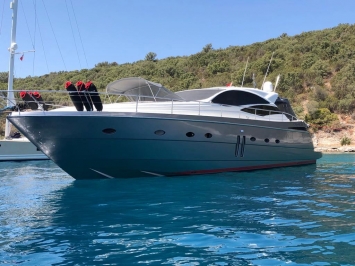
Pershing 62 (2006)
| Price: | 595,000 € |
|---|---|
| Length: | 19.43 m |
| Year built: | 2006 |
| Located in: | Turkey, Bodrum |
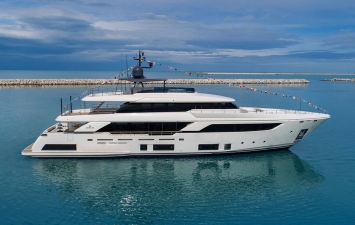
Custom Line Navetta 37 (2019)
| Price: | 13,800,000 € |
|---|---|
| Length: | 37.04 m |
| Year built: | 2019 |
| Located in: | Turkey, Gocek |

Sanlorenzo SL106 Asymmetric (2023)
| Price: | 11,350,000 € |
|---|---|
| Length: | 32.28 m |
| Year built: | 2023 |
| Located in: | Italy, Viareggio |

Yachting Consultants
Sale-Charter-Brokerage-Management
Headquarters:
34 Rue Caffarelli 06000 Nice, France
Front Office:
Boulevard de La Croisette – Port Canto 06400 Cannes, France
T.: +33 493 43 82 83 Email: [email protected] Website: www.alliedyachting.com


Azimut Grande 35 Metri “HEED”
MY HEED was awarded by the World Superyacht Awards 2018 the perfect intuition shown by the designers of the Azimut Grande 35 Metri, which satisfies the modern owner’s needs by offering plenty of space for life on board, both outdoors and below deck. Heed’s interior layout sleeps up to 11 guests in 5 rooms, including a master suite, 2 VIP staterooms and 2 twin cabins with one pullman. She is also capable of carrying up to 6 crew onboard to ensure a relaxed luxury yacht experience. Timeless styling, beautiful furnishings and sumptuous seating feature throughout to create an elegant and comfortable atmosphere.

Dettagli tecnici
2 x 2.400 mHP (1790 kW) MTU 16V 2000 M93
Bassa stagione
Alta stagione.
Charter fee includes: accommodation, crew service, tender & water sport equipment, bed linen & towels, final cleaning
Extras: VAT, APA (30% of the charter fee), delivery/re-delivery fee (if applicable)
Punti salienti dello yacht
Key features.
» Brand new yacht » Large volume for her size. » Five en-suite cabins » Stabilizers at anchor and underway.

WATERSPORTS
» Tender Williams 505 diesel jet » Seadoo jet ski GTX 300 limited » Gocycle G3/3 PAX (3) » E-Surfboard Curf » Waterski, wakeboard » Inflatable sailboat Tiwal » Donut, banana » Snorkling sets (12) » Paddle board Jobe (2)

Contatta specialista

Contatto diretto

- Yacht Nuovi
- Disponibili per consegna in 2024
- Yacht Usati
- Chase boats e tender
- Destinazioni
Seleziona brand preferito
Vendita yacht a Italia
4,600 yacht in vendita in italia, recensioni dei clienti, destinazioni popolari.

Naturalmente, non c'è dubbio che l'acquisto di uno yacht in Italia sia un evento molto piacevole che deve essere affrontato con attenzione e preparato in anticipo. Ci sono diverse centinaia di produttori di yacht in Italia, che producono imbarcazioni di diversi tipi, dislocamenti e attrezzature. Puoi scegliere un normale yacht a motore o una nave confortevole con interni lussuosi, tutto dipende dalle tue preferenze e capacità finanziarie. Sarà molto più economico per te acquistare uno yacht usato, che è associato a un forte calo dei prezzi durante il funzionamento (il costo della manutenzione di uno yacht può essere del 10-20% all'anno del valore della nave e oltre).
Il catalogo 2yachts contiene un'ampia varietà di yacht in vendita in Italia, e qui puoi trovare sia piccole imbarcazioni che yacht di lusso. Gli yacht di rinomati produttori si distinguono invariabilmente per maggiore comfort, sicurezza ed eleganza. Per chiarire i dettagli dell'acquisto, lasciare una richiesta sul nostro sito Web: il broker di yacht ti contatterà a breve e ti fornirà la consulenza necessaria.
- Predefinito
- Data aggiunta
- Prima economico
- Prezzo stimato
Abbonamento
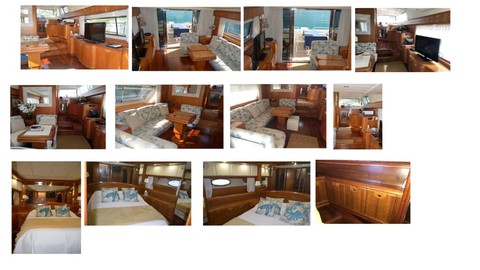
- Lunghezza 16.00 m
- Larghezza 5.00 m
- Bozza 1.80 m
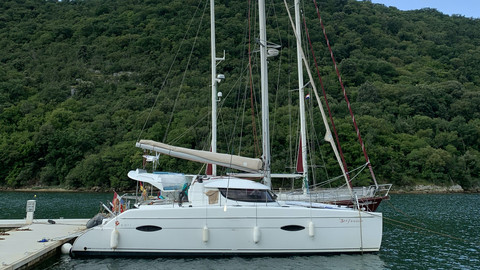
- Lunghezza 11.95 m
- Larghezza 6.73 m
- Bozza 1.15 m
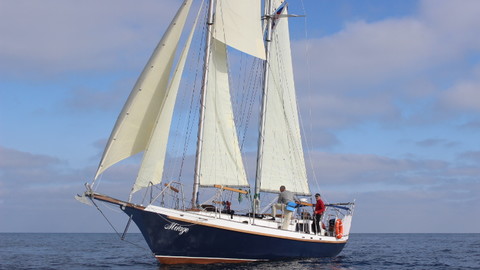
- Lunghezza 12.09 m
- Larghezza 4.00 m
- Bozza 1.70 m
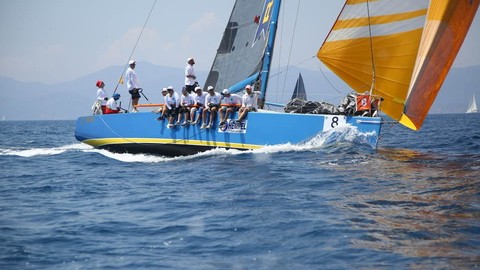
- Lunghezza 12.80 m
- Larghezza 3.60 m
- Bozza 2.60 m
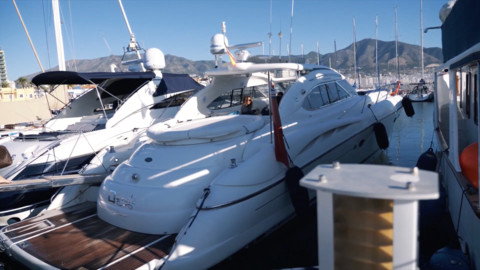
- Lunghezza 18.24 m
- Larghezza 4.70 m
- Bozza 1.30 m
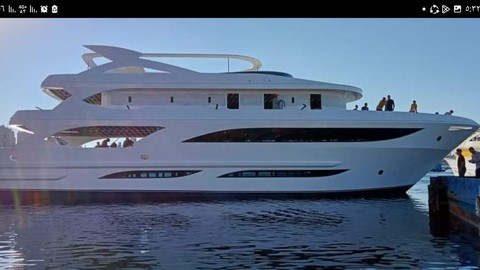
- Lunghezza 35.00 m
- Larghezza 8.00 m
- Bozza 1.60 m
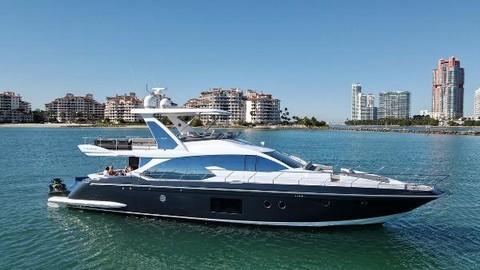
- Lunghezza 20.12 m
- Larghezza 5.18 m
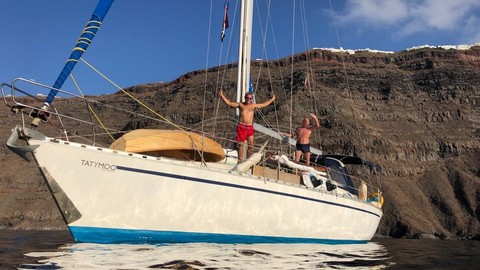
- Lunghezza 12.00 m
- Larghezza 4.26 m
- Bozza 2.10 m
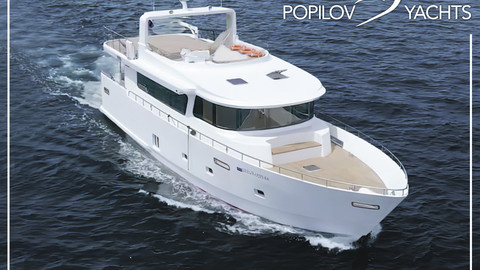
- Lunghezza 19.99 m
- Larghezza 5.50 m
- Bozza 1.84 m
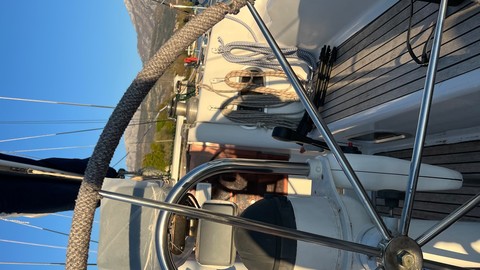
- Lunghezza 10.70 m
- Larghezza 3.50 m
- Bozza 1.95 m

- Lunghezza 28.04 m
- Larghezza 6.22 m
- Bozza 1.65 m
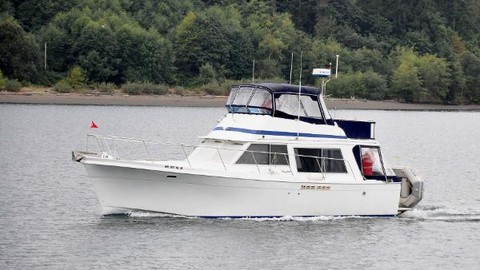
- Lunghezza 11.28 m
- Larghezza 3.81 m
- Bozza 1.17 m

- Larghezza 3.96 m
- Bozza 0.79 m

- Lunghezza 22.56 m
- Larghezza 10.06 m
- Bozza 2.20 m

- Lunghezza 25.30 m
- Bozza 1.44 m

- Lunghezza 13.41 m
- Larghezza 4.32 m
- Bozza 1.52 m
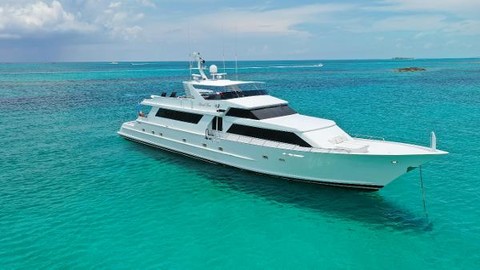
- Lunghezza 33.53 m
- Larghezza 6.35 m
- Bozza 1.78 m
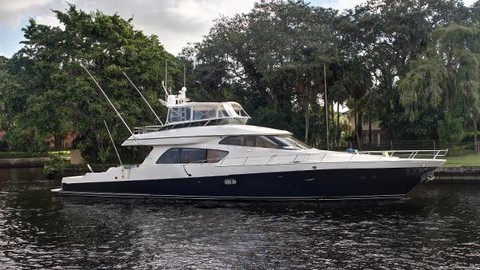
- Lunghezza 21.95 m
- Larghezza 5.33 m
- Bozza 0.97 m
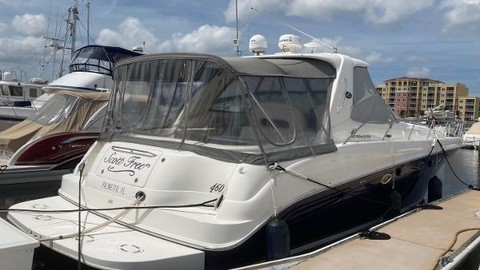
- Larghezza 4.47 m
- Bozza 1.09 m
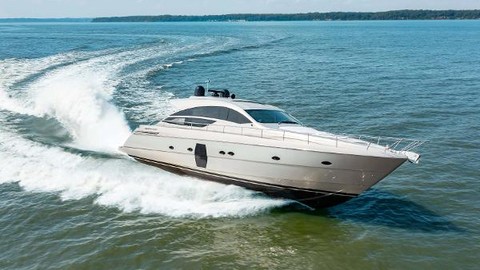
- Lunghezza 19.51 m
- Larghezza 4.95 m
- Bozza 1.32 m
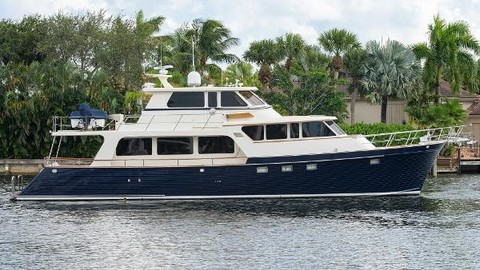
- Lunghezza 21.34 m
- Larghezza 5.59 m
- Bozza 1.35 m
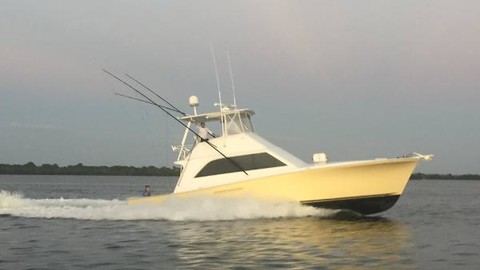
- Lunghezza 14.63 m
- Larghezza 4.62 m
- Bozza 1.07 m
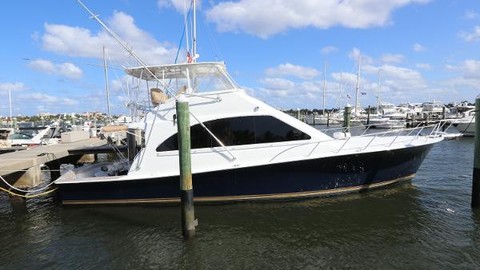
- Lunghezza 15.85 m
- Larghezza 4.98 m
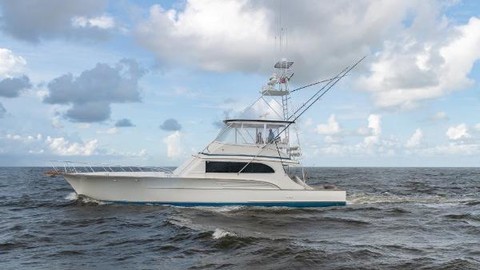
- Lunghezza 18.59 m
- Larghezza 5.49 m
- Bozza 1.73 m
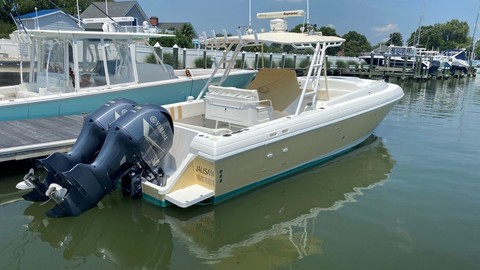
- Larghezza 3.20 m
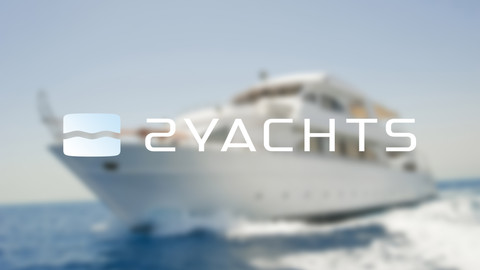
- Lunghezza 14.33 m
- Larghezza 4.57 m
- Bozza 1.18 m
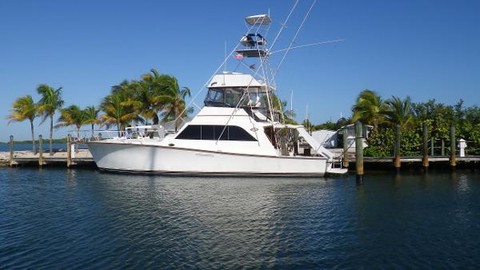
- Lunghezza 16.76 m
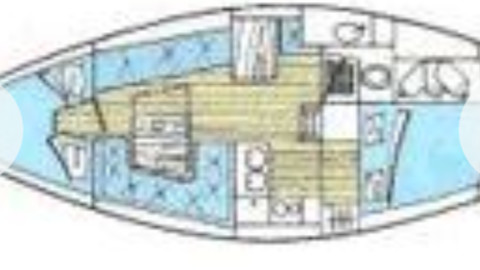
- Lunghezza 9.96 m
- Larghezza 3.35 m
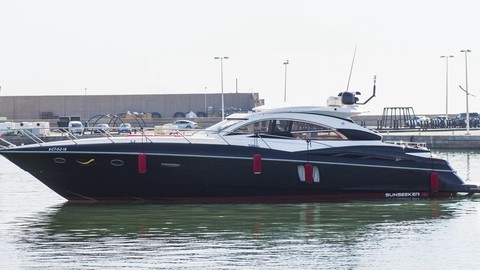
- Lunghezza 19.60 m
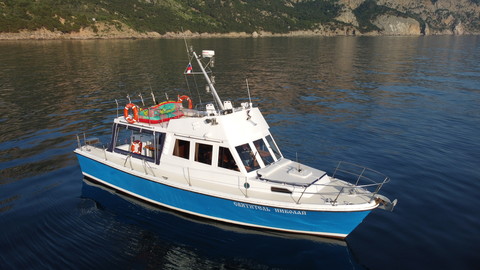
- Lunghezza 12.20 m
- Larghezza 4.10 m
- Bozza 1.10 m
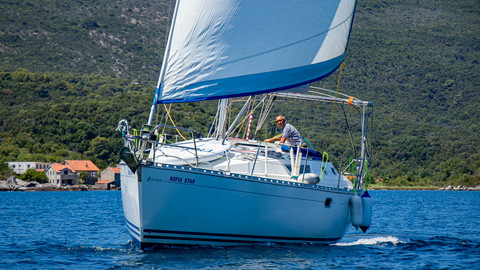
- Lunghezza 12.30 m
- Bozza 2.00 m
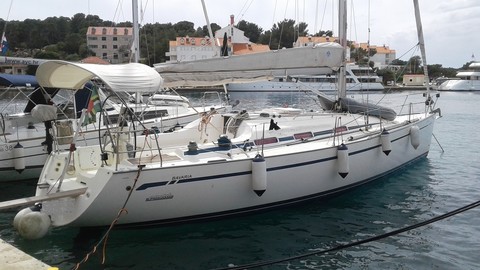
- Lunghezza 12.46 m
- Larghezza 3.74 m
- Bozza 2.50 m
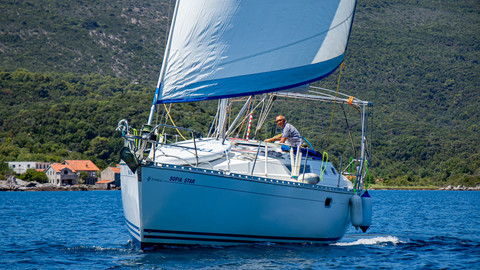
- Lunghezza 11.80 m
- Larghezza 3.70 m
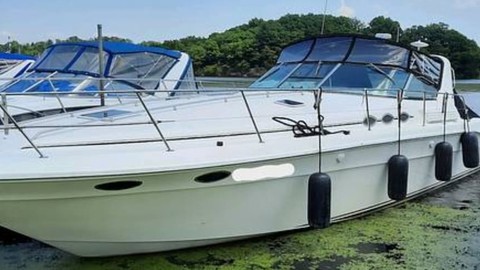
- Larghezza 3.99 m

- Lunghezza 15.10 m
- Larghezza 4.49 m
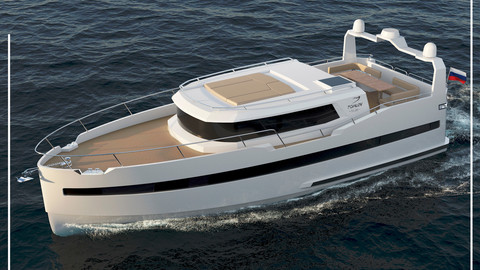
- Lunghezza 14.99 m
- Larghezza 4.90 m
- Bozza 1.20 m
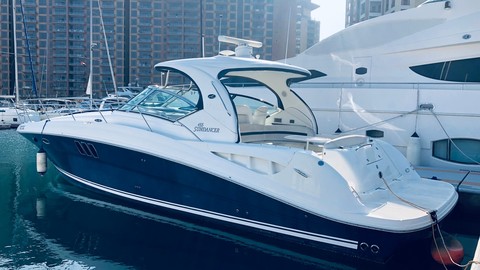
- Lunghezza 13.84 m
- Larghezza 4.01 m
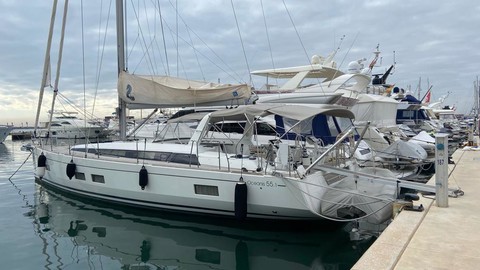
- Lunghezza 16.78 m
- Larghezza 4.96 m
- Bozza 1.91 m
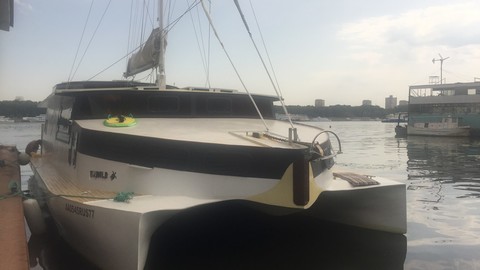
- Lunghezza 15.00 m
- Larghezza 6.00 m
- Bozza 1.00 m

- Lunghezza 21.10 m
- Larghezza 5.80 m
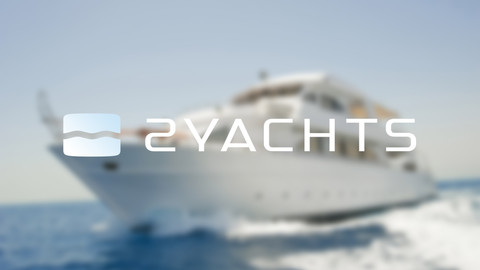
- Lunghezza 15.42 m
- Larghezza 4.82 m
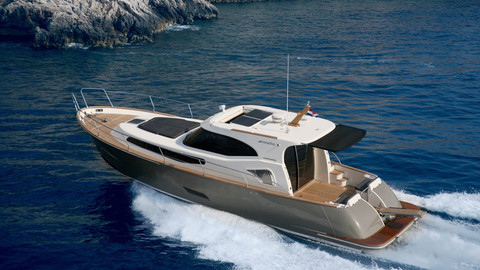
- Lunghezza 14.40 m
- Larghezza 4.20 m
- Bozza 1.08 m
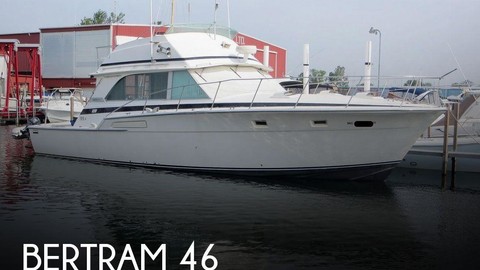
- Lunghezza 14.02 m
- Larghezza 4.88 m
- Bozza 1.37 m
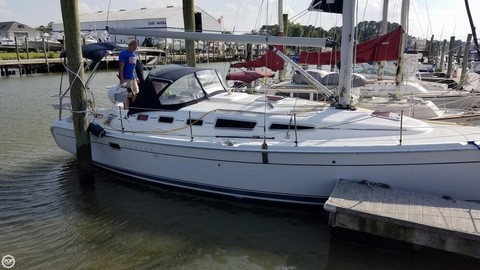
- Lunghezza 11.58 m
- Larghezza 3.94 m
- Bozza 1.58 m
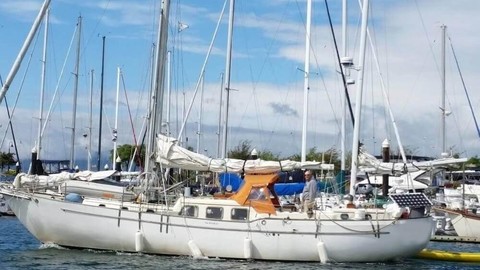
- Bozza 1.68 m

- Lunghezza 15.24 m
- Bozza 1.24 m
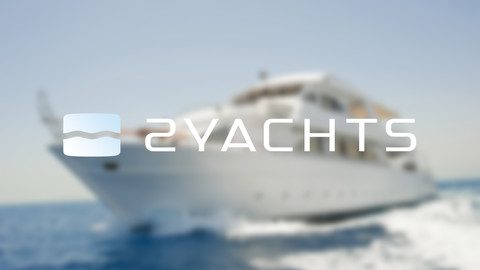
- Larghezza 4.72 m

- Lunghezza 16.15 m
- Bozza 1.22 m
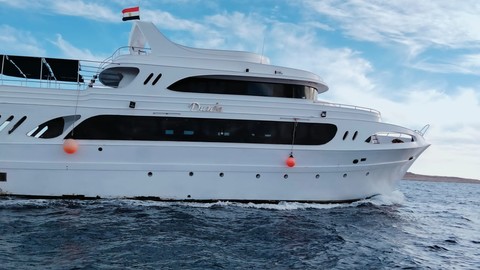
- Lunghezza 30.00 m
- + Carica altro...
L'Italia è immediatamente bagnata da 5 mari: ligure, tirrenico, adriatico, ionico e mediterraneo. Pertanto, non sorprende che in questo paese ci siano grandi opportunità per lo yachting: l'infrastruttura dello yacht è ben sviluppata sulla costa e le barche a noleggio sono organizzate.
Acquistare uno yacht in Italia
I prezzi più alti si sono formati sulla costa della Sardegna e gli yacht club più famosi del paese si trovano a Genova. È possibile acquistare uno yacht in Italia , uno dei leader nella produzione di navi a motore e a vela. Non ci saranno problemi per raccogliere sia uno yacht nuovo che uno usato - il mercato è costantemente aggiornato con nuove offerte.
Certo, non c'è dubbio che l' acquisto di uno yacht in Italia è un evento molto piacevole, che deve essere affrontato attentamente e preparato in anticipo. In Italia, ci sono diverse centinaia di produttori di yacht che producono navi di vari tipi, spostamenti e attrezzature. Puoi scegliere un normale yacht a motore o una nave confortevole con interni lussuosi: tutto dipende dalle tue preferenze e capacità finanziarie. L'acquisto di uno yacht di seconda mano ti costerà molto meno, a causa di un forte calo dei prezzi operativi (il costo di manutenzione di uno yacht può essere del 10-20% all'anno del costo della nave o più).
Il consiglio principale all'acquisto di una nave usata è la sua ispezione dettagliata, preferibilmente con l'assistenza di uno specialista competente. A seconda del tipo, delle dimensioni e della potenza del motore, il costo di uno yacht in Italia può variare in modo significativo. Quando acquisti uno yacht in Italia, preparati a pagare le tasse, che di solito non sono incluse nell'importo principale di acquisto. È necessario prendere in considerazione lo scopo per il quale si acquista uno yacht - se si tratta di brevi passeggiate lungo la costa, un piccolo yacht a prezzi accessibili è adatto, se si pianificano lunghi viaggi lungo gli infiniti spazi marini - questa opzione non sarà limitata (altrimenti semplicemente non ci sarà abbastanza carburante, acqua e cibo) e comprare una nave da crociera. Tieni presente che con l'aumento delle dimensioni della nave, aumenta anche il costo del parcheggio e della manutenzione.
Il catalogo 2yachts contiene una grande varietà di yacht in vendita in Italia , e qui puoi trovare sia piccole imbarcazioni che uno yacht di lusso. Gli yacht di rinomati produttori si distinguono sempre per maggiore comfort, sicurezza ed eleganza. Per chiarire i dettagli dell'acquisto, lasciare una richiesta sul nostro sito Web: il broker di yacht ti contatterà a breve e ti fornirà i consigli necessari.
Affinché lo stato eserciti il controllo sulla nave, per garantire le sue condizioni agli standard attuali e in alcuni casi anche per proteggere, è necessario registrare lo yacht. Le bandiere di tutti gli armatori di una nazione sono obbligate dalla Convenzione delle Nazioni Unite del 1982 sul diritto del mare. Molti cercano di trarre vantaggio da una delle proposte per la vendita di yacht in Italia e di registrare una nave in mare aperto, in quanto ciò riduce il costo della procedura e riduce l'importo della tassazione. Se si prevede di noleggiare la nave acquistata, sarà necessario sottoporsi all'ispezione della nave da parte dei servizi corrispondenti e ricevere documenti che confermino il passaggio di tale ispezione.
La scelta di uno yacht in Italia
Per scegliere uno yacht per l'acquisto in Italia , che ti delizierà con comfort e servizio affidabile per molti anni, presta attenzione, prima di tutto, ai prodotti di famosi cantieri navali e imprese di costruzione navale. Per selezionare le opzioni più redditizie e adatte alla tua attrezzatura e al tuo comfort, ti consigliamo di contattare il nostro broker di yacht: gli specialisti di 2yachts sono esperti nel mercato degli yacht e ti forniranno un supporto completo in tutte le fasi dell'acquisizione, dell'assicurazione e della registrazione della nave. Effettueremo inoltre tutti i controlli necessari, prepareremo i documenti e, se necessario, aiuteremo a vendere lo yacht in breve tempo.
Gli italiani amano molto il mare e sono appassionati di yacht ad alta velocità, quindi tra le offerte per la vendita di yacht troverai sempre i modelli più veloci, inoltre, gli yacht italiani si distinguono per un design attentamente studiato ed eleganza sia nel design degli interni che degli esterni. Gli amanti degli yacht arrivano in Italia da tutto il mondo per scegliere una nave nel più grande mercato del mondo, in vista anche dei mercati cinese e americano. Sono attratti, innanzitutto, dall'esclusività del design esterno: molti degli yacht sul mercato sono stati realizzati su ordinazione.
Nel nostro catalogo troverai yacht in vendita da produttori di fama mondiale a prezzi convenienti. L'acquisto di uno yacht usato è una grande opportunità per diventare il proprietario di una nave di prestigio. Contattaci per selezionare e acquistare uno yacht in Italia, un paese con una costa di 7.600 km e percorsi sicuri e facili per rilassarti sull'acqua.
Stimando il costo dello yacht , è necessario tenere conto anche dei costi imminenti di manutenzione, riparazione e manutenzione. In Italia, un gran numero di parcheggi per yacht, dove è possibile lasciare la nave per lo stoccaggio - il costo è diverso ovunque. Contatta la nostra azienda per una consulenza completa sull'effettuazione di transazioni relative all'acquisto / vendita di yacht. Speriamo in una proficua collaborazione e siamo pronti a fornire il flusso più rapido e comodo del processo di transazione. I nostri clienti possono essere certi che prenderanno esattamente la nave italiana che sognano!
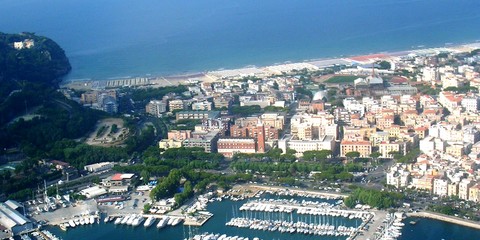
- Paesi bassi
- Stati Uniti
- Regno Unito
- Barche a motore usate
- Barche a vela usate
- Tutte le barche usate
- Barche a motore nuove
- Barche a vela nuove
- Tutte le barche nuove
- Marchi di barche
- Modelli di barche
- Pacchetto visibilità annunci di barche
- Quotazione barca
- Domande frequenti
Yachts usate tra i 20 e i 25 metri
103 annunci, beneteau antares 8 ob v2, poly form triakis c 30, jeanneau cap camarat 8.5 cc, princess 65, greenline 68 ocean class, san lorenzo 82, de birs 85 rph lx, bertram gm 76, monachus 70 fly, pershing 80, ghibli 24 m, pacific class 85, princess s78, princess v78, pershing 72, moonen 85 lrc, mangusta 72, ricerche correlate.
- Barche usate
- Ranieri International Cayman 35 Excutive del 2020

Via Passeggiata del Porto, 18 | Porto Rotondo 07026 (OT) Tel. () +39-07891710135 Cell. () +39-3420413529
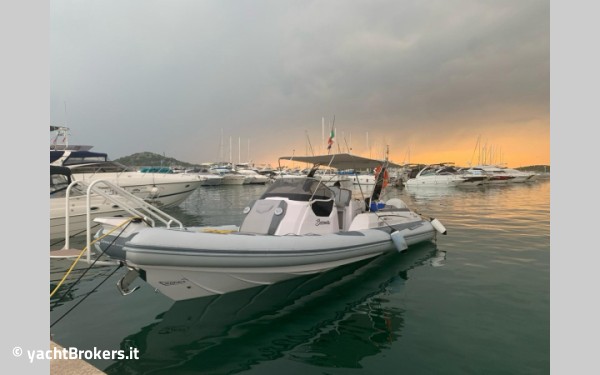
Ranieri International Cayman 35 Excutive
Barca Ranieri International Cayman 35 Excutive a motore del 2020. Questa barca usata ha una lunghezza di 10.80 metri ed è motorizzata 2x300 Yamaha (B).
Caratteristiche principali
Motorizzazione e impianti, galleria delle foto.

Le immagini e la scheda tecnica della barca Ranieri International Cayman 35 Excutive sono stati inseriti dall'inserzionista Sestante Yachts. Marchi, fotografie e informazioni protette da copyright appartengono ai legittimi proprietari. Dati ritenuti corretti, ma non garantiti o contrattuali. Le commissioni di mediazione potrebbero non essere comprese.
Richiedi ulteriori informazioni a Sestante Yachts sulla barca Ranieri International Cayman 35 Excutive
Informativa sulla privacy
I dati personali inseriti vengono trattati nel rispetto della tua privacy e per le finalità espresse nelle condizioni di contratto e utilizzo .

Share ×

Scan the QR code and open PeakVisor on your phone
❤ Wishlist ×
See all region register, peakvisor app, khanty-mansiysk autonomous okrug – ugra.
Welcome to the land of sheer silent whiteness. Its vast expanses are filled with fresh Arctic air, howling winds, and the spirit of true adventure. Come with us to the lands of the ancient Khanty and Mansi tribes that survived in this harsh climate of the Nether-Polar Urals . See the mountains that defy any logical or geological reason for their existence. Experience the wonders of this sparsely populated land where you can hardly see a human trace. Welcome to Yugra!
Flora & Fauna
Water resources, landmarks and tourism, major mountains, mount narodnaya, mount zaschita, mount neroyka, the pyramid mountain, samarovskaya mountain, ski and sports facilities, protected sites, reserves, national and natural parks, rivers and lakes, major cities, khanty-mansiysk.
The Khanty-Mansiysk Autonomous Area – Yugra (KhMAO) is located in the central part of the West Siberian Plain, stretching from west to east from the Ural Range to the Ob-Yenisei Watershed. The vast areas of this plain, as well as the Lower Priob region, are considered one of the most recently inhabited areas.
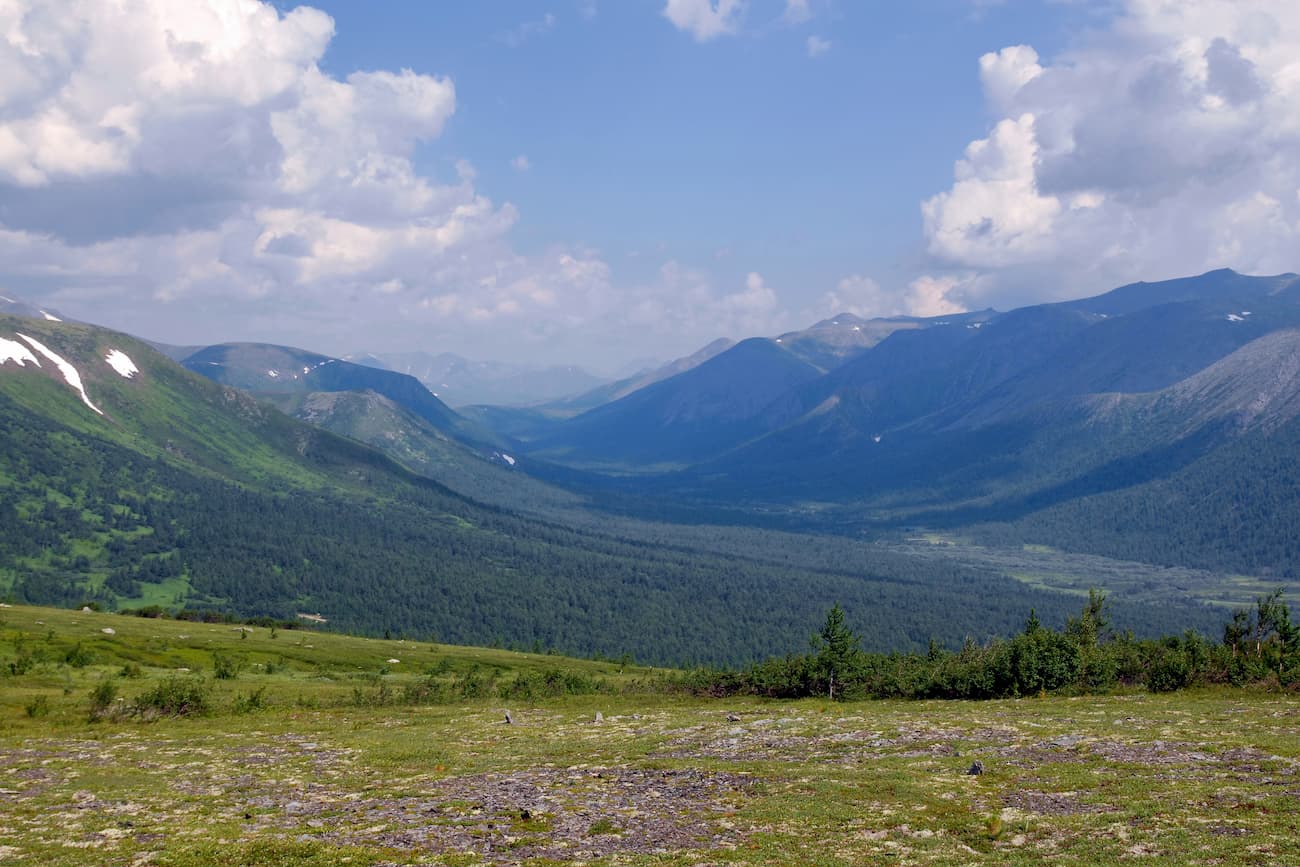
The Khanty-Mansiysk Autonomous Area (KhMAO) was established in 1930. Its name comes from two main northern indigenous peoples – the Khanty and the Mansi. From 1944 it was legally part of the Tyumen Region , but in 1993 the Area received autonomy and became a full-fledged territorial entity of the Russian Federation. It is a part of the Urals Federal District. The administrative centre is the city of Khanty-Mansiysk , whereas the largest city is Surgut. The word Yugra was introduced to the name of the Khanty-Mansiysk Autonomous Area in 2003 to pay tribute to the old name used by the locals to call the territories lying beyond the North Urals.
The KhMAO borders the Komi Republic in the north-west, the Yamalo-Nenets Autonomous District in the north, the Krasnoyarsk Area and the Tomsk Region in the east and south-east, the Tyumen Region in the south and the Sverdlovsk Region in the south-west.
The area of the territory is 534,801 sq.km, the length from north to south is 800 km, from west to east is 1400 km. The population of this huge territory is 1,674,676 people as of 2020, which is the same amount as people living in Barcelona or Munich.
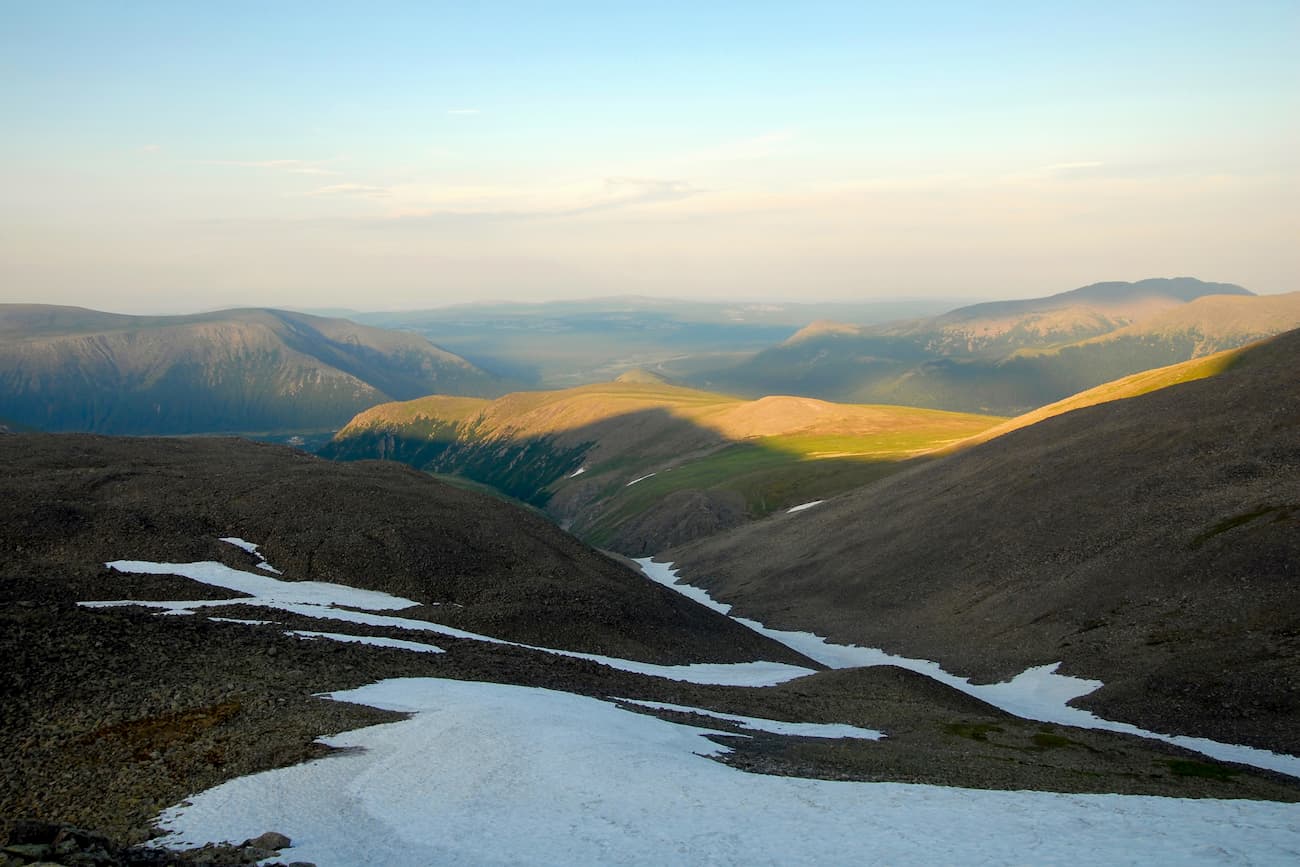
The main part of the territory is a huge, poorly dissected plain where absolute elevation marks rarely exceed 200 meters above sea level. The western part of the KhMAO territory is characterized by low and middle mountainous terrains with some Alpine relief featured in the Subpolar Urals. Here are ridges and spurs of the mountain system of the North Urals and the Subpolar Urals. The maximum absolute elevations are on the border with the Komi Republic . Mount Narodnaya (1,895m) is the highest peak.
More than 800 species of higher plants grow in the Khanty-Mansi Autonomous Area . Almost the entire territory is covered by taiga forests that occupy about 52% of the area. Spruce, fir, pine, cedar, larch, birch, alder grow here. In the northern parts of the area, the composition of the vegetation is greatly influenced by perennial permafrost. Light lichen grasslands which are used as deer pastures are widespread there. Tundra dominates in the mountainous and hilly areas. River floodplains and lowlands are characterized by meadow vegetation, the so-called water meadows. High floodplains of large rivers are mainly covered with woods that mainly feature willows, birches and aspens. Forests and swamps are rich in berries and various valuable plants, most of which are used in traditional indigenous medicine.
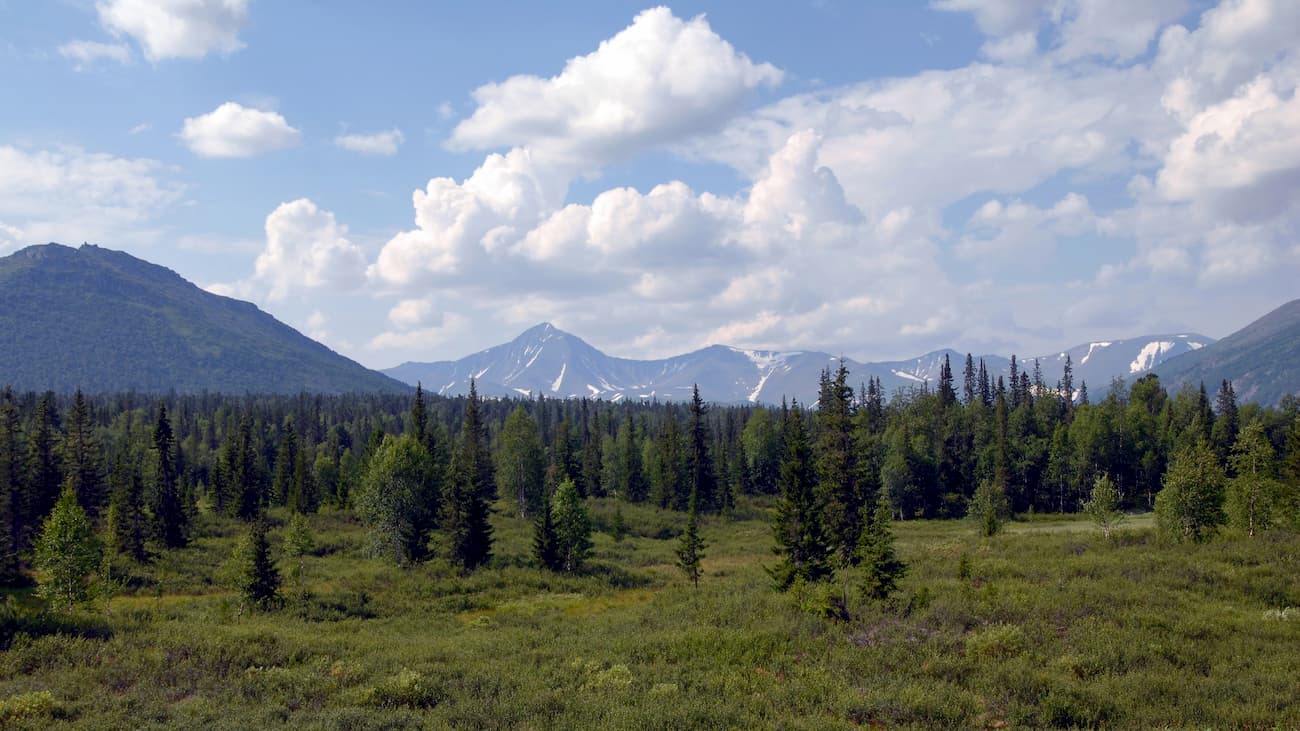
The animal world is typical for the Russian taiga zone. There are 369 species of vertebrates. Mammals are represented by 60 species (28 of them are commercial species). The most common and valuable of them are wild reindeer, elk, fox, sable, fox, squirrel, marten, ermine, Siberian weasel, polecat, mink, weasel, otter, hare and others. Wolverine and West Siberian river beaver are included in the Red Book of Russia.
There are 256 bird species in the region, including 206 sedentary and nesting species. Some rare bird species are listed in the Red Book. There are 42 species of fish in rivers and lakes. Of these, 19 species are commercial, among them are starlet sturgeon, lelema, muksun (whitefish), pelyad, chir, lake herring, wader, tugun, freshwater cod, pike, ide, roach, bream, fir, perch, ruff, golden and silver crucian carp, carp (carp is grown in the cooling ponds of the Surgutskaya and Nizhnevartovskaya hydroelectric plants). Sturgeon is listed in the Red Book. There is an abundance of mosquitoes and gnats in the area, the greatest activity of which is in the second half of summer.
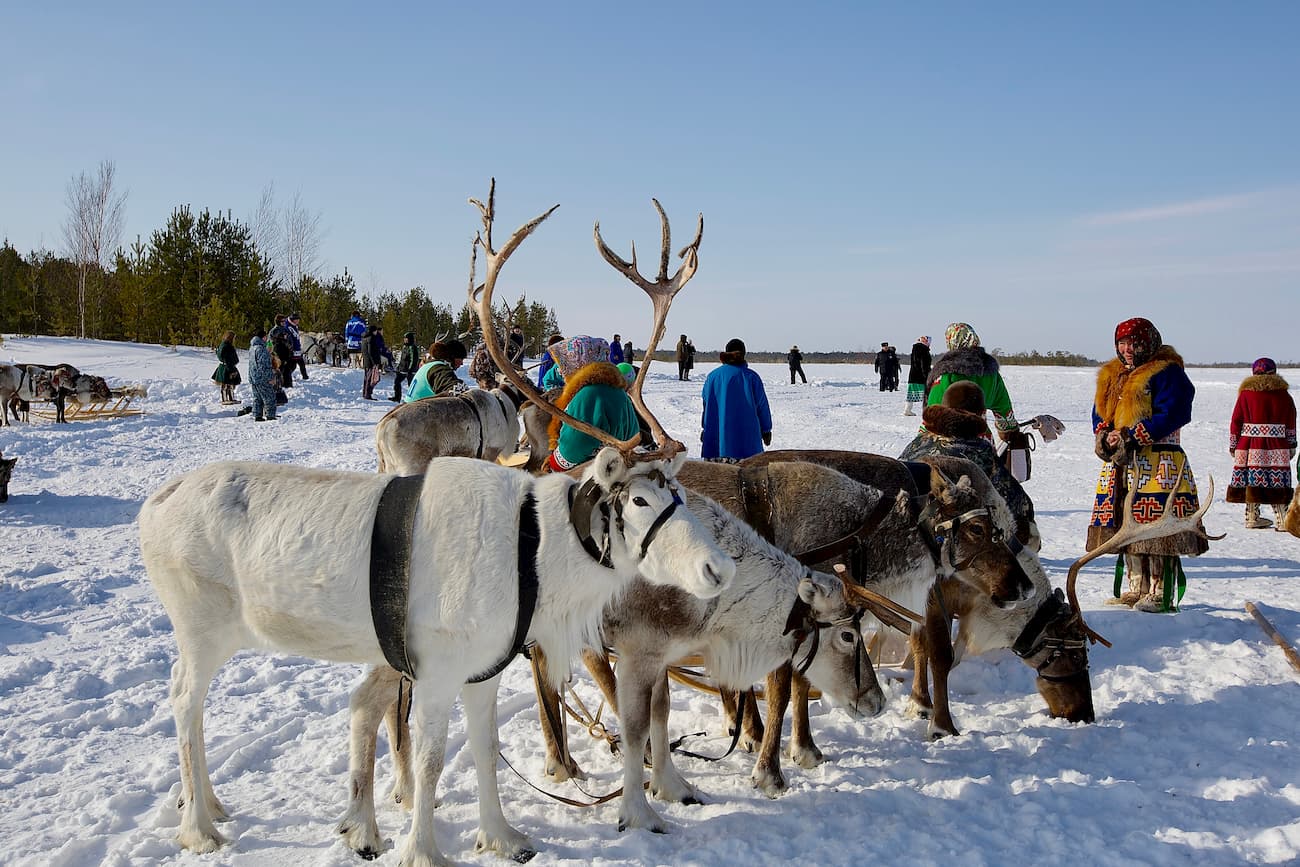
Yugra can boast of over 2 thousand large and small rivers, the total length of which is 172,000 km. The main rivers are the Ob (3,650 km), the Irtysh (3,580 km). These are some of the largest rivers in Russia. Other significant rivers include the tributaries of the Ob (the Vakh, Agan, Tromyogan, Bolshoy Yugan, Lyamin, Pim, Bolshoy Salym, Nazym, Severnaya Sosva, Kazym rivers), the tributary of the Irtysh (the Konda River) and the Sogom River. Ten rivers are over 500 km long. All the Yugra rivers with the exception of the rivers in the Ural part of the region are characterized by rather slow currents, gentle slopes, some surge wave phenomena, spring and summer floods. The Ob River basin extends over a distance of 700-200 km from the mouths of its tributaries. Such abundance of water facilitates the appearance of floodplain swamps and seasonal lakes.
The region's swamps are predominantly of the upper and transitional type. Those water basins occupy about a third of the region. About 290,000 lakes with the area of more than 1 ha are surrounded by swamps and forests. The largest lakes are Tursuntsky Tuman, Levushinsky Tuman, Vandemtor and Trmemtor. The deepest lakes are Kintus (48 m) and Syrky Sor (42 m). However, most of the lakes (about 90%) are modest and quite small and have no surface runoff.
The area is rich in resources of fresh, mineral and thermal underground waters, which are still insignificantly used.
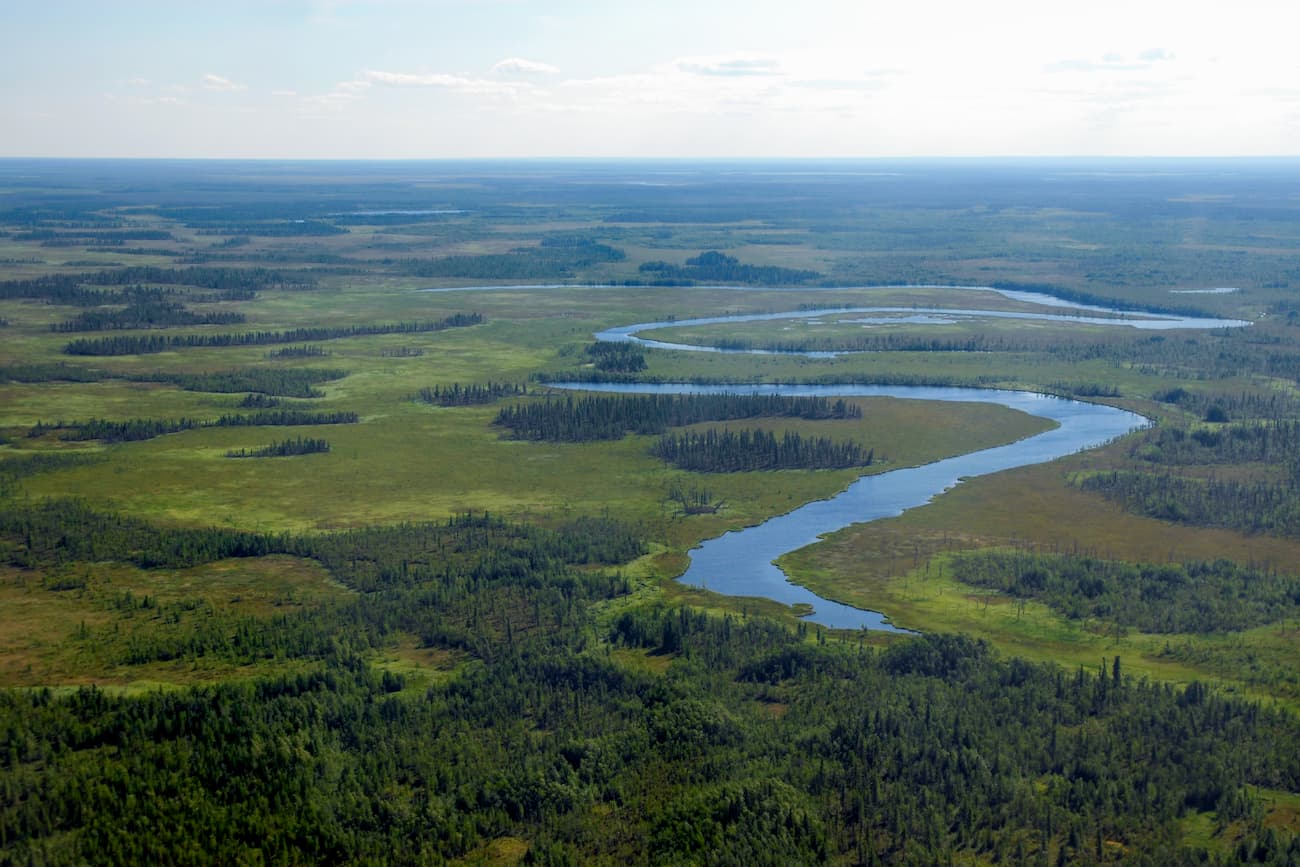
The climate is moderately continental. Winters are harsh, snowy and long, and summers are short and relatively warm. The territory is protected from the west by the Ural Mountains but its openness from the north has a significant impact on the climate formation because cold air masses from the Arctic freely penetrate the area. The flat character of the terrain with a large number of rivers, lakes and swamps also has its impact. Most of the precipitation falls during the warm seasons. But even with a small amount of precipitation, their evaporation is very low, which as a result contributes to the formation of the zone of excessive moisture throughout the Yugra. The snow cover is stable from late October to early May, its height varies from 50 to 80 cm. The region is characterized by a rapid change of weather conditions, especially in transitional seasons (autumn and spring), as well as during the day. Late spring and early autumn frosts are rather frequent and can happen even until mid-June. Average January temperatures range from -18ºC to -24ºC (0 F to -11 F) and can reach -60ºC to -62ºC (-76 F to -80 F) when the northern cold air masses break through. The average temperature in July, the warmest month of the year, ranges from +15ºC to +20ºC (+59 F to +68 F) and on very rare days can reach a maximum temperature of +36ºC (+97 F). The prevailing wind direction is north in summer and south in winter.
The weather in the mountains is quite changeable and cool even in summer. The best time to visit the region's mountains is between July and mid-August.
The Yugra of the Khanty-Mansi Autonomous Area has a huge natural resource potential. These are oil and gas deposits, forests, gold and iron ore deposits, as well as bauxites, copper, zinc, lead, niobium, tantalum, brown and hard coal deposits, rock crystal, quartz and piezo quartz, peat deposits, etc. The region has plenty of natural resources. In terms of natural gas reserves, the Yugra ranks second in the Russian Federation after the Yamalo-Nenets Autonomous District .
The industry is dominated by oil and gas production, power generation and processing industries, including woodworking except for pulp and paper production.
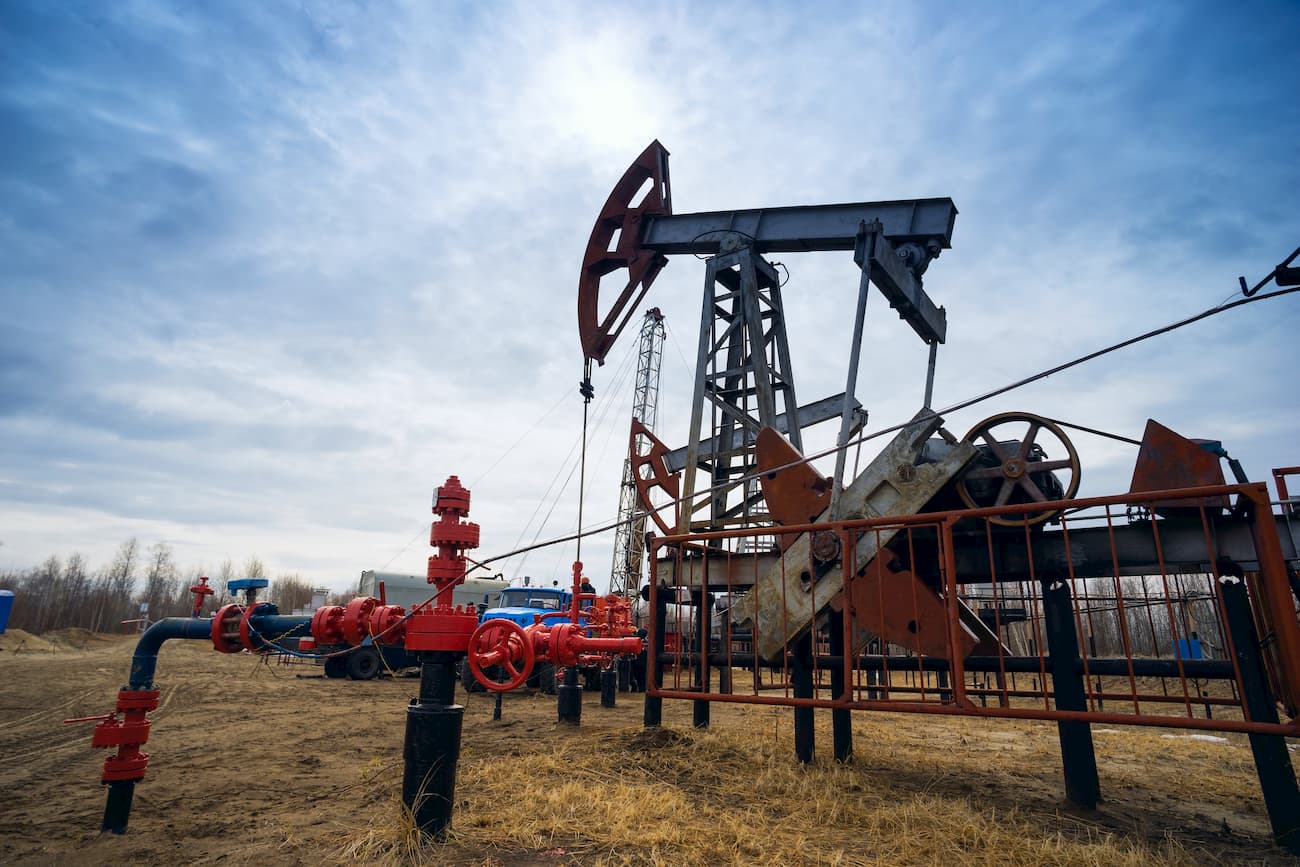
The Khanty-Mansi area has very developed tourism of all kinds. There is a modern infrastructure for cultural exploration as well as for active recreation.
Fans of sports and eco-friendly tourism will be able to conquer majestic mountains and raft down picturesque rivers, enjoy the beauty of nature in nature reserves and natural parks. The hills and mountains of this area open up endless opportunities for skiing and snowboarding.
The mountainous part of the Subpolar Urals located on the territory of the Khanty-Mansi Autonomous Area is very beautiful. The highest peaks of the Ural Mountains are situated here.
Being the highest point of the whole Urals, Mount Narodnaya (1,895 m), also known as Naroda and Poenurr and translated as People's Mountain is territorially situated in the Subpolar Urals, on the border of the Yugra Area and the Komi Republic . It is the highest point in European Russia outside the Caucasus. This leads to its large topographic prominence of 1,772 metres (5,814 ft).
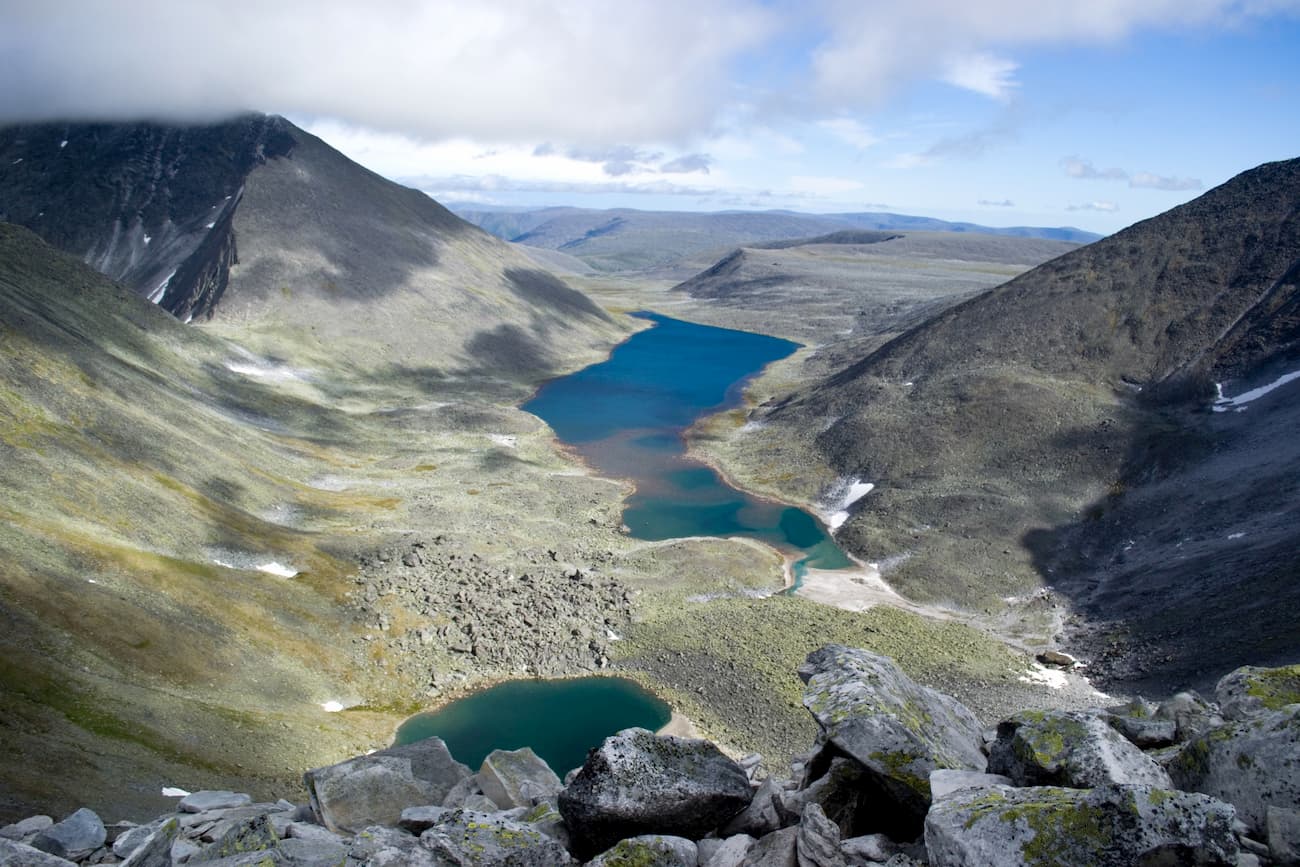
The top of the mountain is half a kilometre from the border towards Yugra. As for the name of the mountain, scientists could not come to a common opinion for a long time, so there are two versions. According to one version, in the Soviet years, an expedition of pioneers gave the mountain a name in honour of the Soviet people - Narodnaya (the stress is on the second syllable). According to the other version, even before the arrival of the first Soviet tourists, the peak was named after the River Naroda (the stress is on the first syllable) flowing at the foot of the mountain. The Nenets peoples called the River Naroda Naro, which means a thicket or a dense forest, and the Mansi peoples called it Poengurr or Poen-urr, which translates as the top, or head. The maps used to refer to it as Mount Naroda or Mount Naroda-Iz. Nowadays, it appears everywhere as Narodnaya.
In the 1980s, someone set a bust of Lenin on the top of the mountain. Its remains can be found there to this day. There is one more symbolic relic there – some Orthodox believers erected a worship cross on top of Mount Narodnaya after a Procession of the Cross.
The slopes of the mountain are steeper in the north-east and south-west and there are many steep rocks on them. The south-eastern and northern parts of the mountain are more gentle but they are also covered with scree. Be vigilant and careful when climbing! On the slopes of the mountain, there are many not only boulders but also caverns filled with clear water as well as ice. There are glaciers and snowfields. From the north-eastern part of the mountain, you can observe Lake Blue near which tourists and travellers like to make bivouacs.
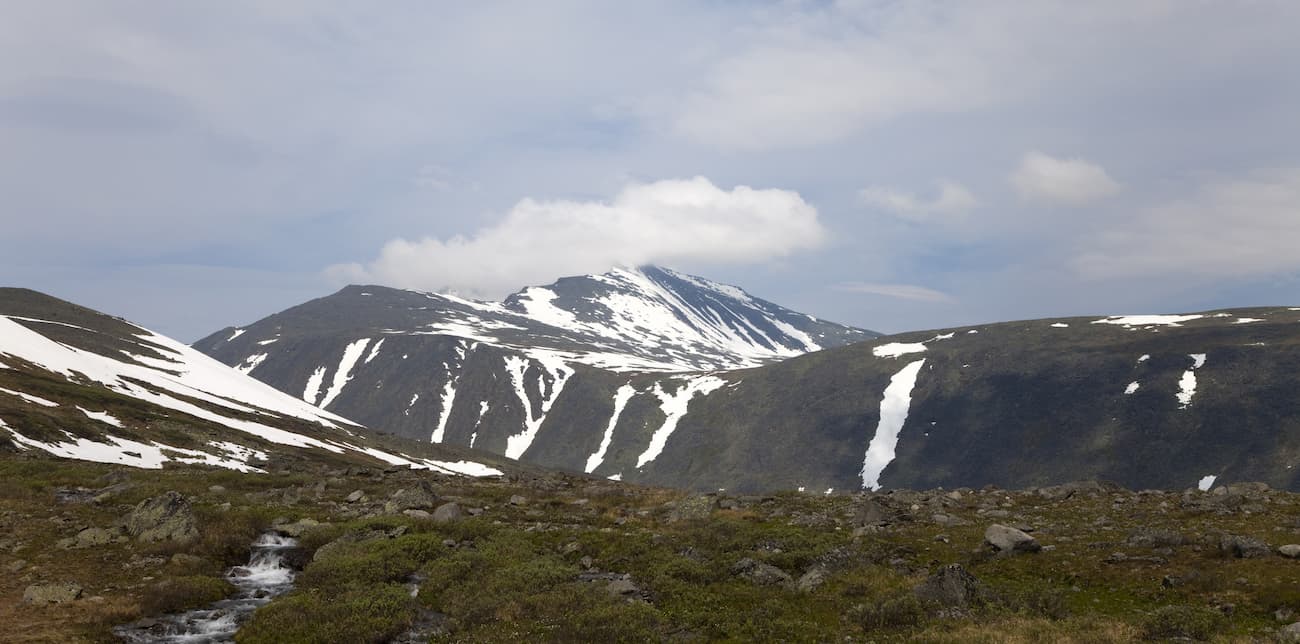
Mesmerizing with its beauty and inaccessibility, it attracts many tourists and fans of active recreation. This majestic mountain is quite remote from the settlements, so getting to it is not an easy task. The mountain is located in the Yugyd Va National Park , so it is necessary to register in advance and get a visit permit from the park administration. How to get to the park administration and get a permit, read the article on the Yugyd Va National Park .
Mountain Zaschita (1,808 m) is the second-highest peak in the Ural Mountains, after Mount Narodnaya . Mysteriously, the name of the mountain, which roughly translates as Defense or Protection Mount, does not correlate in any way with the Mansi names of the nearby mountains and rivers. The origin of the name is unknown. There are some speculations but we will consider just one of them. On the map of the Northern Urals which was made by the Hungarian researcher Reguli the closest peak to Mount Narodnaya was called gnetying olu. Its location coincides with that of the present-day Mount Zaschita . The name gnetying olu in the Mansi can be deciphered as a mountain on which there is some help from ice. The mountain is believed to protect deer grazing on glaciers from mosquitoes. So, early topographers called the mountain more briefly – Mount Defense. Indeed, the slopes of this mountain are covered with a lot of snow and glaciers (the Yugra, Naroda, Kosyu, Hobyu glaciers and others). And it is here that the Mansi shepherds bring their deer which can rest on glaciers and snow. Summarizing all the above, we can say that Zaschita Mount is to some extent protection for deer from mosquitoes. The very name Zaschita appeared on maps with the beginning of hiking tours in the Subpolar Urals.
Mount Neroyka (1,645 m) is 100 km from Neroyka village, the closest tourist base to this peak. In the 1950s, people who were engaged in quartz mining near the mountain worked and lived in this base. Later, a gravel road was built from the village of Saranpaul to the mountain for large-scale development of the quartz deposit. In recent years, the road has not been much used and is practically not cleaned from snow in winter. There has been a plant built 20 km down from the mountain for primary processing of quartz with the use of nanotechnologies. There is an annual big camping event near the mountain. It is organized by the Tourism Department of the Khanty-Mansi Autonomous Area. You can have a 1-hour helicopter ride to the mountain from the village of Saranpaul. Should you wish to fly from the city of Khanty-Mansiysk , be prepared to fly over the taiga for 2.5-3 hours.
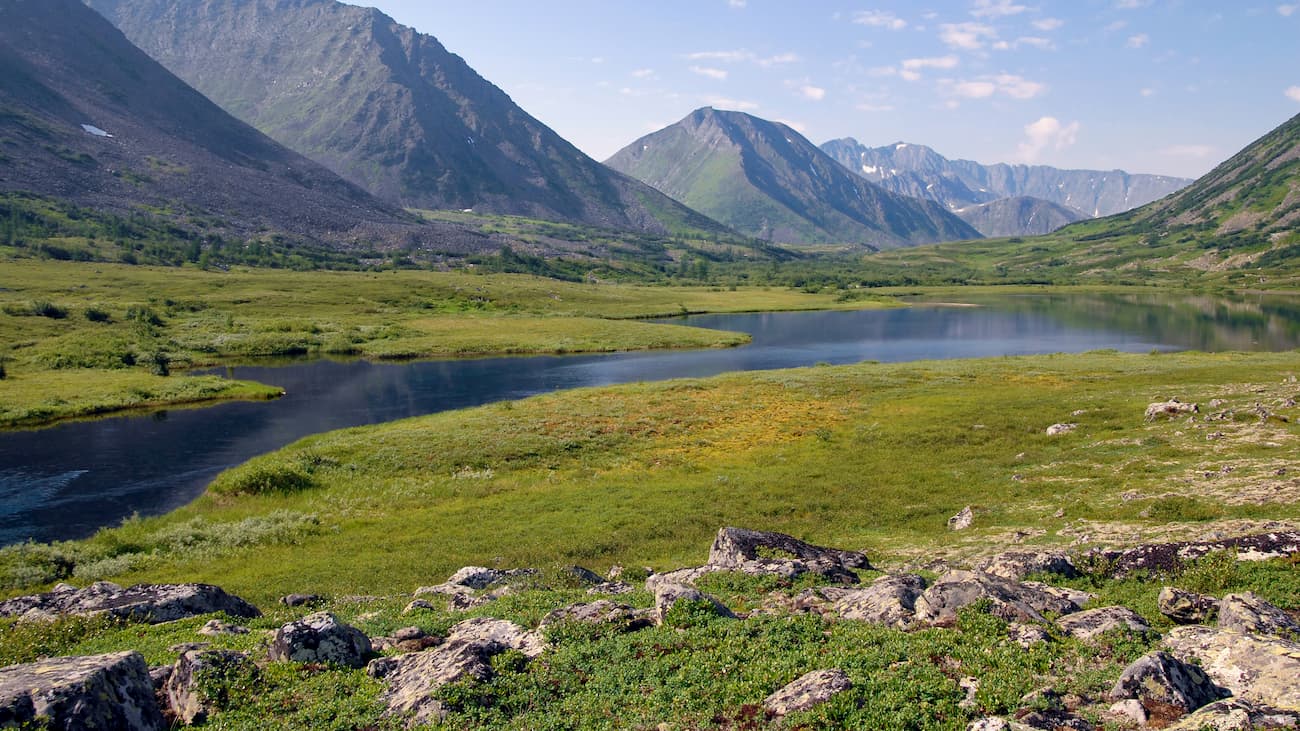
Quite inquisitive tourists happened to discover, by a lucky chance, a Pyramid similar to that of Cheops but four times bigger. It is located on the territory of the Narodo-Ityinsky Ridge. The closest to the pyramid is the village of Saranpaul. The sizes of the found pyramid are as follows: the height is 774 m, in comparison to the Egyptian pyramid which is 147 m; the length of a lateral edge is 230 m whereas the Egyptian pyramid is 1 km. The pyramid is located precisely according to the cardinal directions, there is not a single degree deviation at that. The origin of the pyramid is unknown, scientists are still making assumptions. No traces of human activity were found near the pyramid. The only way to get here at this time is by helicopter.
Samarovskaya Mountain is another wonder that is baffling many people. It is dividing the city of Khanty-Mansiysk into northern and southern parts. Few now living residents know that in the old days the highest part of the modern city used to bear a plural name of the Samarovsky Mountains among which there were Mount Palenina, Komissarskaya, Miroslavskaya, Filinova, and Romanova. Originally, there was a village called Samarovo amidst these mountains. Until now, many issues bewilder both residents and scientists. How could a mountain form in the middle of the West Siberian Plain? What is inside it? Won't the weight of the buildings erected on the top of the mountain affect its height? The uniqueness of Samarovskaya Mountain is that it consists of numerous large stones, boulders, rocks that are absolutely foreign to this area. Scientists have not yet come to a consensus on the mountain’s origin.
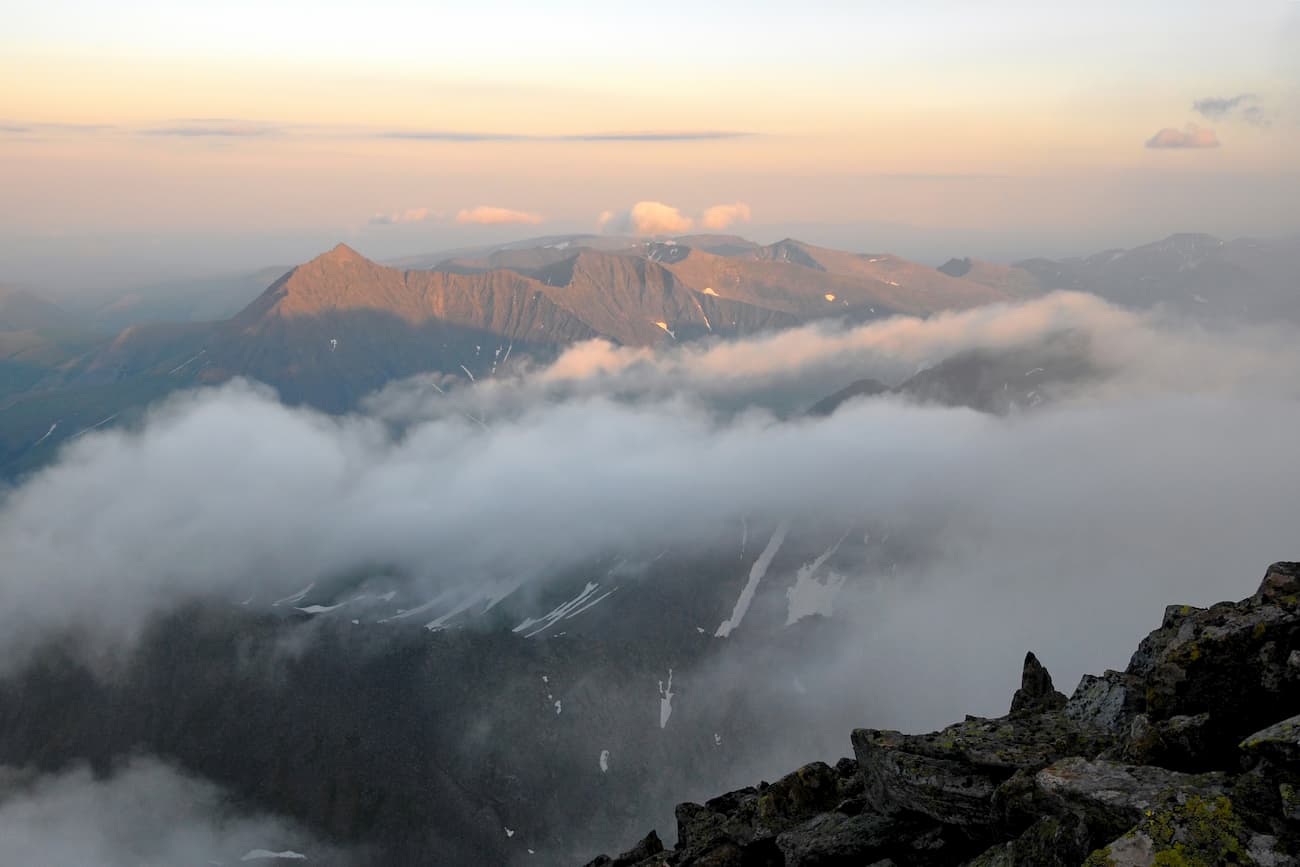
The Yugra is very famous for its ski resorts, the main of which are:
- The Cedar Ravine ski resort (Surgut city, Naberezhny Ave. 39/1)
- Three Mountains (Trekhgorie) ski resort (30 km from Nizhnevartovsk, Ermakovsky settlement)
- Stone Cape (Kamenniy Mys) ski resort (near the city of Surgut)
- Pine Urman ski resort ( Khanty-Mansiysk , Sportivnaya Str., 24)
The far-away lands of the Yugra are the blessed sanctuaries for many animals as the area is rather hostile to a human There are reserves, natural parks, wildlife sanctuaries here that aim to protect the national treasures of the lands. Having visited these regions once, you would crave for coming back again and again to feel that unique sense of unity with nature, to forget about the urban fuss and and hustles whatsoever. The harsh but beautiful nature of this extraordinary area leaves an indelible trace in the soul of every person.
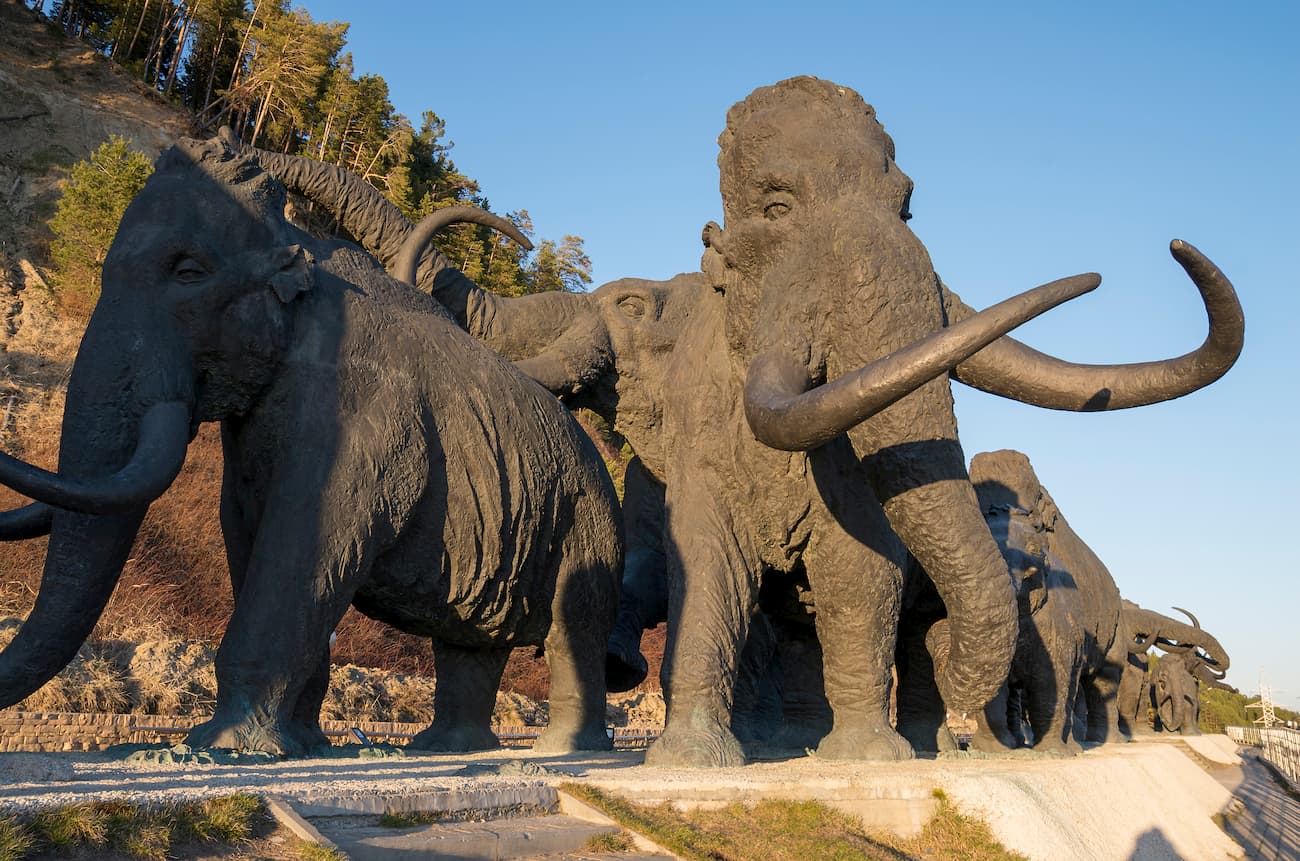
On the territory of the district there are 25 specially protected natural areas, the most famous of them are:
- The reserves are two: the Malaya Sosva Reserve and the Yugan Reserve, the latter was established in 1982 as the largest reserve of taiga landscapes. The purpose of the reserves was to study unobtrusively and carefully preserve the endemic flora and fauna without disturbing natural processes. Hunting and economic activities are prohibited here, which is important for the preservation of natural ecosystems.
- The natural parks are the Samarovsky Chugas Nature Park, the Siberian Sloping Hills (Uvaly), the Numto (also called Lake Numto), and the Kondinskie Lakes.
These reserves and natural parks offer tourists their own excursion programs to make visiting their territory much more enjoyable and educational.
The Samarovsky Chugas Nature Park is located in the center of Khanty-Mansiysk , on a small hill between the Ob and Irtysh rivers.
The territory of the Siberian Sloping Hills (Uvaly) natural park is 350 km away from the city of Khanty-Mansiysk . You can get there by helicopter or by plane. The office of the park is located at 7a Pionerskaya Street, Nizhnevartovsk.
The Kondinskie Lakes Natural Park is located 380 km from Khanty-Mansiysk . Half of the park is covered with swamps, but there is also a recreational area. There you can rest, swim, do some amateur fishing, picking berries (cowberries, cranberries) and mushrooms is permitted. There is only one independent walking route here, it runs for 3 km in the deep forest. It is a cool place for kids since the park is equipped with sports grounds, a pool and a small zoo where the kids can interact with brown bear cubs. What else, try the TaiPark, it is a rope course running at the height of 2.5 meters, having 15 stages, the full length is 125 meters. There is an opportunity to order water walking tours in the town of Sovetsky, which can be reached by train from Khanty-Mansiysk .
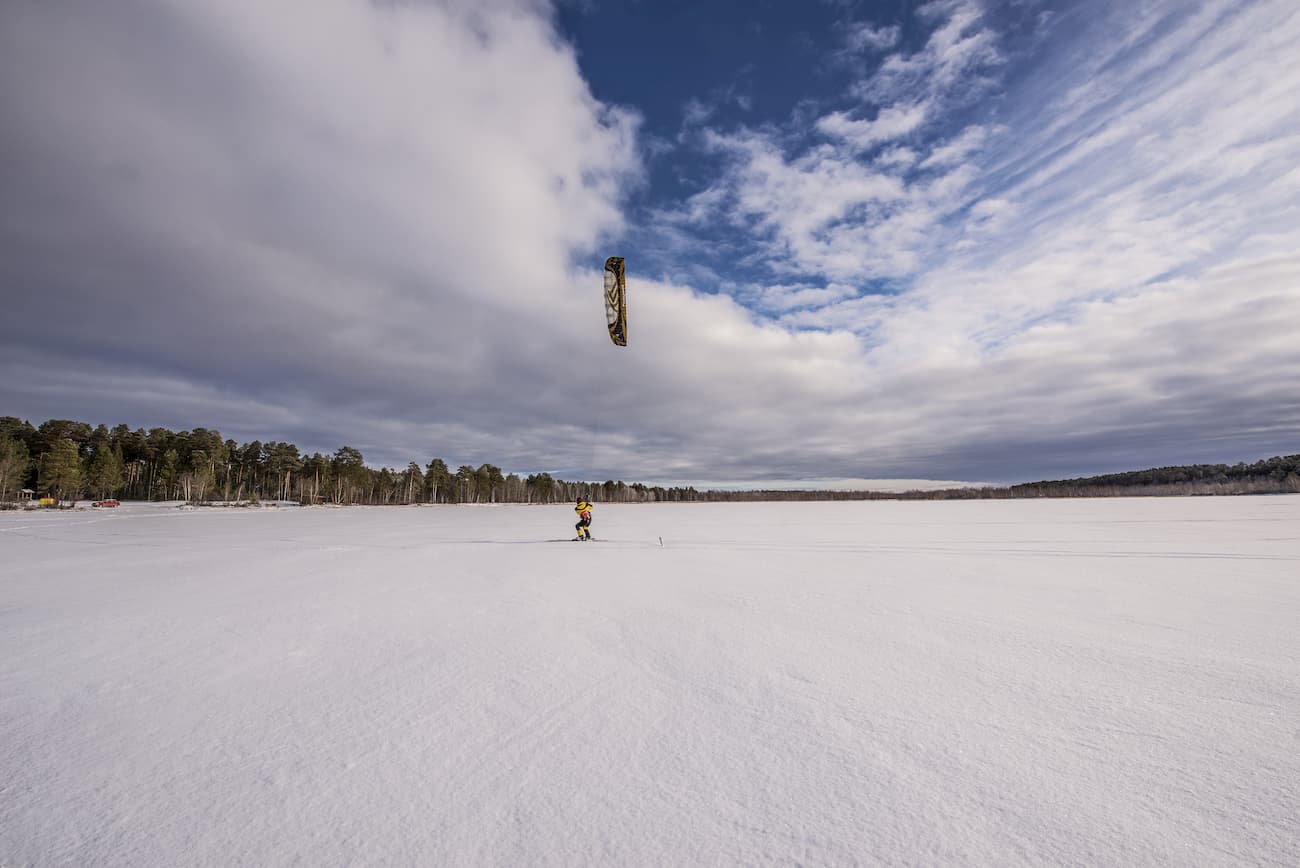
The Numto Nature Park is located almost in the center of the West Siberian Plain, in the Beloyarsk district of the Khanty-Mansi Autonomous Area, 300 km from the city of Surgut and 200 km from the town of Beloyarsk. It is located on the border of Yugra and Yamalo-Nenets Autonomous Area. The administration of the park is located at 2, Beloyarsky micro-district, 4a. The territory of the natural park is a treasure trove of archaeological and ethnocultural monuments. As of today, there have been discovered 20 architectural monuments, including fortified and not fortified settlements, places of worship abandoned by the peoples who lived here from the Stone Age to almost the present day. Researchers have also found 65 monuments of ethnic value, the main of which are worship objects, sacred places and cemeteries.
The Malaya Sosva Reserve includes several subordinated territories and sanctuaries, including Lake Ranghe-Tour. The reserve offers a 4-km walking guided route that gets the visitors introduced to the typical features and characteristics of flora and fauna of the region. The route is called Bear Trail and you can spot bears there (don’t come close though, we’ve already written how to behave if you meet a bear in the wild). Also, you will see the River Malaya Sosva, some marshes, ancient cultural monuments and other nice sights. Permission to visit the reserve can be obtained from the administration of the reserve at Lenina Str. 46, town Sovetskiy.
As to the Yugan Nature Reserve , it is inaccessible to common hikers who are afraid of flying since there are no roads to it. The only way to get there is taking a helicopter ride. You also must obtain a permit in the administration of the reserve, go accompanied by employees of the reserve, and only on special transport of the reserve (motorboat, snowmobile). The central manor of the Reserve and the administration are located in the village of Ugut. To get to this village, you should first go to the town of Surgut, then go to the town of Pyt-Yakh, and from it there is a road to the village of Ugut. It is about 100 km from Ugut to the southern border of the reserve i, and another 25 km to the nearest cordon. The administration works from Monday to Friday. You can request a permit via mail at [email protected] , order a guided tour at [email protected]
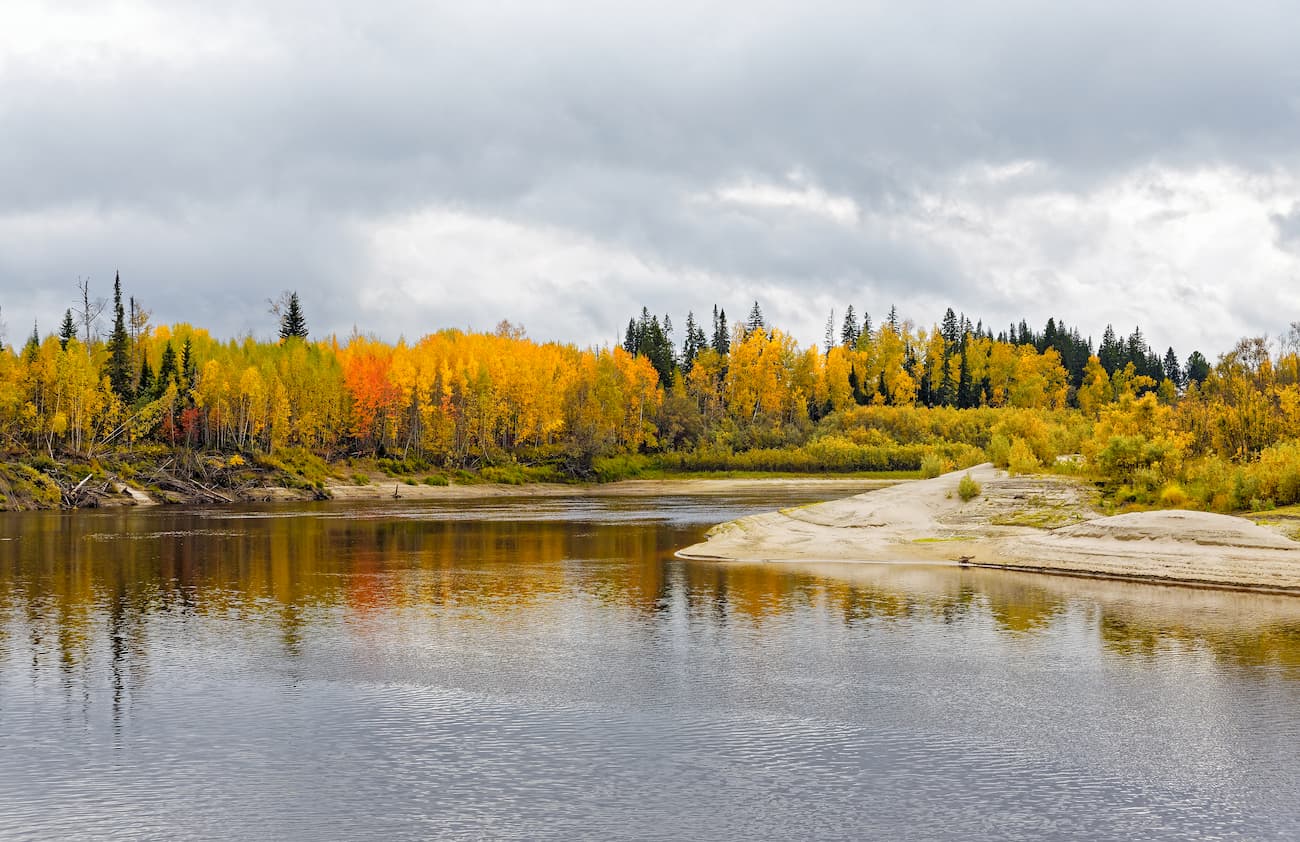
The Yugra lands are heaven for water sports aficionados. They can have some awesome fishing or go rafting along such rivers as: the river Naroda, the Deep Sabun, etc.
The Naroda River is 140 km long. It is the left tributary of the Manya River located in the Ob River basin. The river has its origin on the south-western slope of Mount Narodnaya . It is a mountain-taiga river with rapids, swifts, numerous rolls, which attracts interest among water tourists. However, it is usually not rafted very often.
The Deep Sabun River flows through the territory of the Siberian Sloping Hills Nature Park. The park has developed multi-day water routes. It is possible to raft along the river in summer and to go skiing along it in winter.
The Kondinskie Lakes are a system of lakes along the left bank of the Konda River. The largest lake is the Arantur, with pine forests on the northern side and sandy beaches well equipped for a nice relaxing me-time. The water heats up well in summer. The small river Okunevaya and the river Maly Akh flow into the lake. The Maly Akh comes in on the west side and connects lake Arantur with Lake Pon-Tour. This lake is the richest in fish, and there is also a parking lot for fishermen here. The streams connect Pon-Tour with small lakes Krugloe and Lopukhovoye. When you look at Lopukhovoe lake, you feel as if you have found yourself in a fabulous place: more than half of its surface is covered with white lilies, as well as yellow flowers of the water-beans. Then the river Big Akh, which flows into the river Konda, connects all the lakes into a single system. Along the river there are many archeological monuments such as forts and settlements which have paths to them. The southernmost lake of the park is Ranghe-Tour.
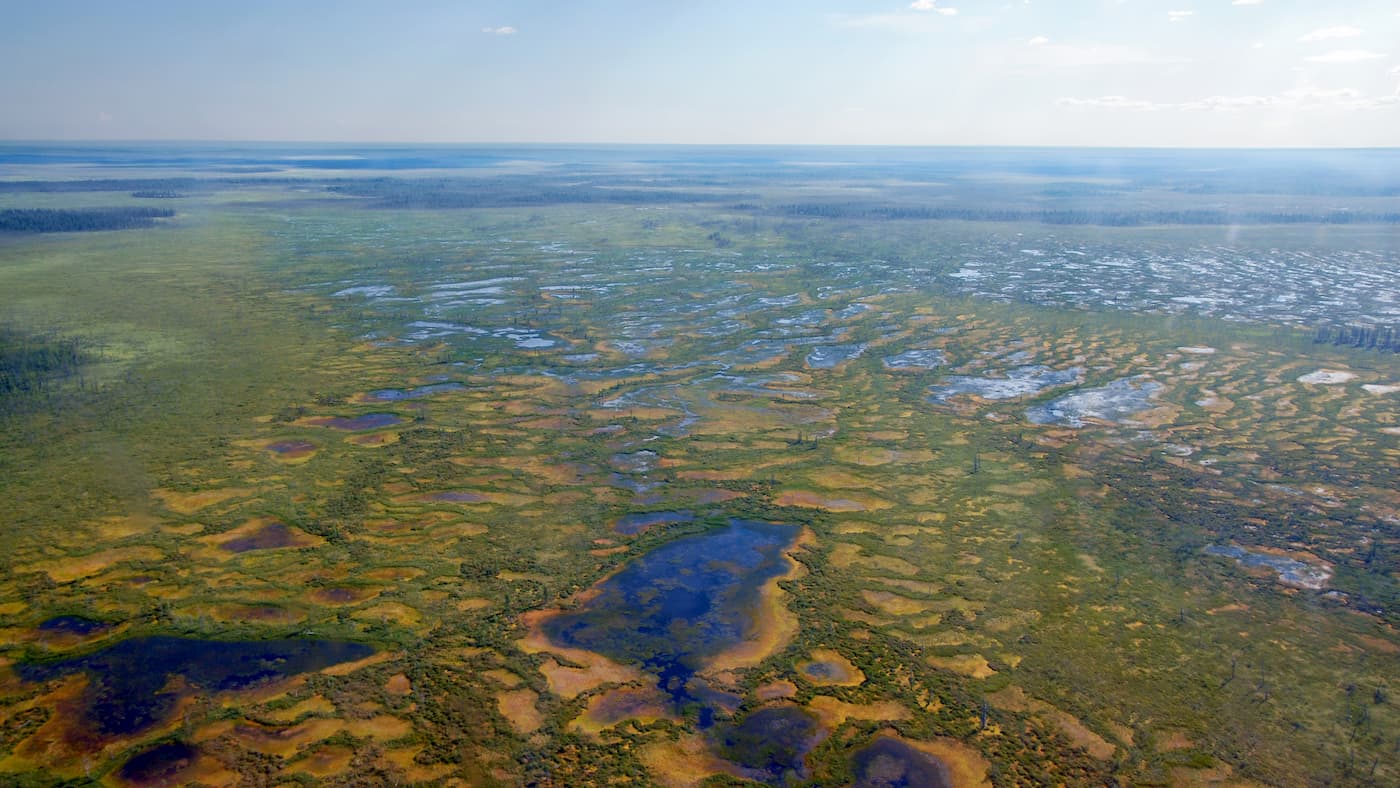
Yugra is not the easiest destination and not the most accessible, but the effort is well worth it. You should first get to the capital of Khanty-Mansiysk Autonomous Area – the city of Khanty-Mansiysk either by air or by train.
Khanty-Mansiysk is based on the premises of the former village Samarovo founded in 1582. It used to be the territory of the Khanty people and a pit stop for coachmen who rode their wagons across the country. The village was founded by Russian Count Samara, thus the name Samarovo. The modern city actually began to develop in 1930 because amidst the Siberian taiga there finally started to appear stone houses on the high bank of the Irtysh River. In 1940, the village was renamed into Khanty-Mansiysk by the name of the peoples living on this territory – the Khanty and the Mansi, and in 1950 it received the status of a town.
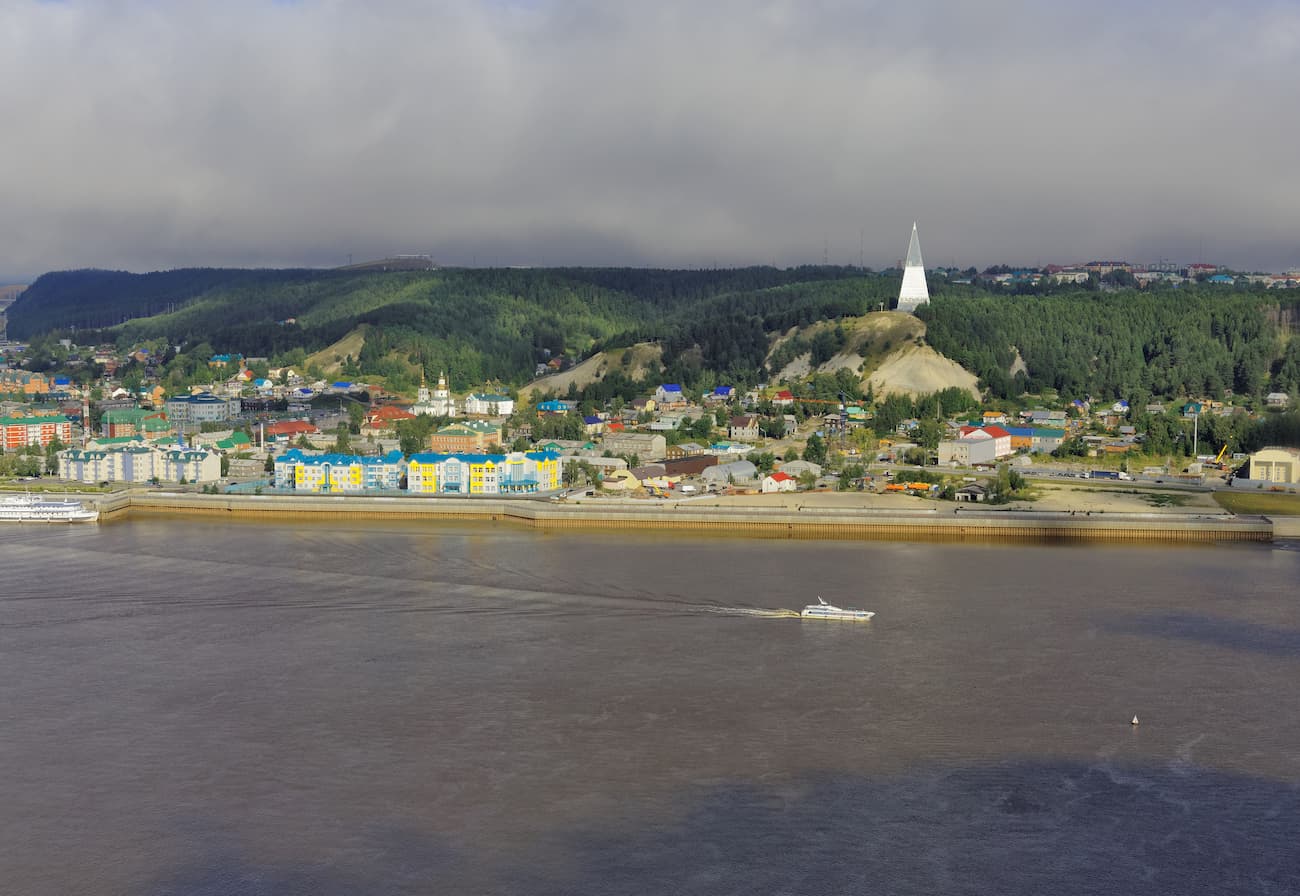
The city has several attractions. Mount Samarovskaya is probably the biggest natural and scientific wonder. It divides the city in two parts and causes many concerns for urban developers who always wonder whether this mountain can move making the buildings slide or even sink in.
Another beauty is the century-old cedar grove that is within the city limits. The grove is a part of the natural park Samarovsky Chugas. The word chugas in the language of the Khanty means a lonely hill in the low river floodplain.

The park is one of the main attractions of the city, it hosts an open-air ethnographic museum called the Torum Maa, a cultural and tourist complex called Archaeopark, a biathlon center. Kids and adults, nature lovers and fans of culture love this place dearly.
A memorial sign to Yugra's discoverers is installed on top of the Samarovsky Chugas. It is a tall stele pyramid divided into three portions. On the lower level, there is a restaurant, on the second level is a small museum, and on the third level there is an observation deck, 40 m above the ground, with a magnificent view of the Irtysh River and the river port. The pyramid is decorated by the bas-relief depicting the discoverers of the region, from the 16th-century Count Samara to the geologists of the 20th century.
Another trademark of Khanty-Mansiysk is the State Museum of Nature and Man. The museum hosts a gallery and a workshop of a famous artist G. Rayshev.
The city has a lot of small monuments generously spread around the city. There is the Khanty family resting on a camp, this monument is near the airport building. You can take a pic at the Golden Tambourine located at the intersection of Gagarin Street and Mira Street. Connoisseurs of culture should also visit the Sun – the Theatre of Ob-Ugrian Peoples, it is the world's first professional theatre of Khanty and Mansi peoples. And if you are travelling with kids, the Khanty-Mansiysk Puppet Theatre is a must-visit. In the period from May to October, you can take a boat ride to the confluence of two rivers – the Ob and the Irtysh. Yugra Service Co. operates such cruises, you can find more information locally at their address Tobolsk Trakt street 4, Khanty-Mansiysk .
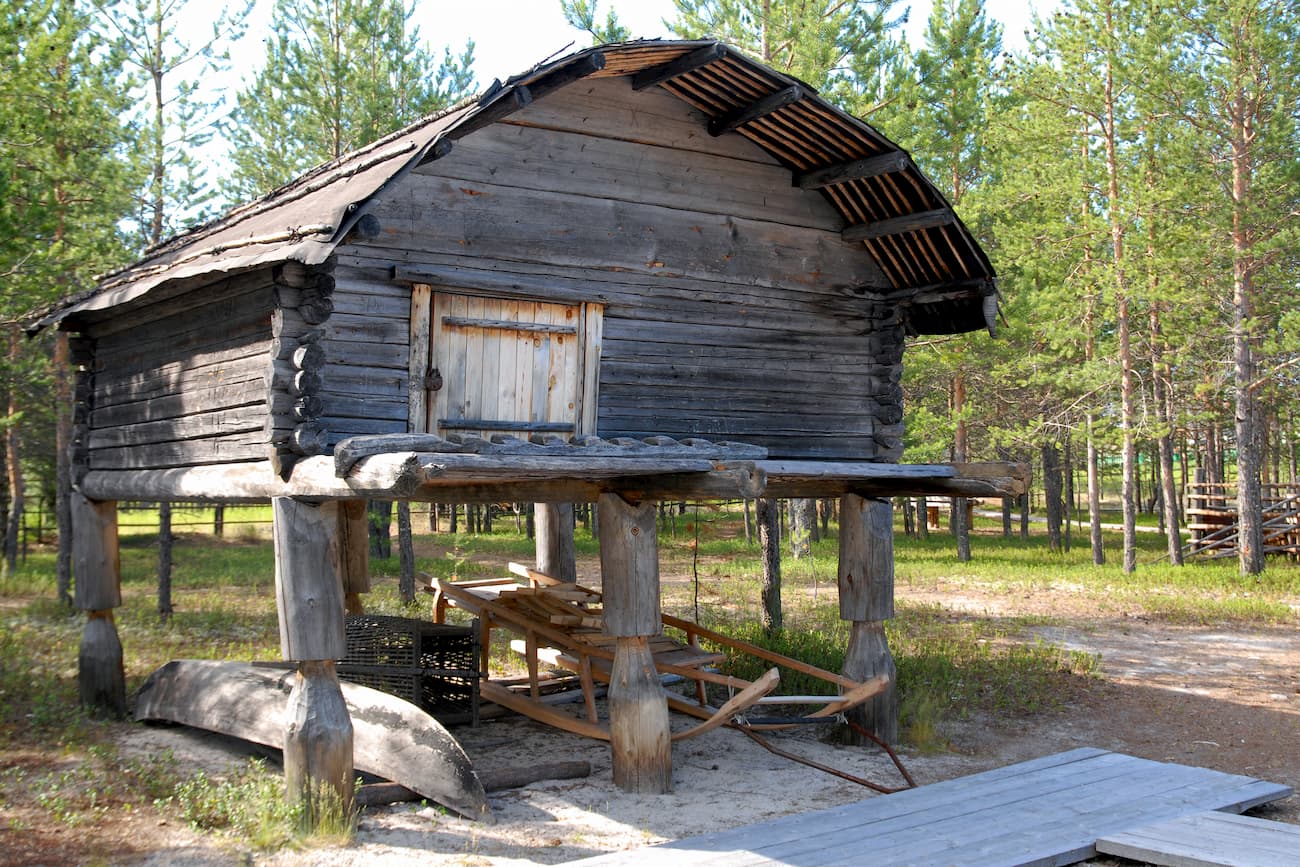
Explore Khanty-Mansiysk Autonomous Okrug – Ugra with the PeakVisor 3D Map and identify its summits .

PeakVisor Hiking Maps
Be a superhero of outdoor navigation with state-of-the-art 3D maps and mountain identification in the palm of your hand!
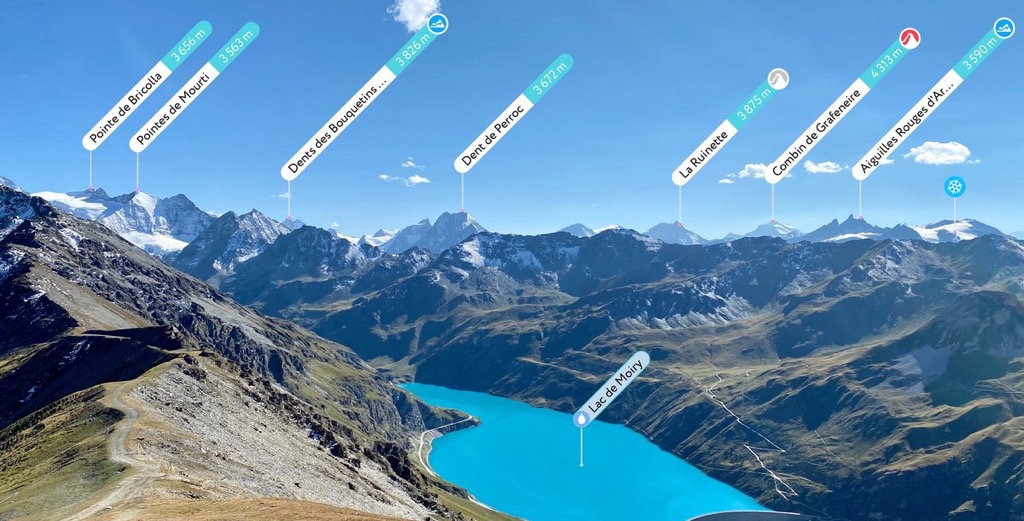

- Visit Our Blog about Russia to know more about Russian sights, history
- Check out our Russian cities and regions guides
- Follow us on Twitter and Facebook to better understand Russia
- Info about getting Russian visa , the main airports , how to rent an apartment
- Our Expert answers your questions about Russia, some tips about sending flowers

Russian regions
- Chelyabinsk oblast
- Khanty-Mansi okrug
- Nefteyugansk
- Nizhnevartovsk
- Kurgan oblast
- Sverdlovsk oblast
- Tyumen oblast
- Yamalo-Nenets okrug
- Map of Russia
- All cities and regions
- Blog about Russia
- News from Russia
- How to get a visa
- Flights to Russia
- Russian hotels
- Renting apartments
- Russian currency
- FIFA World Cup 2018
- Submit an article
- Flowers to Russia
- Ask our Expert
Khanty-Mansi Autonomous Okrug - Yugra, Russia
The capital city of Khanty-Mansi okrug: Khanty-Mansiysk .
Khanty-Mansi Autonomous Okrug - Yugra - Overview
Khanty-Mansi Autonomous Okrug - Yugra is a federal subject of Russia, part of the Urals Federal District. Khanty-Mansiysk is the capital city of the region.
The population of Khanty-Mansi Autonomous Okrug - Yugra is about 1,702,200 (2022), the area - 534,801 sq. km.
Khanty-Mansi okrug flag
Khanty-mansi okrug coat of arms.
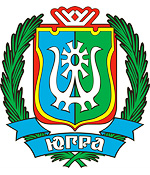
Khanty-Mansi okrug map, Russia
Khanty-mansi okrug latest news and posts from our blog:.
21 March, 2020 / Nizhnevartovsk - the view from above .
8 November, 2017 / Surgut - the view from above .
4 March, 2017 / Khanty-Mansiysk - the view from above .
12 February, 2016 / Khanty-Mansi Autonomous Okrug from above .
21 May, 2013 / The most powerful thermoelectric power station in Russia .
More posts..
History of Khanty-Mansi Autonomous Okrug - Yugra
Yugra is the historical homeland of the Ob-Ugric peoples: Khanty, Mansi, Nenets, and Selkup. They were engaged in hunting, fishing, cattle breeding. After the Turkic peoples pushed them from south to north, these peoples had to apply their skills in more severe conditions. It is at this new location Ugrians began to domesticate deer.
In the first half of the second millennium AD, the main features of the material and spiritual culture of Khanty, Mansi and forest Nenets were formed. It is believed that since then they have not undergone major changes. Since the second half of the 13th century, a new factor in the development of the region was its entry into the Golden Horde.
At the end of the 14th century, the collapse of the Golden Horde led to the emergence of a separate Tyumen Khanate. In 1495, the Siberian Khanate appeared. At that time the basic principles of political, administrative and socio-economic organization of this territory were developed. The region was called Ugra or Yugra.
More historical facts…
The region became part of Russia in the end of the 16th century. From the middle of the 18th century, this region became a place of exile for criminals. December 10, 1930, Ostyako-Vogul national okrug was formed with the center in the settlement of Samarovo. Construction of a new center began 5 km away from it. In February 1932, the new center of the region was named Ostyako-Vogulsk.
In 1934, the first steps to find oil and natural gas in the region were taken. October 23, 1940, Ostyko-Vogul national okrug was renamed Khanty-Mansi national okrug and Ostyko-Vogulsk was renamed Khanty-Mansiysk. August 14, 1944, the region became part of Tyumen Oblast. On January 27, 1950, Khanty-Mansiysk became a city.
On September 21, 1953, in Berezovo, the first natural gas in Western Siberia was produced. On June 23, 1960, the first oil in Western Siberia was discovered near Shaim. This was followed by the discovery of many other oil and natural gas fields. Along with the industrial exploitation of oil and gas fields, the timber industry developed rapidly.
By the end of the 20th century, under the influence of demographic and socio-economic developments the Khanty-Mansi region in fact lost its national basis. On July 25, 2003, Khanty-Mansi Autonomous Okrug was renamed Khanty-Mansi Autonomous Okrug - Yugra.
Khanty-Mansi Autonomous Okrug - Yugra views
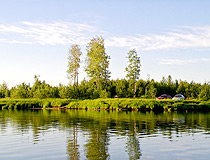
Rest on the lake in Yugra
Author: O.Frolov
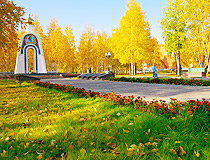
Golden autumn in the Khanty-Mansy region
Author: Leonid Karpushin
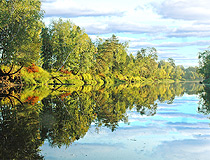
Beautiful nature of Yugra
Khanty-Mansi Autonomous Okrug - Yugra - Features
The name of the region is associated with the self-names of the two main groups of northern peoples - Khanty and Mansi. In the Middle Ages, the word “Yugra” was used to refer to peoples and lands beyond the Northern Urals.
This region, located in the middle of Russia, occupies the central part of the West Siberian Plain. Its territory stretches from west to east for almost 1,400 km, from north to south for 900 km. The area of the region is comparable to France or Ukraine.
The climate is temperate continental characterized by rapid change of weather especially in spring and autumn. Winters are long, snowy and cold with frosts below minus 30 degrees Celsius. Summers are short and warm. From the west this region is protected by the Ural mountains, from the north it is open to cold arctic air.
The highest points of the region are Mount Narodnaya (1,895 m) in the Polar Urals and Mount Pedy (1,010 m) in the Northern Urals. Two major rivers flow in Khanty-Mansi autonomous okrug: the Ob (3,650 km) and its tributary the Irtysh (3,580 km). About 30% of the territory is covered by swamps. There are more than 300,000 lakes surrounded by marshes and forests.
The largest cities of Khanty-Mansi Autonomous Okrug - Yugra are Surgut (396,000), Nizhnevartovsk (280,800), Nefteyugansk (128,700), Khanty-Mansiysk (106,000), Kogalym (69,200), Nyagan (58,500). Today, only about 32,000 people are representatives of indigenous peoples: Khanty, Mansi and Nenets. Half of them live in the traditional way.
This region is very rich in oil and natural gas. The largest oil and natural gas fields are Samotlorskoye, Fedorovskoye, Mamontovskoye, Priobskoye. There are also deposits of gold, coal, iron ore, copper, zinc, lead and other mineral resources.
The climate is not favorable for agriculture. Most of the agricultural products and foodstuffs is brought from other Russian regions. Waterways and railways are the main shipping ways. The total length of the pipeline network is 107,000 km.
About 60% of Russian oil is produced in Khanty-Mansi Autonomous Okrug - Yugra. In total, more than 10 billion tons of oil were produced here. The total number of oil and natural gas fields discovered is 475. In the coming decades, the Khanty-Mansi region will remain the main resource base of hydrocarbons in Russia.
Tourism in Khanty-Mansi Autonomous Okrug - Yugra
Yugra has unique natural, cultural and historical resources for the development of recreation and tourism. On the territory of the region there are historical and cultural monuments, as well as modern infrastructure for lovers of cultural, educational, recreational tourism, and outdoor activities. International events (sports competitions, festivals and forums) help to open this place to foreigners as an amazing corner of the globe.
Khanty-Mansi Autonomous Okrug - Yugra has a number of wonderful natural sites worthy of attention: two nature reserves (“Malaya Sosva” and “Yugansky”), four nature parks (“Samarovsky Chugas”, “Siberian ridges”, “Numto”, “Kondinskie lakes”), ten monuments of nature, archeological complexes (“Barsova Mountain”, “Saygatino”, Sherkaly settlement).
Holidays of the northern peoples are also popular among tourists: Reindeer Herder’s Day, Day of indigenous Peoples of the North “Crow day”, Fisherman’s Day, Bear holiday and others.
Active and extreme types of tourism (skiing, snowboarding, kiting) are gaining in popularity. There are seven ski resorts in the region. In summer, travelers can go rafting on mountain rivers of Siberia. Tourists can also go on a special oil tour that includes a visit to the oil-producing companies. They learn about the oil industry and the history of oil exploration in Siberia.
Khanty-Mansi Autonomous Okrug - Yugra is a region of endless charm of the beautiful nature and modern tourist facilities. True lovers of northern landscapes and local cultures will be able to fully enjoy the incomparable scenery and generous hospitality in Ugra.
Khanty-Mansi okrug of Russia photos
Khanty-mansi autonomous okrug scenery.
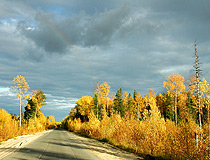
Road through autumn forest in Khanty-Mansi Autonomous Okrug
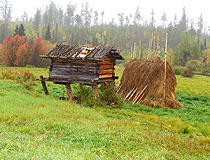
Deep winter snow is not a problem in Khanty-Mansi Autonomous Okrug
Author: Chernenko
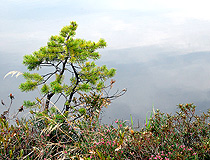
Yugra scenery
Author: Sergej Fedotov
Pictures of Khanty-Mansi Autonomous Okrug - Yugra
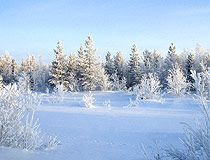
Winter in Khanty-Mansi Autonomous Okrug
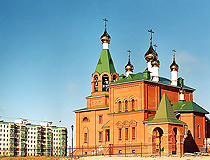
Orthodox church in Khanty-Mansi Autonomous Okrug
Author: Alexey Borodko
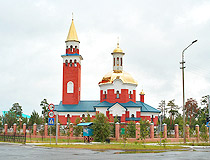
Church in Khanty-Mansi Autonomous Okrug
Author: Peter Sobolev
- Currently 2.80/5
Rating: 2.8 /5 (189 votes cast)
- Places - European, Western and Northern Russia
KHANTY-MANSI AUTONOMOUS OKRUG: RUSSIA’S MAIN OIL-PRODUCING REGION
Khanty-mansi autonomous okrug.
Khanty-Mansi Autonomous Okrug is usually called Yugra or Ugra for short. It is named after two indigenous groups native to the region — the Khanty and the Mansi, known collectively as Ob-Ugric people. It covers 534,800 square kilometers (206,500 square miles), is home to about 1.53 million people and has a population density of 2.9 people per square kilometer. About 91.5 percent of the population live in urban areas. Khanty-Mansiysk is the capital, with about 80,000 people. The largest cities are Surgut, Nizhnevartovsk, and Nefteyugansk.
As of the early 2010s, about 51 percent of the oil produced in Russia and 7.3 percent of the world’s supply came from Khanty–Mansi Autonomous Okrug, making the region very important economically. More than 10 billion tons of oil has been was recovered from the okrug’s fields so far . The okrug contains around 70 percent of Russia’s developed oil fields, about 450 in total, including Samotlor, which is the largest oil field in Russia and the sixth largest in the world. Gas was first found in the region in 1953 and oil began to be produced in 1960.
As far as tourism is concerned this autonomous okrug combines unique historical, cultural and natural resources, the most important of which is the way of life of its indigenous peoples. If you visit a nomad camp, you can ride on a reindeer sleigh, live in a chum tent, learn to harness a deer, ride a sled and taste stroganina (slices of frozen meat) and patanka (thinly sliced frozen fish). In the Sub-Arctic Ural Mountains, it is popular to climb Mount Narodnaya — the highest peak of the Urals — and go fishing.
The winter in Khanty-Mansiysk is cold. Snow lies on the ground about 200 days of the year and temperature of -50 degrees, C are not unusual. The summer are short but sometimes can get surprisingly hot, with temperature over 30 degree heat. The best time to visit is May or or September, when it is not yet cold and the annoying mosquitos, no-see-ums and midges are not out in full force.
Getting There: By Plane: The flight Moscow or St. Petersburg to Khanty-Mansiysk is about three hours. To Surgut, three and a half. To Nizhnevartovsk, four hours. The cost of an adult round-trip economy class ticket is from 8,000 to 12,000 rubles, depending on the airline. The airport of Nizhnevartovsk. Website: /nvavia.ru. Phone +7 (3466) 49-21-75. By Train: you can reach Surgut, Nizhnevartovsk, Yugorsk, Nyagan and Kogalym. Trains do not reach Khanty-Mansiysk. The nearest station to it, Demyanka, is located 240 kilometers away. From it to the capital of Ugra there are minibuses. A round-trip ticket for a berth in a compartment from Moscow to Surgut is 14,000 rubles. The trip takes two days.
By Car: Two roads lead to Yugra. The main one is the Federal highway R404 Tyumen-Khanty-Mansiysk. This is convenient if you are going to the eastern part of the okrug. If you need to go to the western part or to the capital, it is better to go by the Northern route — through Perm, Serov, Ivdel and Yugorsk. The road quality on both routes is pretty good, but there is much less traffic on the northern one. If you are traveling in Ugra by car, do not forget to refueling. The distances gas stations can reach 200 kilometers or more. It is a good idea to have a canister of fuel in the trunk just in case. Regional Transport By Bus: From Khanty-Mansiysk to Surgut is 300 kilometers, Bus tickets range from 1100 to 1400 rubles. From Surgut to Nizhnevartovsk — 220 kilometers — bu bus costs about 1000 rubles. From Surgut to Kogalym — 80 kilometers — is about 500 rubles. The bus station in Nizhnevartovsk. Website: www.nvav.ru. Phone: 8 (3466) 45-72-97.
Accommodation in the Region: In all major cities there are a lot of hotels. The level of service is high everywhere, but the prices are also high: starting from 5,000-6,000 rubles for a standard price double room. It is much cheaper to rent apartments, at 1,500 to 2,500 rubles.
Khanty and Mansi
The Khanty (pronounced HANT-ee) are a group of Finno-Ugric-speaking, semi-nomadic reindeer herders. Also known as Ostyaks, Asiakh, and Hante they are related to the Mansi, another group of Finno-Ugric-speaking reindeer herders. Only about 60 percent of Khanty speak their native language and a much smaller percentage live in the forest. In the Khanty-Mansiisk District they are fa r outnumbered by other ethnic groups. [Source: John Ross, Smithsonian; Alexander Milovsky, Natural History, December, 1993]
There are about 23,000 Khanty. They live primarily in Khanty-Mansi Autonomous Okrug , a region along the northern tributaries of the Ob River in northwestern Siberia about 1,100 miles northwest of Moscow and 200 mile south of the Arctic Circle. Their cousins, the Mansi, also live there. The region has been damaged by oil and natural gas exploration and production.
The Mansi, known in the old days as the Voguls, are close relatives of the Khanty and live primarily in Khanty-Mansi Autonomous Okrug.. There are around 8,000 or so Mansi. The Mansi have traditionally survived by fishing, hunting and gathering, The hunting methods they employed and the animals they went after was determined by what was available. Often they relied chiefly on fishing and dried enough fish during the summer to last through the winter. They hunted elk, bears, wild reindeer with spears, bows and arrows and traps until the 19th century when the began using firearms. Elk were caught with a system of traps and triggered bows.
Many Mansi still hunt. They use dogs and firearms and go chiefly after muskrats and squirrels. Sable are hunted with nets and guns by a pair of hunters: one who flushes the sable from its den into the net and the other who shoots the animal. Their traditional religion is often aimed at securing a successful hunt.
KHANTY factsanddetails.com ;
Oil and Natural Gas in Khanty-Mansi Autonomous Okrug
Oil was prospected in the West Siberia from the beginning of the 20th century. Local people reported finding discharges on the surface from time to time. The first Soviet prospectors arrived to Ugra in 1935. They confirmed the presence of natural oil seeps on the Ugan river in the Surgut area. Over 2.5 tons of equipment were delivered to the drilling pad by air. Other supplies were hauled by horses, since the nearest railroad ran about 1,000 km away from the prospecting site. The place was very remote and was only accessible during the winter. The early workers lived in a camp under extremely cold conditions. [Source: Technologies Department of Ugra]
In 1953, natural gas was found for the first time in Western Siberia, in Berezovo, about 300 kilometers northwest of Khanty-Mansiysk. in Berezovo. In 1960 the first oil was found in the vicinity of Shaim. Soon after oil fields were discovered in Megion, West Surgut, Pokur, Vatinsky, Mamontovo, Salym, Pravdino and other places. The biggest discovery was in 1965, when the first oil gushed out from the marshland at Samotlor. One of the largest oil fields in the world, it has already produced 2.67 billion tons of oil.
Oil quality in the region is quite high. Some is light, some is black, but most of it is brown. Its characteristics and composition can differ significantly even within the same field. In 2013 255.1 million tons of oil were produced in Khanty-Mansi Autonomous Okrug and eight new fields were brought into development. Total gas production in Ugra was 33,0 billion cubic meters in 2013. This was mostly associated petroleum gas.
Owing to its explored and proven raw hydrocarbons resources, production capabilities, industrial infrastructure and oil fields commercial viability Yugra will remain Russia’s main strategic raw hydrocarbons resource base for the next several decades. Over 475 oil and gas fields have been discovered in the territory of the Khanty-Mansiysk Autonomous Okrug. Total length of the region's pipelines network is 107,000 kilometers.
Ob River (flowing northeast of Novosibirsk and Tomsk) is the forth longest river in the world if you include its major tributary the Irtysh River and the seventh longest without it. The westernmost of three great rivers of Asiatic Russia, the Ob is 3,650 kilometers (2,270 miles) long and is an important commercial waterway that transports goods back and forth between the Trans-Siberian Railway and the resource rich regions of northern Siberia. Since it is frozen over half the year activity on the river is concentrated mostly in the summer months. The Ob-Irtysh is over 5570 kilometers (3461 miles) long
The Ob and the Irtysh River begin in the Altay Mountains, a range located near where Russia, China, Kazakhstan and Mongolia all come together, and flow northward. Although the Ob and the Irtysh begin at points within a couple of hundred miles of one another the two rivers don't join until the Irytysh has traveled over 1,600 kilometers (1000 miles). Once the two rivers have dropped down out of the highlands the meander lazily through open steppes, then rich farmland, and meet in flat, swampy plains, where the width of river ranges between a half a kilometer and a kilometer and a half. The Ob then passes through fir and spruce forests of West Siberia, then through Arctic tundra before finally emptying into the Kara Sea, an arm of the Arctic Ocean. The Ob is one of the great Asiatic Russian rivers (the Yenisei and the Lena are the other two). According to the Guinness Book of World Records, it has the longest estuary (550 miles long and up to 50 miles wide) and is widest river that freezes solid. The mouth of the river on the Arctic Ocean is ice free only a couple of months a year. Huge flood sometimes form in the spring when high waters fed by melting snow and ice meet still frozen section of the river.
The main city on the Ob is Novosibirsk. Parts of the Ob are very polluted and nearly void of life. At the mouth of the river so much land has been degraded by gas exploration that huge chunks of permafrost land have literally melted into the sea. [Source: Robert Paul Jordan, National Geographic, February 1978, ♬]
Traveling on the Ob and Irtysh Rivers
There is a regualr ferry the Ob and Irtysh Rivers that travels between Omsk – Tobolsk – Khanty-Mansiysk – Berezovo and Salekhard (Yamal Nenets Autonomous Region). Omsk and Tobolsk both have train stations on the Trans-Siberian Railway. Khanti-Mansiysk is accessible by bus from Tyumen, which has a train station. After Khanti-Mansiysk you are beyond the road network. As well as the major stops listed on the route above, the boat also stops at plenty of isolated indigenous villages in between them. Salekhard is the only city in the world located exactly on the Arctic Circle.
The name of the ferry is the Rodina. It travels three times a month in June and September and four times a month in July and August. Going from Salekhard to Omsk: Day 1): departs Salekhard at 5:00pm; Dat 2) stops at Berezovo for 30 minutes ay 7:30pm; Day 3) stops at Oktobraskaya Market for one hour. Day 4) stops at Khanty-Mansiysk for two hours at 8:00am; Day 6) one hour stop in Tobolsk at 7:30. Day 9) arrive in Omsk at 3:00pm. Traveling the other direction, with the current, takes one third less time.
On the Salekhard - Tobolsk - Omsk trip on person posted on Lonely Planet’s Thorn Tree forum in 2013: “I'll start by saying that this boat is amazingly good value for money. Here some example prices. The first is for beds in the common area, similar to platzkart on the train, the second is for a bed in a private 4-, 6-, or 8 bed cabin and the third is for a bed in a private 2 bed cabin. 1) Salekhard - Omsk (8 days): 1162 / 1437 / 3926 roubles; 2) Salekhard - Tobolsk (5 days): 774 / 969 / 2632 roubles; 3) Tobolsk - Khanty-Mansiysk (2 days): 429 / 526 / 1394 roubles. Children go half price!
“Tickets can be bought in advance at the airport in Salekhard or on the boat itself an hour before departure (it's apparently never full). Most people get off at one of the stops in the first 24 hours when going south from Salekhard, leaving only one or two people in most of the cabins for most of the route. The beds are comfortable , both longer and wider than on trains. Everything is cleaned several times a day, there's a shower, laundry, restaurant with simple but tasty meals and alcohol. Breakfast about 70 roubles, lunch and dinner 150 - 300, beer 50 - 80, wine, vodka and so on also available. Theres also a small room where films are shown starting in the afternoon and a shop selling all sorts of useful stuff such as toiletries, mugs, books.
“You can walk around on deck as much as you want or sit and read a book on the benches up there. The scenery is more or less the same all the way - endless taiga forest with absolutely no sign of civilisation. There are a few villages such as Pitlyar for which the boat is their only access to the outside world and a couple of towns where you can get off the boat and walk around - Beryozovo 24 hours after Salekhard and Khanty-Manskiysk 3 days from Salekhard. From Khanty Mansiysk there are regular buses to Tyumen on the Trans Siberian which take 8 hours. At Tobolsk the boat stops next to the stunning kremlin, the only one in Siberia.
“Anyone can freely sail the whole route between Omsk and Pitlyar, a small village of 500 and the last stop before Salekhard. Salekhard and areas north are closed to outsiders, Russian or otherwise, unless they get a temporary permit. See the Yamal Peninsula link in my signature line for how to get this permit. Permit in hand, you can continue the journey north from Salekhard a further two days to Antipayuta, well beyond the Arctic Circle, with a similar level of comfort and price.
“It sails the whole route from June to September and once in October from Khanty-Mansiysk to Omsk. Check www.irsc.ru for timetables and fares. Only about half the boats from Salekhard go as far as Omsk, the rest stopping in Tobolsk. Eg in July and August, the most frequent sailing months, 6 boats go from Salekhard - Tobolsk each month but only 3 continue to Omsk. Check the timetable carefully when planning if you want to sail all the way to Omsk!”
Khanty-Mansiysk City
Khanty-Mansiysk is the capital of the Khanty-Mansiysk Autonomous Okrug and home to about 80,000 people. Despite its remote location and relatively small size, it has a Norman Foster skyscraper, world-leading medical center that is free and has hosted international film festivals, major sports events and political summits. How is this possible?: Oil wealth and close ties between local politicians and Russian President Vladimir Putin doesn’t hurt.
Khanty Mansiysk has showy headquarters for Russia’s main oil companies: Rosneft, Lukoil and Gazprom-Neft. Not far away enormous drilling towers rise and gas flares burn above the birch forests and pipelines cut through the landscape. Around 90 percent of the city’s economic revenues are tied directly to the oil and gas industries.
The city is located in a picturesque area of the West Siberian lowland, where steep hills overgrown with age-old dwarf pine, rise up from the right bank of the mighty Irtysh River. Two of the largest rivers of Siberia — the Irtysh and the Ob — merge twenty kilometers from the city. Not far from town the “Coniferous Urman” ski complex with a cable car. The cedar forest of the Samarovsky Chugas Park has trails for cross-country skiing and hiking. For children there is a water park and a small zoo in the village of Shapsha 20 kilometers from the city. In the summer, there are boat tours to the confluence of the Ob and Irtysh, where you can see the floating chapel-lighthouse.
Places of interest to tourists the gold domes of the Church of Christ’s Resurrection; the gallery of the artist Gennady Raishev; the Geology, Oil and Gas Museum, which traces the history of Western Siberian oil and gas development; and the open-air Archeopark, which has bronze sculptures of Pleistocene animals like mammoths and woolly rhinosl a sporting venue that hosts international ice and skiing events. A new triple concert hall dominates the center of the town. Servicing villages that cannot be reached by road, is an ultra-modern hospital ship that cruises Ob and Irtish rivers treating the sick on board. Complex operations are supervised by surgeons from the central hospital in Khanty-Mansiysk using TV monitors that relay pictures by satellite.
Accommodation: There are several hotels of different levels in Khanty-Mansiysk. The best service and, accordingly, the highest prices at the Ugra valley Valley Complex. At the Tarey business hotel prices start from 4800 rubles per night; at the Olympics Hotel, from 3000 rubles per night. If you want to save money, it is better to rent an apartment: a one-bedroom can be found in the area of 1500 rubles per day.
History of Khanty-Mansiysk City
The first written mention of the town of the Khanty Prince Samara, where the modern city of Khanty-Mansiysk is located, dates back to 1582. In 1637, a settlement of Russian coachmen was formed in the place of this town. It was named after the Prince Samara — Samarovsky Yam.
By the beginning of the 19th century, Samarovsky Yam turned into a large village of Samarovo and became the center of crafts and trade thanks to the favourable location on the river trade routes. In 1931, a few kilometers from the village of Samarovo, a workers settlement Ostyako-Vogulsk was built, which became the district center of the Ostyako-Vogulsk national district. The settlement began to be built up with new industrial enterprises, administrative buildings, apartment houses, public and cultural institutions. By the end of 1950s, pebble roads were laid in the settlement.
In 1940, Ostyako-Vogulsk was renamed Khanty-Mansiysk, and the district was renamed Khanty-Mansiysk, since at that time Ostyak tribes began to be called Khanty, and Voguls tribes — Mansi. In 1950, Khanty-Mansiysk received the status of a city, including Samarovo village. Since 1977, Khanty-Mansiysk has become the administrative center of the Khanty-Mansiysk Autonomous Okrug formed from the national district.
Sights in Khanty-Mansiysk
Torum Maa Open Air Museum (Ulitsa Sobyanina, 20, Khanty-Mansiysk) is located on one of the seven holy hills, in the Samarovsky Churas Nature Park, and features authentically reconstructed buildings and dwelling of indigenous peoples of the North, including a Mansi winter camp and traditional Khanty residential and household structures dating to the early-mid-19th century. You can learn more about hunting culture of the Khanty and Mansi on a special hiking trail.
At the museum you can find a 15th-17th century smithy, reconstructed using materials from archaeological excavations of Emder city; displays of idols and protectors of this land. The museum is especially active during traditional holidays of the Ob river Ugric people when Khanty and Mansi come from all over to celebrate. The most popular of these are: Tylasch pori (the Rite of Offering to the Moon), which takes place in February or March when the moon is waxing; Crow Day, which symbolizes the beginning of spring and is celebrated in April; the International Day of the World’s Indigenous Peoples, which is celebrated globally on August 9; and the main holiday for the museum staff and visitors — the anniversary of the Torum Maa Museum on October 30.
Archeopark Cultural and Tourist Complex (in Khanty-Mansiysk) covers 3.5 hectares near a rock outcropping and includes a geological monument, the Samarov Villiage Archaeological Monument (dating from the 11th-18th centuries), and a the Sculpture Park with giant bronze sculptures of mammoths and other Pleistocene-era animals and Paleolithic humans.
The park was set up where the bones of mammoths and other pre-historic animals have been found. The first large bones and tusks were found in the 19th century, when the northern region came to be called the “elephant homeland.” For local inhabitants, the archaeological findings along the river banks were not so uncommon. The bones had been in demand as a decorative material and therapeutic powder.
All the sculptures were created in cooperation with paleontologists, who made sure that the ancient inhabitants of this area look as authentic as possible. Some of the sculptures, for instance, rhinoceroses, were made in life size, while others are two to three times larger. The height of the largest sculpture in the Mammoth composition is eight meters. The sculptures are lit up at night. The little mammoth is named KoJourka. The sculpture probably has the world's only sign that prohibits mammoth climbing.
Sights Near Khanty-Mansiysk City
Floating Chapel-Beacon in Honor of Saint Nicholas (20 kilometers Khanty-Mansiysk) opened in 2013 near the confluence of two mighty Siberian rivers — the Ob and Irtysh. Blessed by Bishop Pavel of Khanty-Mansiysk and Surgut and consecrated by Kirill, Patriarch of Moscow and all Rus, it is Russia's first floating chapel-lighthouse. The chapel is eight meters high, it weighs 10 tons and is fixed on a pontoon. Below the cross crowning the chapel there is a beacon light. There are eight illuminated alcoves with icons. The chapel is not intended to hold a service inside. Only maintenance personnel looking after the power supply can moor to it.
Originally the idea of building the chapel was suggested by S. Sandulov, president of the local branch of the Association of Ports and River Transport Owners. For river transport workers the Ob-Irtysh confluence is a special place. And for the local people — Khanty and Mansi — this is a sacred area. However, for a long time there was no monument or sign to mark the place. At the confluence of the Ob and Irtysh people have traditionally made a wish by throwing a coin into the water. The water here is considered to be sacred and many tourists wash themselves with the water of the two rivers.
Silava Ethnographic Center (near Uray, 250 kilometers east of Khanty-Mansiysk) and the Ela Hoth community of indigenous peoples "was founded in 2008 to preserve features of the traditional culture and way of life on the site of the former village of New Silava. Visitors can participate in Mansi ceremonies and celebrations and Mansi cooking and engage in recreational activities such as skiing, sledding, tubing, ice sliding and riding a snowmobile "Buran" in the winter; and pick mushrooms, berries, medicinal plants and go boating in the summer. The center may difficult to get to.
Swimming is possible in the cold Konda River. You can also go hiking on eco-trails and participate in various types of fishing and children's entertainment programs. The community has assembled a small museum of household items and fishing items. You can see how fishing camps were set up and a functioning bread oven and a machine for weaving mats and try grinding flour at the mill and baking bread.
Priobskoye Field
The Priobskoye field (65 kilometers east of Khanty-Mansiysk, and 100 kilometers west of Nefteyugansk) is an oil field that occupies an area of 5,466 square kilometers (2,110 square miles. It is located along both banks of the Ob River, and is serviced by the town of
The field was discovered in 1982. The northern three-quarters of the field was controlled by YUKOS via unit Yuganskneftegaz, and began oil production in 2000. In 2004, Yuganskneftegaz was bought by Rosneft, which is now the operating company of that portion of the field. The southern quarter of the field was controlled by Sibir energy, which began a joint venture with Sibneft to develop the field, with volume production beginning in 2003. Sibneft subsequently acquired complete control of the field via a corporate maneuver to dilute Sibir's holding. Sibneft is now majority controlled by Gazprom and renamed Gazprom Neft.
In 2007, the field was producing 675,000 barrels per day: 550,000 barrels per day in the northern Rosneft area and 125,000 barrels per day in the southern Gazprom Neft area. For 2008, Rosneft reported a growth of production to 680,000 barrels per day, while Gazpromneft's share grew slightly. In 2009, Gazprom Neft produced 160,000 barrels per day in its share of the field. In September 2019, Russia’s finance ministry approved tax breaks for developing the Priobskoye oilfield, Russia’s largest, to oil giants Rosneft and Gazprom Neft, Alexei Sazano.
Surgut (300 kilometers east of Khanty-Mansiysk by road) located on the Ob River and is one of the few cities in Russia that has a larger population than the capital of its federal subject. It is home to about 375,000 people compared to 80,000 in Khanty-Mansiysk. Surgut is home to the largest port on the Ob River, the largest road-railway junction in northwest Siberia. Two of the world's most powerful power plants — the SDPP-1 (State District Power Plant 1) and SDPP-2 (State District Power Plant 2), which produce over 7,200 megawatts — are also there supply most of the region with relatively cheap electricity.
Surgut's economy is tied to oil production (the city is known as "The Oil Capital of Russia") and the processing of natural gas. The most important enterprises are the oil firm Surgutneftegaz and Surgutgazprom (a unit of Gazprom). The Surgut-2 Power Station providing Energy for the city is the largest gas-fired power station in the world. In addition, there are factories: gas processing, stabilization of condensate, motor fuel. Enterprises food (meat processing, dairy, etc.) industry, timber industry. Manufacture of building materials (production of reinforced concrete structures, etc.).
The city is served by the Surgut International Airport, which offers flights to Moscow, St. Petersburg, Dubai, Irkutsk, and a number of other cities. Through Surgut are trains to the east (in Novy Urengoy, Nizhnevartovsk), to the south-west (in Tyumen, Moscow, Novosibirsk, Ufa, Chelyabinsk, Yekaterinburg). Road P-404 connects Surgut with Tyumen. Places to stay in Surgut include the Ob, Den, Ark, and Center hotels
Old Surgut is a historical and ethnographic complex with 14 restored copies of wooden houses that once stood in the city. Among them “house of nature”, “House of local historian”, “house of Cossacks”, “House of indigenous peoples of the North” and others. Every winter, the center hosts a festival of ice sculptures.
Barsova Mountain Tract (west of Surgut) is located he state natural and archaeological park. Barosova Gora stretches for eight kilometers along the right Bank of the Ob river. Along the tract there are remains of ancient buildings, sanctuaries, burial grounds, some dating back to the Stone Age. In total, there are more than 400 archaeological sites on Barsova Mountain. It is better to visit this place in the summer or early autumn. The standard tour lasts about three hours.
Nefteyugansk
Nefteyugansk(30 kilometers west of Surgut) is located to south of the Ob River and is home to about 125,000, people. It was founded on October 16, 1967, after an oil field had been discovered on a small forest clearing in the middle of the taiga marshland in 1961. The main and the only big enterprise in the city, Yuganskneftegaz, was founded in February 1966. The name 'Yugansk' comes from the indigenous Khanty name of a small river near the city, neft' means oil in Russian, and gaz is natural gas.
The economy of the city remains petroleum-based, and was a major center for the Russian oil enterprise YUKOS, which owned Yuganskneftegaz. In fact, the "Yu" in "YUKOS" comes from the "yu" in "Nefteyugansk" and therefore from "Yuganskneftegaz". The other three letters come from the oil-refining factory "Kuibyshev-Org-Sintez", situated in Samara.
Nefteyugansk has been at the center of violence and drama involving YUKOS. On June 26, 1998, city mayor Vladimir Petukhov was shot dead on the way to his office. Before his murder, Petukhov had been on a hunger strike demanding that the chairmen of municipal and district tax offices be dismissed from their positions and a criminal case against Yukos be filed on counts of tax evasion. Petukhov's widow later on called for an investigation into Mikhail Khodorkovsky's role in events. Back then Khodorkovsky was head of Yukos. On September 20, 2005 Dmitry Yegortsev, acting mayor of Nefteyugansk, was assaulted and wounded with a knife. After the stabbing of Yegortsev, Igor Gribanov took over City Hall as acting mayor. Just a few months later, he died of carbon monoxide poisoning at his home on January 6, 2006. Since January 2005, Yuganskneftegaz has been owned by the state-owned oil company Rosneft. [Source: Wikipedia]
Hay Al Ruv Ethnographic Center of Indigenous Peoples of the North is an 1.5-hectare open air ethnographic which recreates the Khanty camp and has a house, storage shed, traditional tent, "red" tent for visitors and a bread oven.
Nizhnevartovsk
Nizhnevartovsk (220 kilometers east of Surgut) is home to about 250,000 people. Since the 1960s, the town has grown rapidly in the coat-tails of the Western Siberian oil boom due to its location beside the Samotlor oil field along the right bank of the Ob River. The presence of the petroleum industry has made it one of the wealthiest cities in Russia. Accommodation is available at the Hope, Aviator, Venice and Waters hotels.
Nizhnevartovsk is situated in the Sredneobskaya Lowland of West Siberian Plain, in the middle course of the Ob River on its northern bank. It remained a relatively small settlement until the 1960s when the Soviet authorities began widespread prospecting for the petroleum industry in the Western Siberia region, discovering the Samotlor oil field, one of the largest oil fields in the world, beneath the nearby Lake Samoltor to the north of Nizhnevartovsk. During the early boomtown years, Komsomol volunteers were brought in from across the country to construct the city, whose population soared from 2300 people in 1959 to 15,663 in 1970.
Lake Samotlor is the home of the massive Samotlor oil field. A visit to the lake is part of a local oil tour, during which you can see how oil is produced, and study the history of the development of fields in Western Siberia. Tourists visit the Samotlor oil field, the school of drilling masters and eat in the dining room with the oilmen. The tours are hard to arrange on the spot, They need to booked in advance through a travel company. Oil tours can be combined with a visit to a Khanty camp.
Samotlor Field
Samotlor Field (near Nizhnevartovsk) is the largest oil field of Russia and the sixth largest in the world. Owned and operated by Rosneft, it is located at Lake Samotlor in Nizhnevartovsk district and covers 1,752 square kilometers (676 square miles). The field was discovered in 1965; development began in 1967 and first oil was produced in 1969. Nearby Nizhnevartovsk went from being a small village into a booming oil city as Samotlor became the most important oil production base of the Soviet Union. After breakup of the Soviet Union the field was owned by Samotlorneftgaz and TNK-Nizhnevartovsk, which later formed TNK-BP.
At Samotlor Field a total of 2,086 well clusters (containing more than 17,000 wells) have been built and about 2.6 billion tons of oil has been produced. The peak production occurred in 1980 when Samotlor produced 158.9 million tons of oil. Production has been in decline ever since, although according to TNK-BP the field production has stabilized over the past few years.
The proven reserves are approximately 44 billion barrels. The field is 80 percent depleted with water-cut exceeding 90 percent. At the end of the 1990s, production rate dropped to 300,000 barrels per day. However, through an aggressive exploration program and application of cutting-edge technologies TNK-BP had raised production up to 750,000 barrels per day. TNK-BP plans to invest US$1 billion per year for maintaining oil production at the level of 30 million tons per year. The production of oi in 2012 was 332,782 barrels per day. The estimated oil in place is 4 billion barrels. The oil comes from Cretaceous formations.
Ural Mountains
Ural Mountains are the traditional dividing line between Europe and Asia and have been a crossroads of Russian history. Stretching from Kazakhstan to the fringes of the Arctic Kara Sea, the Urals lie almost exactly along the 60 degree meridian of longitude and extend for about 2,000 kilometers (1,300 miles) from north to south and varies in width from about 50 kilometers (30 miles) in the north and 160 kilometers (100 miles) the south. At kilometers 1777 on the Trans-Siberian Railway there is white obelisk with "Europe" carved in Russian on one side and "Asia" carved on the other.
The eastern side of the Urals contains a lot of granite and igneous rock. The western side is primarily sandstone and limestones. A number of precious stones can be found in the southern part of the Urals, including emeralds. malachite, tourmaline, jasper and aquamarines. The highest peaks are in the north. Mount Narodnaya is the highest of all but is only 1884 meters (6,184 feet) high. The northern Urals are covered in thick forests and home to relatively few people.
Like the Appalachian Mountains in the eastern United States, the Urals are very old mountains — with rocks and sediments that are hundreds of millions years old — that were one much taller than they are now and have been steadily eroded down over millions of years by weather and other natural processes to their current size. According to Encyclopedia Britannica: “The rock composition helps shape the topography: the high ranges and low, broad-topped ridges consist of quartzites, schists, and gabbro, all weather-resistant. Buttes are frequent, and there are north–south troughs of limestone, nearly all containing river valleys. Karst topography is highly developed on the western slopes of the Urals, with many caves, basins, and underground streams. The eastern slopes, on the other hand, have fewer karst formations; instead, rocky outliers rise above the flattened surfaces. Broad foothills, reduced to peneplain, adjoin the Central and Southern Urals on the east.
“The Urals date from the structural upheavals of the Hercynian orogeny (about 250 million years ago). About 280 million years ago there arose a high mountainous region, which was eroded to a peneplain. Alpine folding resulted in new mountains, the most marked upheaval being that of the Nether-Polar Urals...The western slope of the Urals is composed of middle Paleozoic sedimentary rocks (sandstones and limestones) that are about 350 million years old. In many places it descends in terraces to the Cis-Ural depression (west of the Urals), to which much of the eroded matter was carried during the late Paleozoic (about 300 million years ago). Found there are widespread karst (a starkly eroded limestone region) and gypsum, with large caverns and subterranean streams. On the eastern slope, volcanic layers alternate with sedimentary strata, all dating from middle Paleozoic times.”
The fauna of the vertebrate animals in the Reserve includes 19 fish, 5 amphibian and 5 reptile. Among the 48 mammal species are elks, roe deer, boars, foxes, wolves, lynxes, badgers, common weasels, least weasels, forest ferrets, Siberian striped weasel, common marten, American mink. Squirrels, beavers, muskrats, hares, dibblers, moles, hedgehogs, voles are quite common, as well as chiropterans: pond bat, water bat, Brandt's bat, whiskered bat, northern bat, long-eared bat, parti-coloured bat, Nathusius' pipistrelle. The 174 bird bird species include white-tailed eagles, honey hawks, boreal owls, gnome owls, hawk owls, tawny owls, common scoters, cuckoos, wookcocks, common grouses, wood grouses, hazel grouses, common partridges, shrikes, goldenmountain thrushes, black- throated loons and others.
Mount Narodnaya: the Highest Mountain in the Urals
Mount Narodnaya (700 kilometers northwest of Khanty-Mansiysk) is the highest mountain in the Urals. Also known as Naroda and Poenurr and "People's Mountain", it is 1,894 meters (6,214 feet) high. It lies in in Khanty–Mansi Autonomous Okrug but is only 500 meters east from the border of Komi Republic. The name is derived from the nearby Naroda River.
Mount Narodnaya is the highest point in European Russia outside the Caucasus and rises 1,772 meters (5,814 ft) above the landscape. Narodnaya is located in the Ural mountains water divide, and therefore on the border between Europe and Asia: The mountain is formed with quartzites and metamorphosed slates of the Proterozoic Eon and Cambrian Period. There are some glaciers on the mountain. Also, there are sparse forests of larch and birch in the deep valleys at the foot of the mountain. The slopes of the mountain are covered with highland tundra.
Mount Narodnaya was identified in 1927. If you ascend from the territory of Ugra, you first need to get to the village of Saranpaul (by helicopter from Berezovo, in the winter you can snowmobile), then about 180 kilometers to overcome by all-terrain transport to the camp site “Desired”, where you can climb Narodnaya and Manaragu. The cost of the tour, depending on the time of year, transport and service varies from 15,000 to 200,000 rubles, with a lot of the cost depending on whether you use a helicopter or not..
The easiest route to the summit is a technically easy hike on the moderate north-west slope. Depending on snow and ice conditions, crampons may be required. The south wall of Narodnaya is steeper and less commonly used to reach the summit. Accommodation: The cost of living at the camp site “Desired” — from 2300 rubles per day. In the forest in tent-for free.
Numto Natural Park
The Numto Natural Park (400 kilometers north of Surgut) is in the center of the Western-Siberian plain. The park covers 7,217 square kilometers and was created in 1997 to preserve the unique natural complexes of the Siberian Uvaly and protect the places where the the northern Khanty and forest Nenets live and work. The area is also inhabited by many animals and birds included osprey, white-tailed eagle, golden eagle, red-footed falcon, gyrfalcon, and others.
Because of its remoteness and difficulty to access, the Numto lake area remained a “blank space” during the development of Siberia. It was explored properly only in the early 20th century. It was first described by A. Dunin-Gorkavitch, who reached the place with reindeer teams in November 1901. He wrote: “Thus, during this journey I was able to explore the Kazym River and the watersheds of four other rivers: Kazym and Nadym on one side, Pima and Trom-Yugan on the other, as well as the Samoyed Lake Numto, known as “the lake of God”. The lake is located at the following coordinates: 63°30'N 41°30'E. It's oval in shape and has a narrow sandy spit from the northwest”.
The traveler gives a rather detailed description of some of the area's features: “...to the south from the lake, some 35 kilometers away, there is a watershed of four- rivers, from which the Kazym River begins. The watershed area is actually a tundra with huge hills up to 64 meters high with bogs in between. And these very bogs have springs and that is where the rivers Kazym, Nadym, Pim, and Trom-Yugan begin”.
Numto Lake was a kind of a sanctuary for peoples of the northern Ob. It was worshiped like a living creature. Even fishing was prohibited there. Some of these religious bans still exist; for example, it is not permitted to chop ice with an axe, fix anchoring poles in the lake bottom or block the connection between the lake and the Ukhlor Gulf with nets. With the coming of the winter, the Khanty and Nenets people come to Holy Island to offer a deer in sacrifice.
Image Sources: Wikimedia Commons
Text Sources: Federal Agency for Tourism of the Russian Federation (official Russia tourism website russiatourism.ru ), Russian government websites, UNESCO, Wikipedia, Lonely Planet guides, New York Times, Washington Post, Los Angeles Times, National Geographic, The New Yorker, Bloomberg, Reuters, Associated Press, AFP, Yomiuri Shimbun and various books and other publications.
Updated in September 2020
- Google+
Page Top
This site contains copyrighted material the use of which has not always been authorized by the copyright owner. Such material is made available in an effort to advance understanding of country or topic discussed in the article. This constitutes 'fair use' of any such copyrighted material as provided for in section 107 of the US Copyright Law. In accordance with Title 17 U.S.C. Section 107, the material on this site is distributed without profit. If you wish to use copyrighted material from this site for purposes of your own that go beyond 'fair use', you must obtain permission from the copyright owner. If you are the copyright owner and would like this content removed from factsanddetails.com, please contact me.

COMMENTS
Tutti i nostri annunci di yachts usate tra i 30 e i 35 metri in vendita da privati e professionisti ai migliori prezzi. Annunci verificati. Al fine di garantire un utilizzo ottimale del nostro sito e beneficiare degli ultimi aggiornamenti di sicurezza, ti consigliamo di aggiornare il tuo browser.
Cerca tra gli 879 mega yacht disponibili per la vendita su YachtWorld, il sito di annunci nautici più grande del mondo. Filtra per marca, prezzo, anno, lunghezza, paese e altre caratteristiche.
Find Azimut Grande 35 Metri boats for sale in your area & across the world on YachtWorld. Offering the best selection of Azimut boats to choose from. ... Azimut Yachts ⁄ / Grande 35 Metri; Azimut Grande 35 Metri boats for sale. Save Search. Clear Filter Make / Model: Azimut ... YachtWorld, 1221 Brickell Avenue, Miami, Florida 33131, USA ...
The Azimut Grande 35 Metri is one of the largest yachts in the Azimut lineup, featuring an exceptional level of luxury. She uniquely features a bow lounge with a pool, an elevated sundeck ideal for intimate moments with your loved ones as well as a large beach club. The yacht accommodates up to 10 guests in the utmost luxury, with a master ...
Trova 14 Azimut Grande 35 Metri in vendita vicino a te, con prezzi delle barche, foto e molto altro. ... Azimut Yachts Grande 35 metri Usate 12 annunci . Azimut Yachts Grande 35 metri Nuove 2 annunci . Contattateci Aiuto Chi Siamo Fai pubblicità con noi Pubblicizzare Con Noi Associazione Non Vendere Le Mie Informazioni Personali.
Selezione d'imbarcazioni di seconda mano: esplora l'assortimento di yacht di lusso usati di Azimut Yachts. Entra ora nel sito ufficiale di Azimut Yachts.
Drawing on Azimut carbon fiber technology and the expertise of Stefano Righini, who defined the concept and designed the exteriors, Grande 35 Metri offers unprecedented solutions for a boat this size, representing a masterpiece of style and space. A wide-body megayacht with the possibility of adding a third level for an additional sundeck, side ...
Trova la tua barca a motore ideale tra le Azimut Yachts disponibili su YachtWorld. Sfoglia le offerte di modelli nuovi e usati, con diverse opzioni di alimentazione, lunghezza, prezzo e posizione.
Brand new Azimut 35 METRI price depends on the chosen equipment, materials and building specs, while the list price in the standard version is: €12,600,000.00. Prices for 5 pre-owned Azimut 35 METRI yachts for sale vary from €9,300,000.00 up to €9,300,000.00. Consult your Azimut 35 METRI expert to find you a perfect yacht on the market or ...
Trova il tuo yacht usato ideale tra una selezione di modelli di Pershing, Ferretti, Azimut e altri. Consulta i prezzi, le caratteristiche e prenota una prova mare.
Azimut Grande 35 Metri Superyacht for Sale (2019), Lying Tuscany, Italy, Stabilized, Full Options, 5-Cabin Layout, Master on Main Deck. Sale & Purchase. ... Powered by twin 2400 Hp Diesel engines, this AZIMUT GRANDE 35 METRI motor yacht is capable of a top speed of 28 knots, and comfortably cruises at 22 knots, with a considerable range of 1500 ...
Yacht 35 metri. Pagamenti sicuri e spedizioni in tutta Italia. Con TuttoSubito acquisti quello che cerchi in sicurezza, anche a distanza. Yacht 35 metri: scopri subito migliaia di annunci di nautica, barche e accessori su Subito.it.
MY HEED was awarded by the World Superyacht Awards 2018 the perfect intuition shown by the designers of the Azimut Grande 35 Metri, which satisfies the modern owner's needs by offering plenty of space for life on board, both outdoors and below deck. Heed's interior layout sleeps up to 11 guests in 5 rooms, including a master suite, 2 VIP staterooms and 2 twin cabins with one pullman. She ...
Sarà molto più economico per te acquistare uno yacht usato, che è associato a un forte calo dei prezzi durante il funzionamento (il costo della manutenzione di uno yacht può essere del 10-20% all'anno del valore della nave e oltre). ... Larghezza 6.35 m; Bozza 1.78 m $ 995 000. 17:46 27.10.2021 . Mckinna 57 pilothouse. Fort Lauderdale ...
Vendita 35 metri: Barche e Yacht 35 metri, elenco di tutte le offerte di yacht e barche disponibili. Vendita 35 metri nuovo ed usato.
Tutti i nostri annunci di yachts usate tra i 20 e i 25 metri in vendita da privati e professionisti ai migliori prezzi. Annunci verificati. Al fine di garantire un utilizzo ottimale del nostro sito e beneficiare degli ultimi aggiornamenti di sicurezza, ti consigliamo di aggiornare il tuo browser.
We are pleased to present the Azimut 55 Fly 2008 Motor Yacht for Sale, a versatile and well-maintained vessel that offers a blend of comfort and performance.This Azimut 55 Fly features a spacious flybridge, a practical three-cabin layout, plus an additional crew cabin, ideal for extended trips.Powered by twin CAT 715 engines with 1980 hours, it cruises efficiently at 27 knots.
Annuncio vendita Ranieri International Cayman 35 Excutive usato | € 219.000 anno 2020, lunghezza 10.80 metri, motori 2 x 300 HP. Scheda tecnica 65106 inserita da Sestante Yachts. ... Richiedi ulteriori informazioni a Sestante Yachts sulla barca Ranieri International Cayman 35 Excutive. Il tuo nominativo. La tua email.
We are pleased to present the Azimut 55 Fly 2008 Motor Yacht for Sale, a versatile and well-maintained vessel that offers a blend of comfort and performance. ... 2022 Azimut Grande 35 Metri. €11,400,000 (£9,602,402) Tercan, Turkey. 2019 Azimut Grande 32 Metri. €9,300,000 (£7,833,538) ATHENS, Greece. 2023 Fiart SEAWALKER 43.
Ugra is a vast territory in West Siberia, named after the ancient Khanty and Mansi tribes. It has diverse landscapes, from taiga forests and tundra to the Nether-Polar Urals, and rich wildlife and water resources.
Learn about the history, geography, culture and economy of Khanty-Mansi okrug, a federal subject of Russia in the Urals. See photos, maps and facts about the region, its oil and gas resources, indigenous peoples and tourism opportunities.
Khanty-Mansi Autonomous Okrug is a federal subject of Russia in West Siberia, with a population of 1.7 million. It is home to the Khanty and Mansi, indigenous peoples of the Ugric branch of the Finno-Ugric language family.
The largest cities are Surgut, Nizhnevartovsk, and Nefteyugansk. As of the early 2010s, about 51 percent of the oil produced in Russia and 7.3 percent of the world's supply came from Khanty-Mansi Autonomous Okrug, making the region very important economically. More than 10 billion tons of oil has been was recovered from the okrug's fields ...